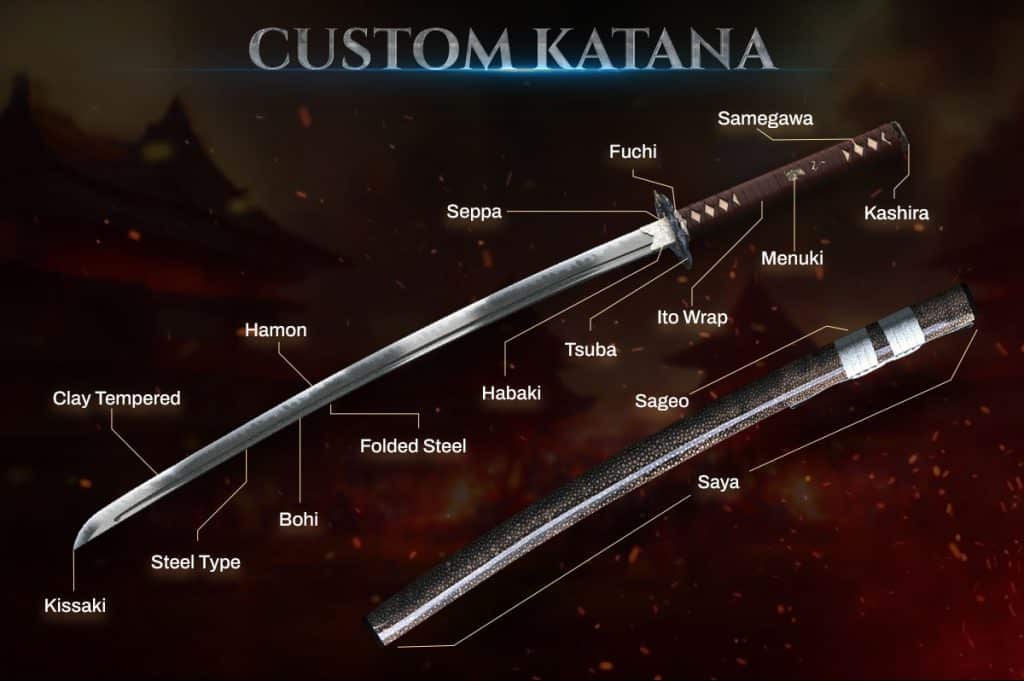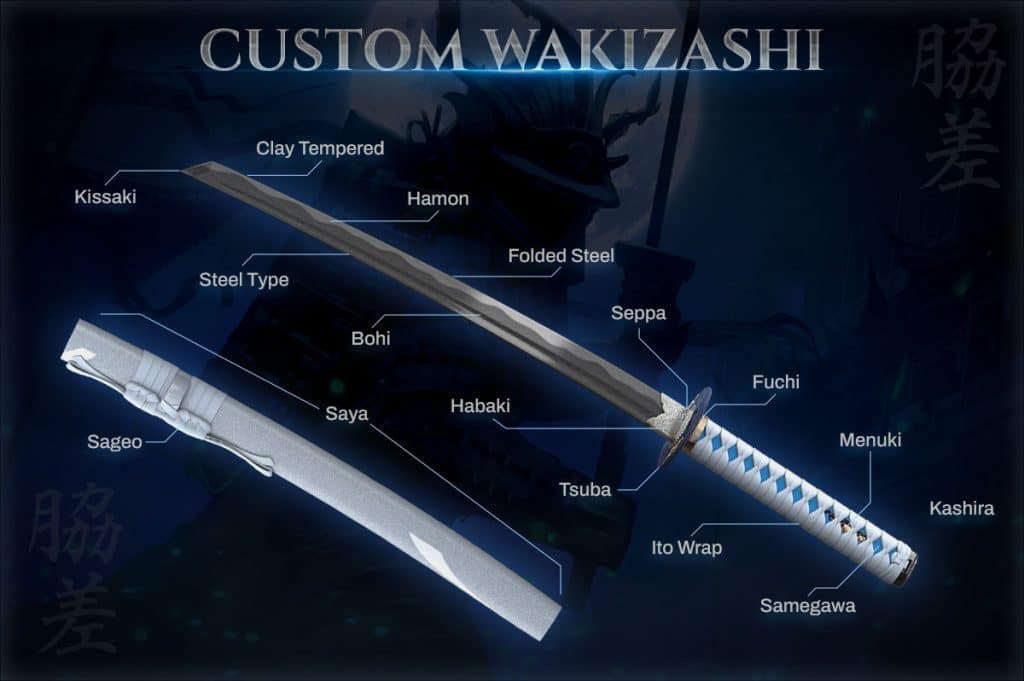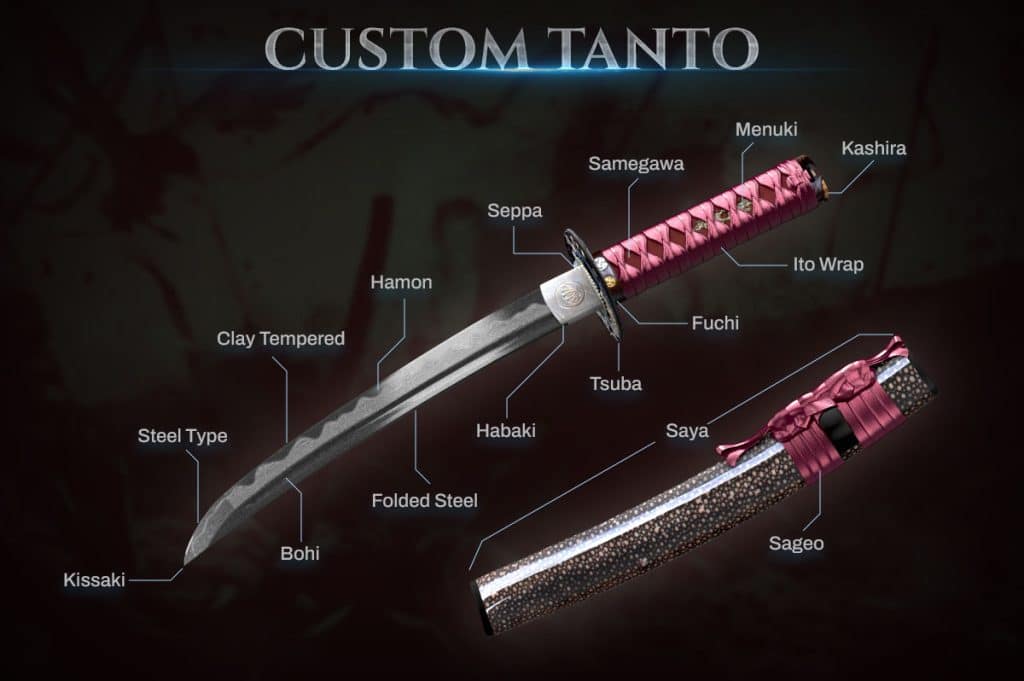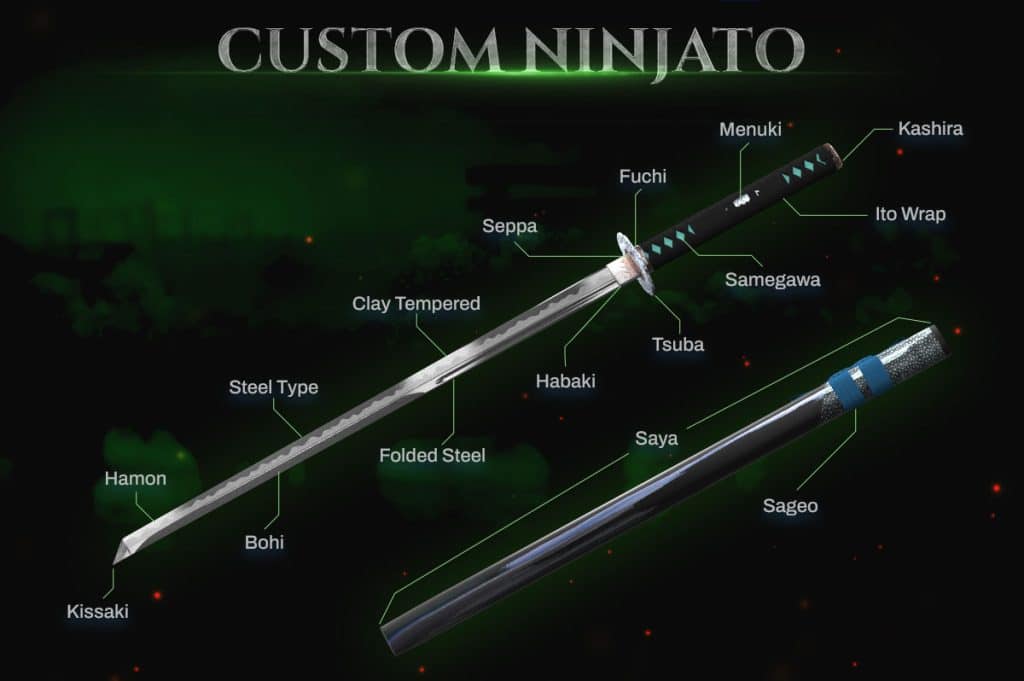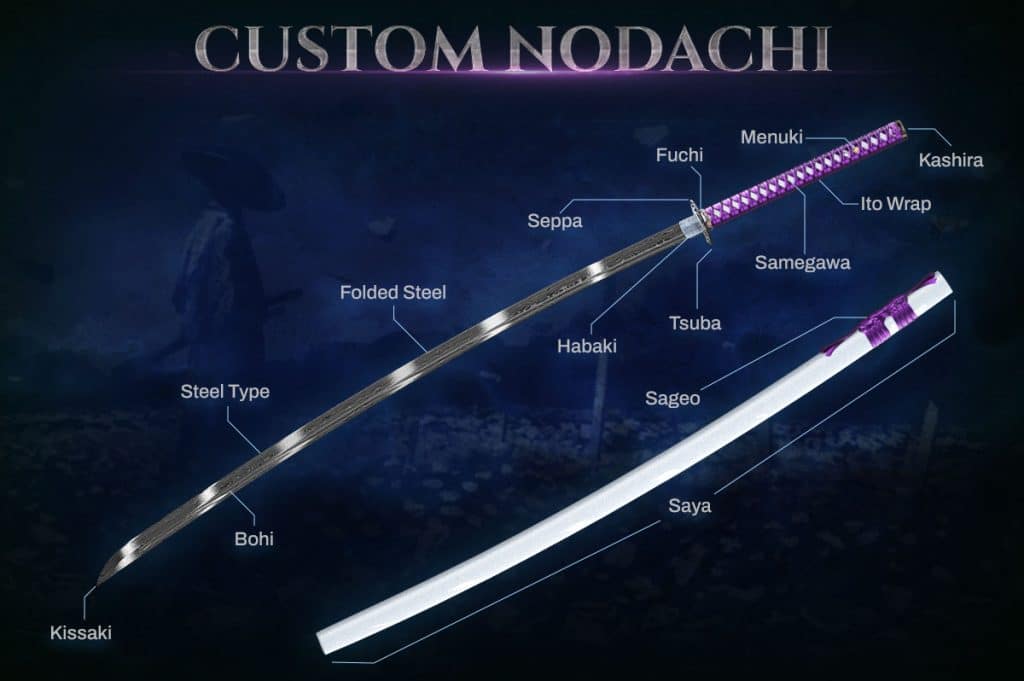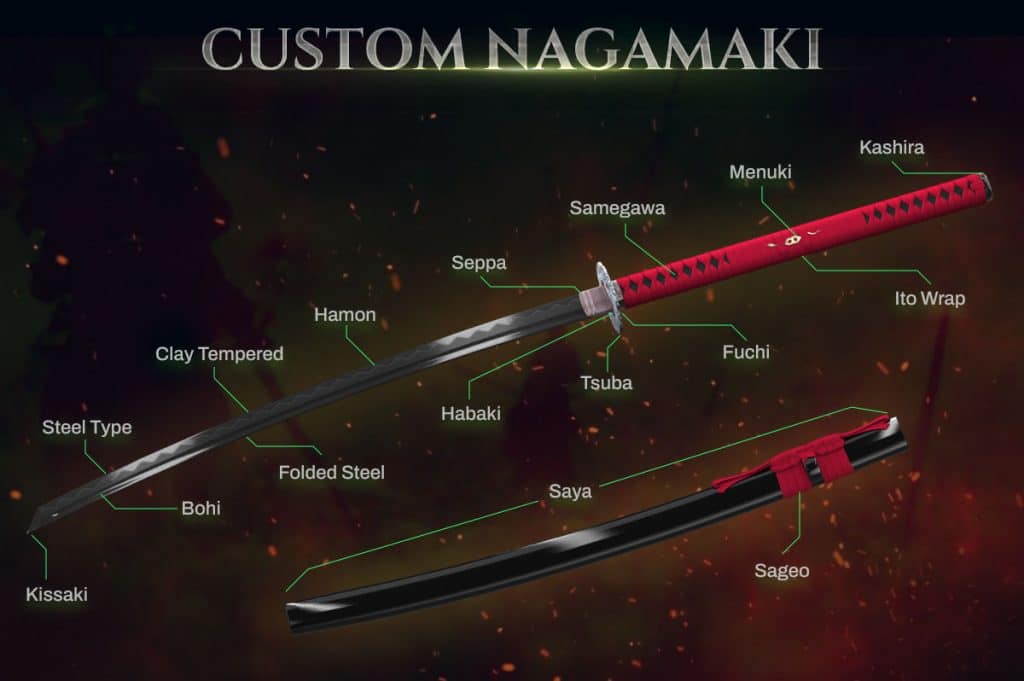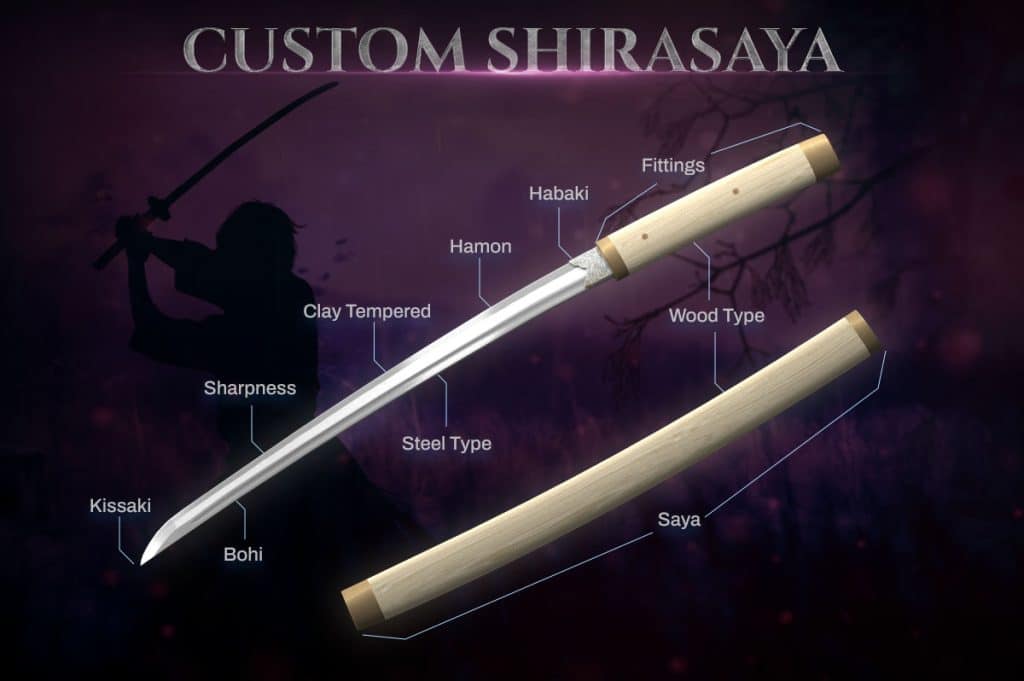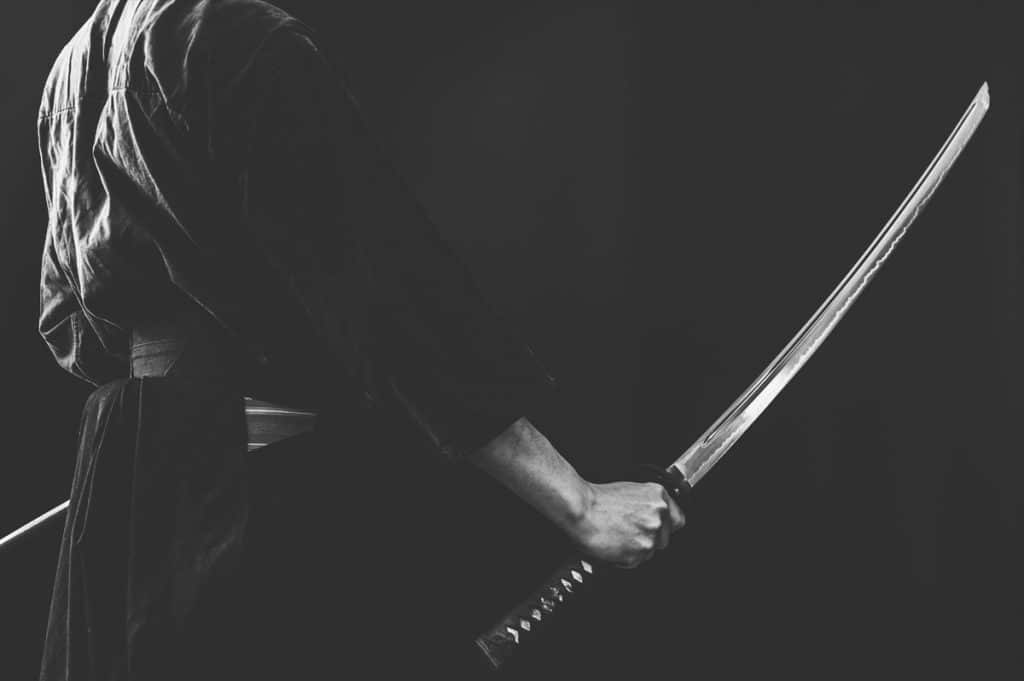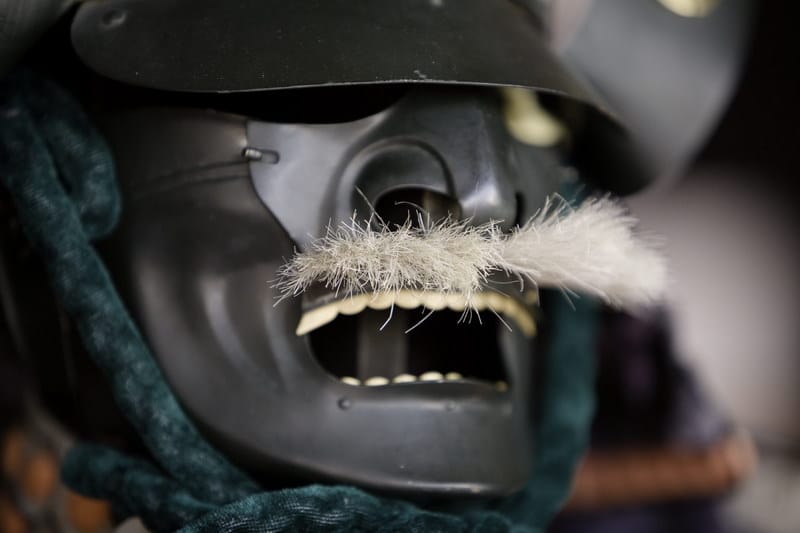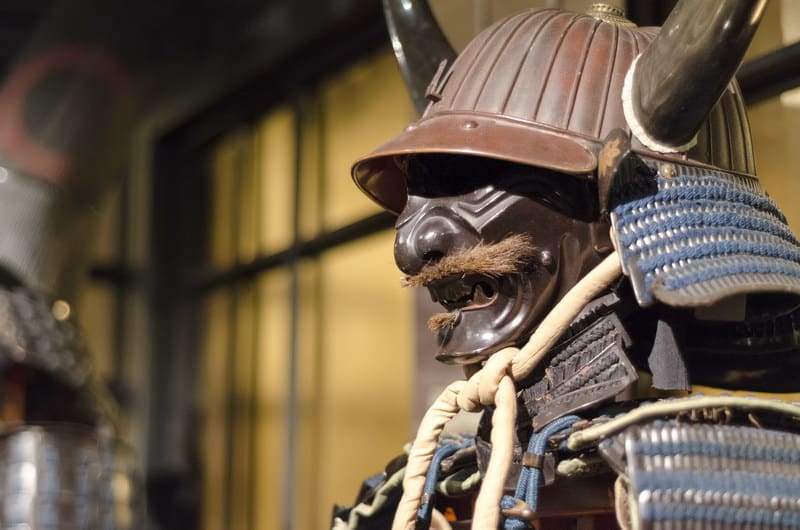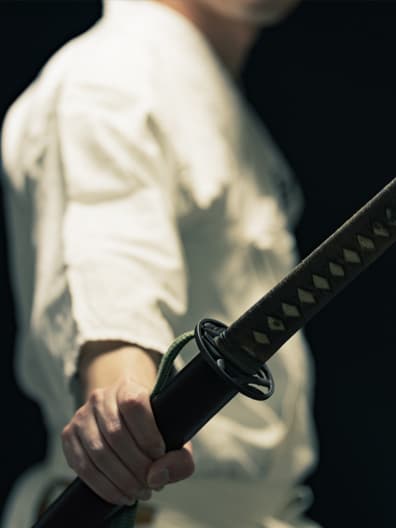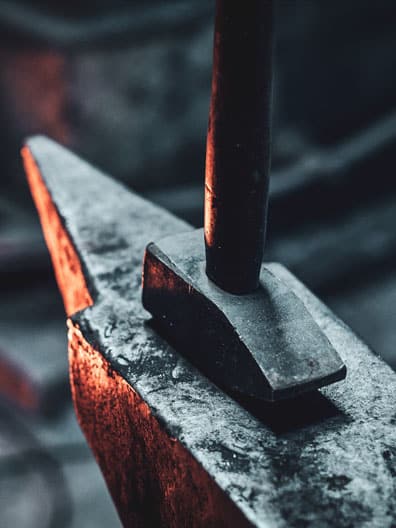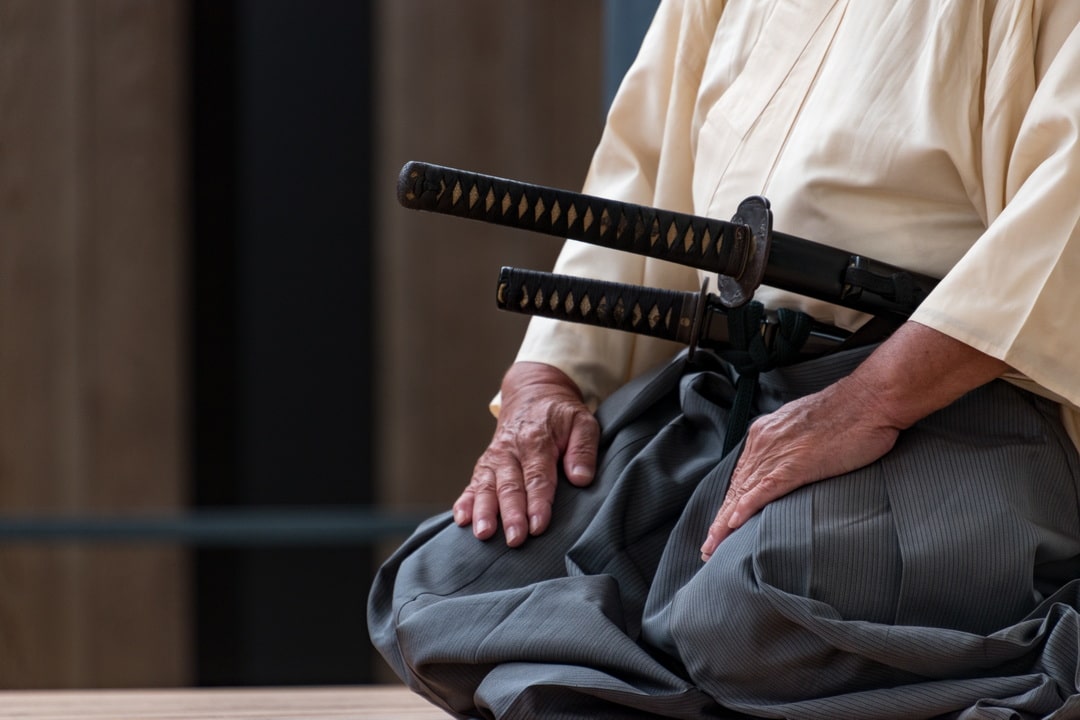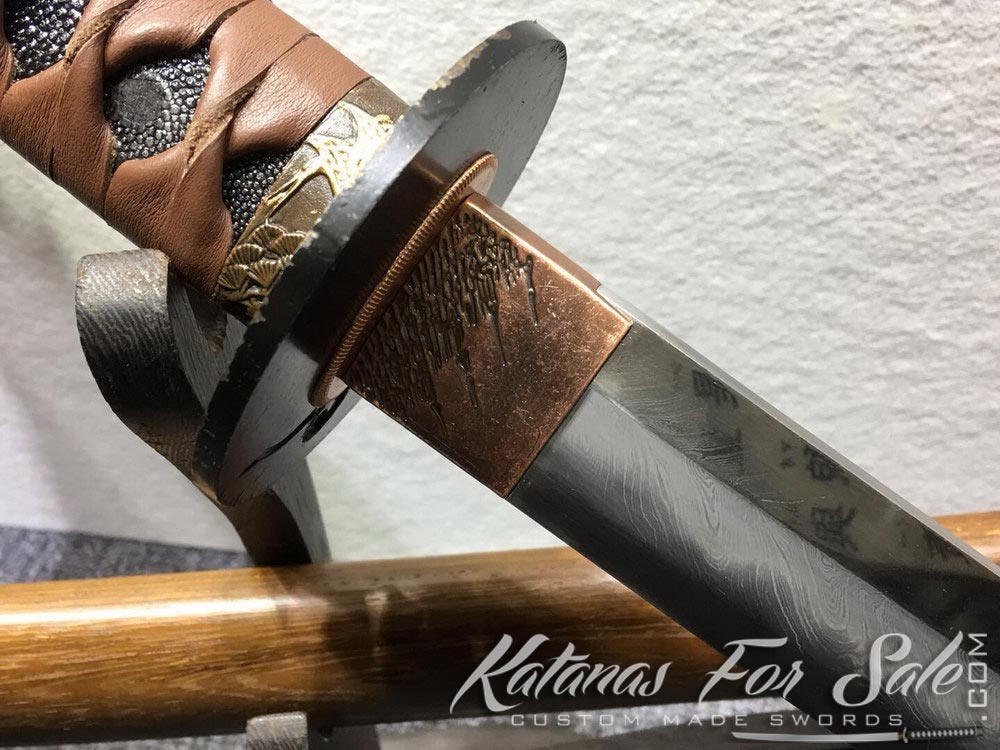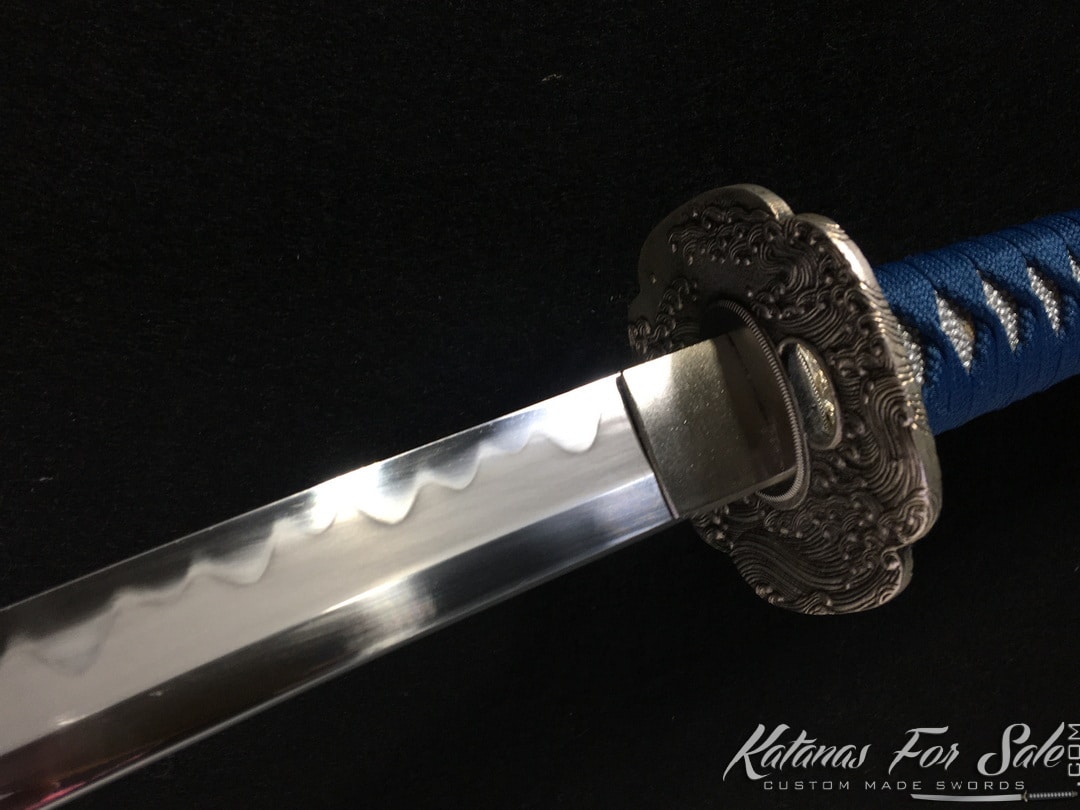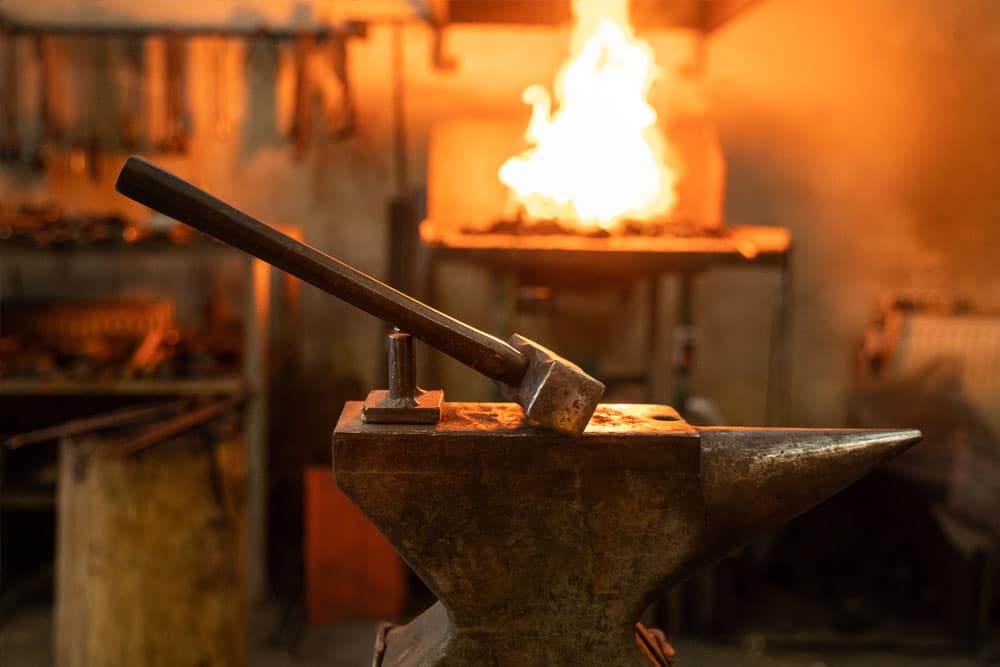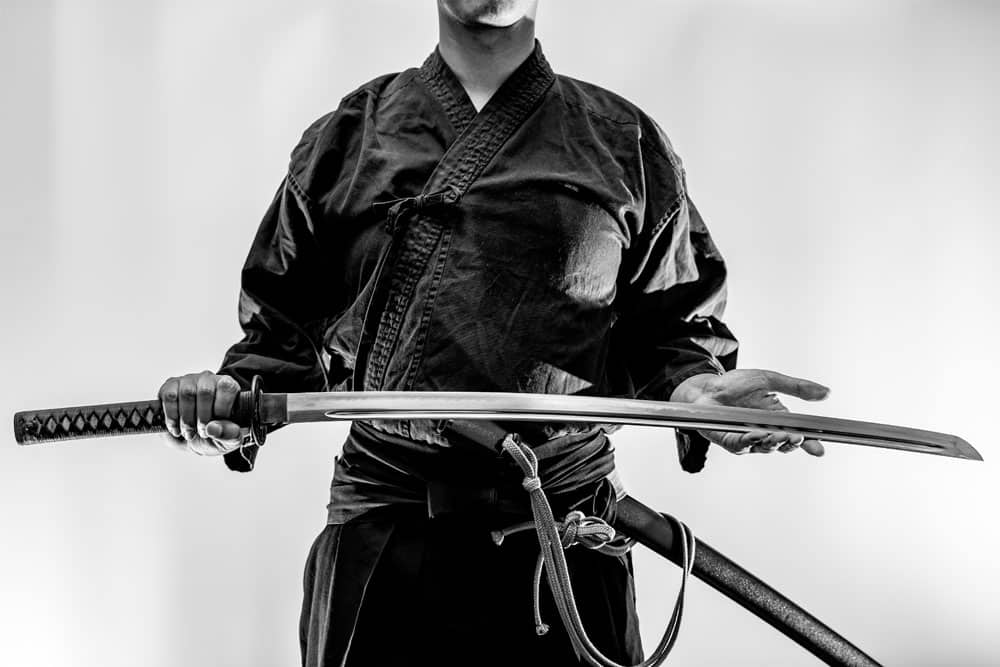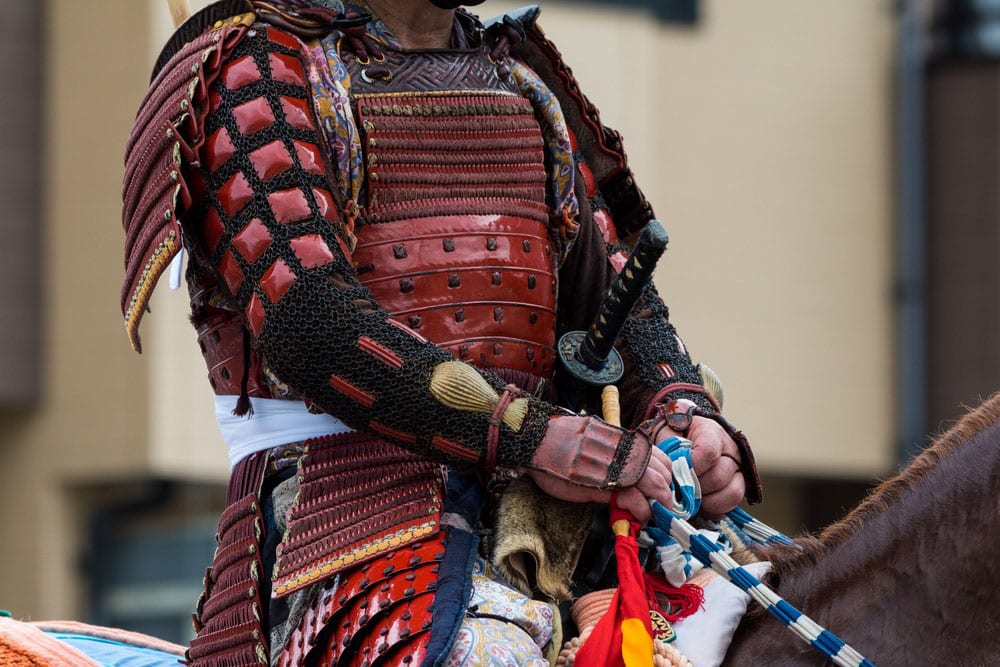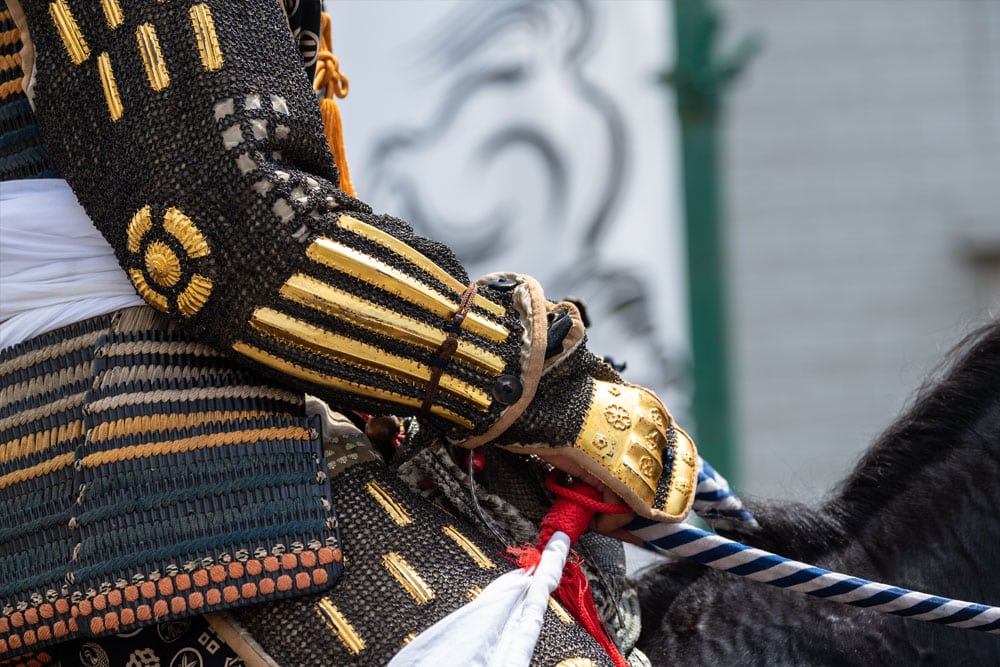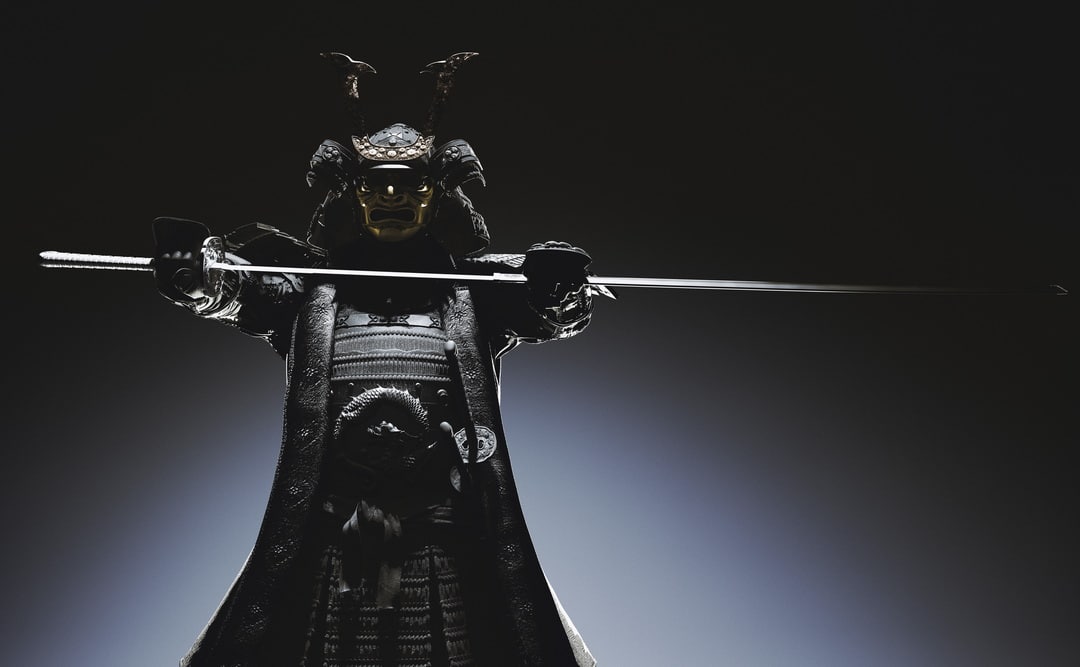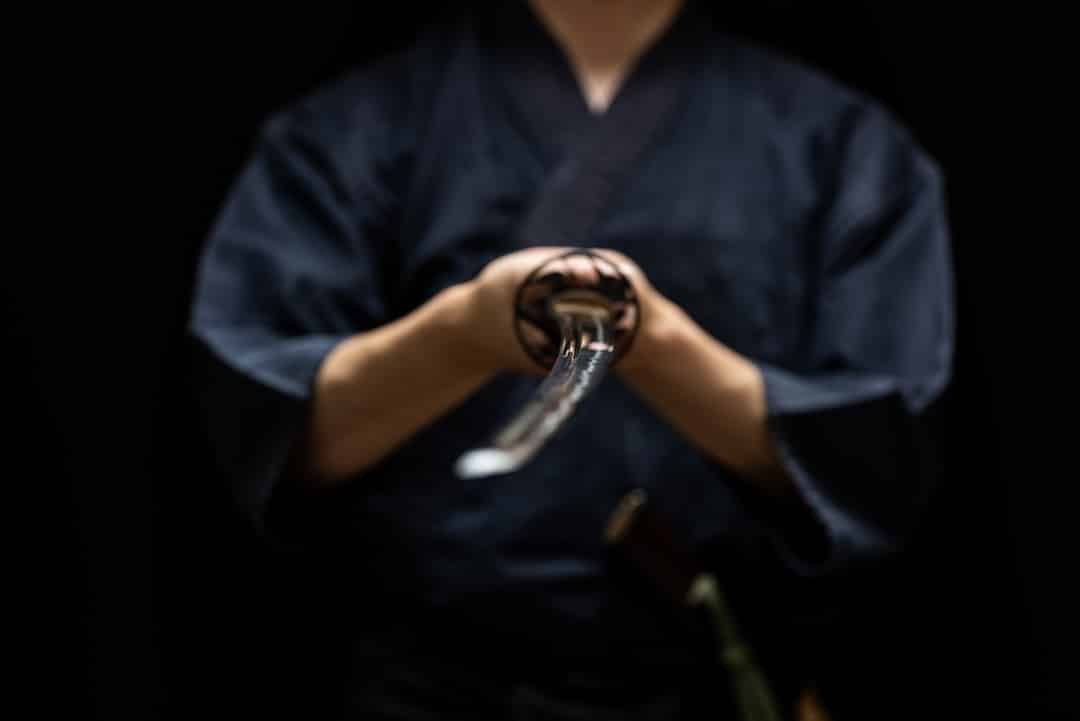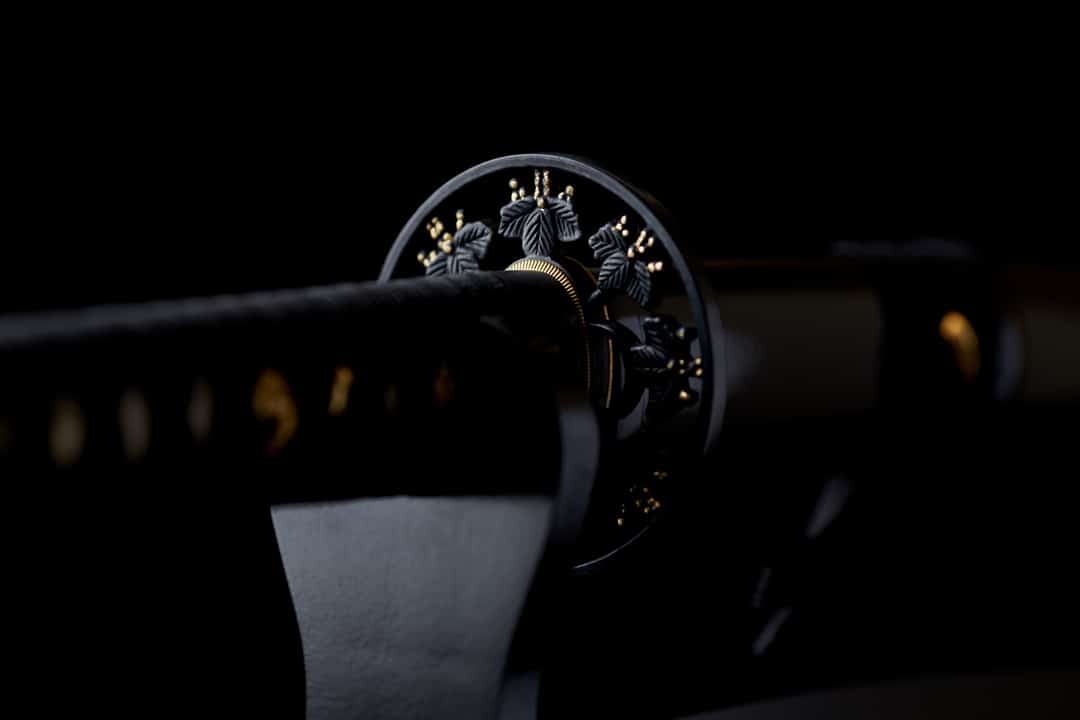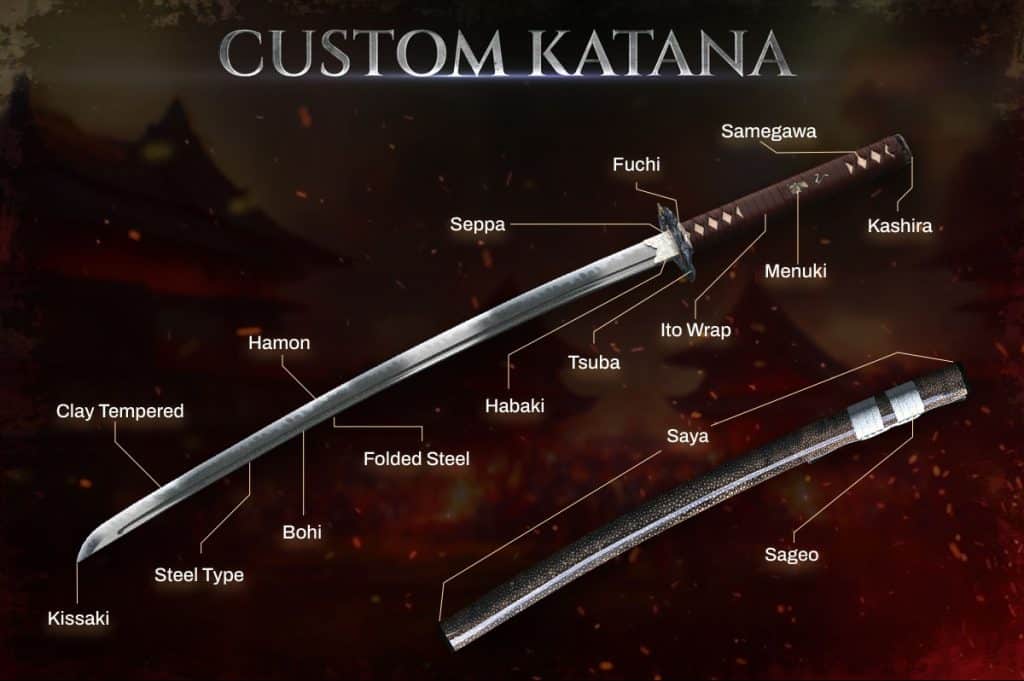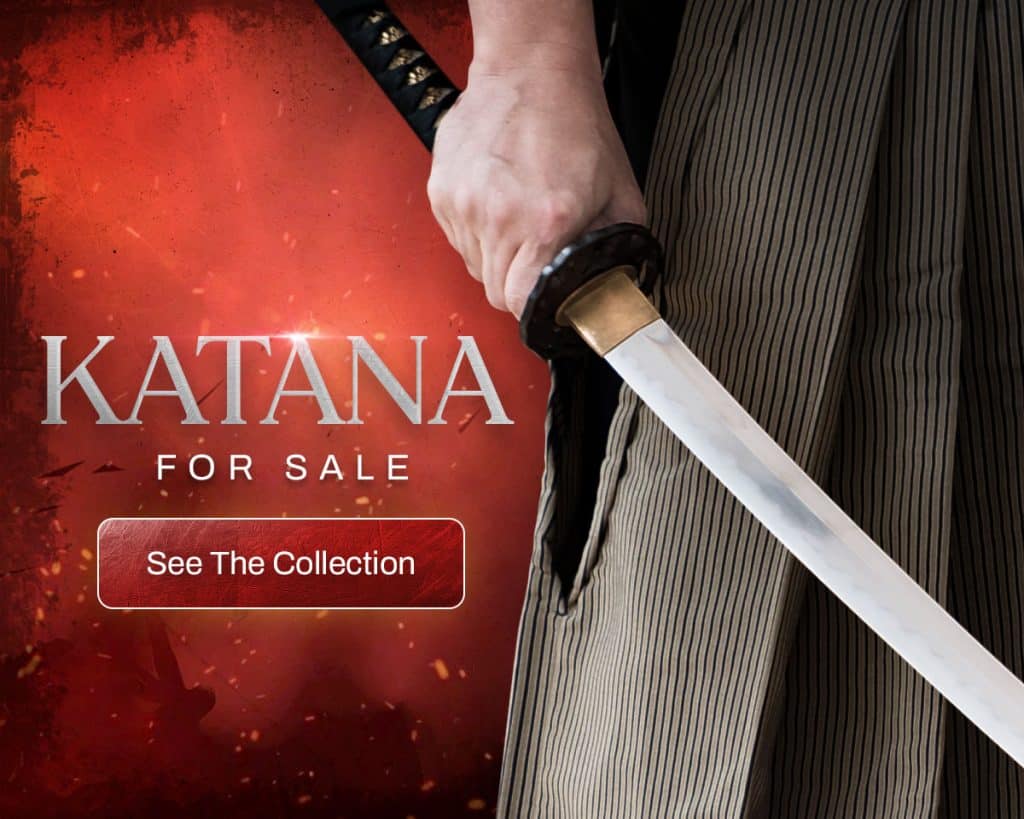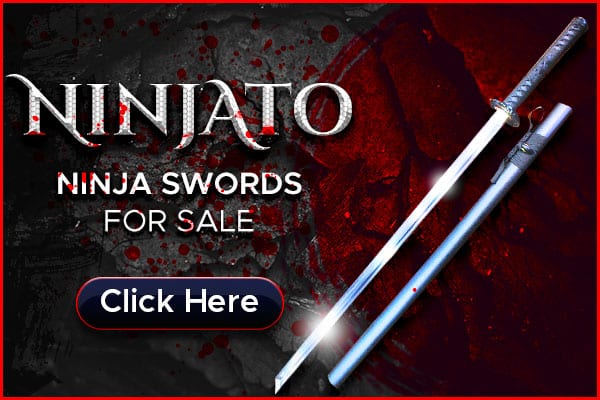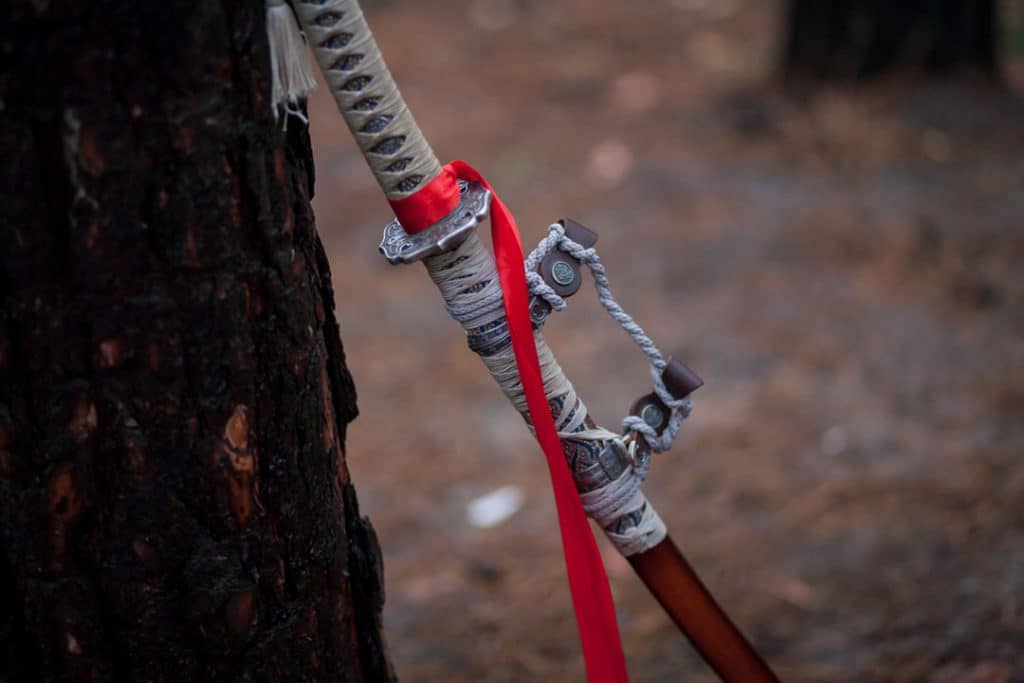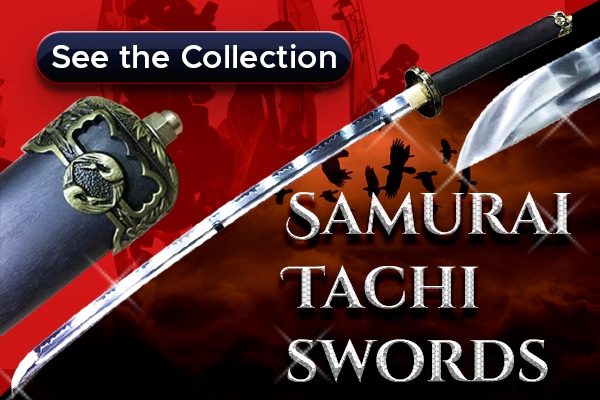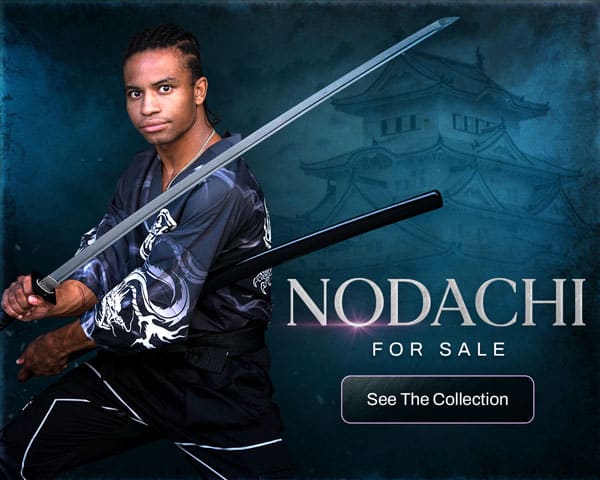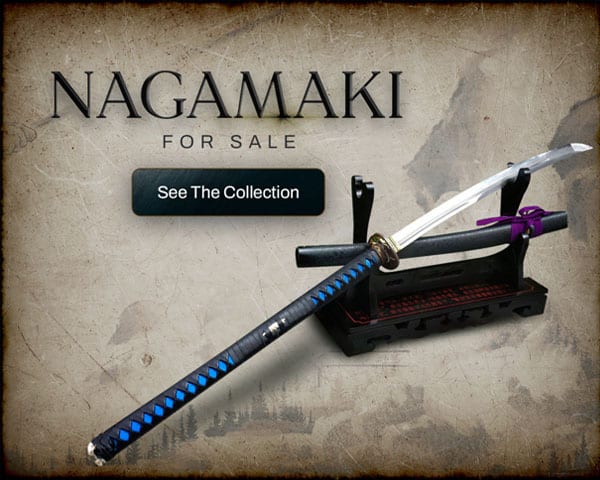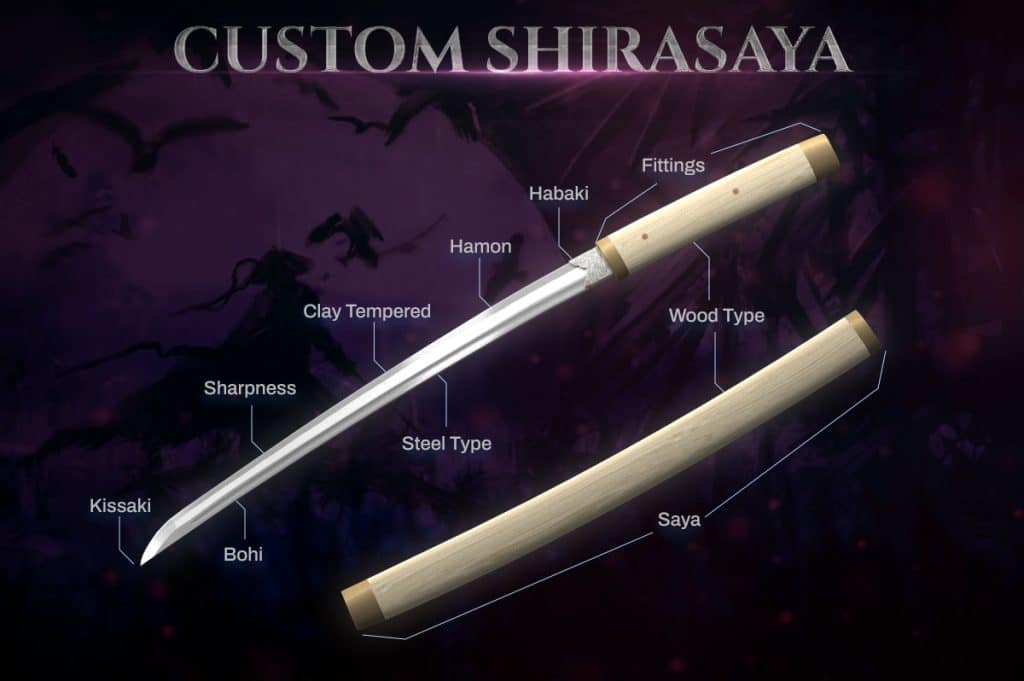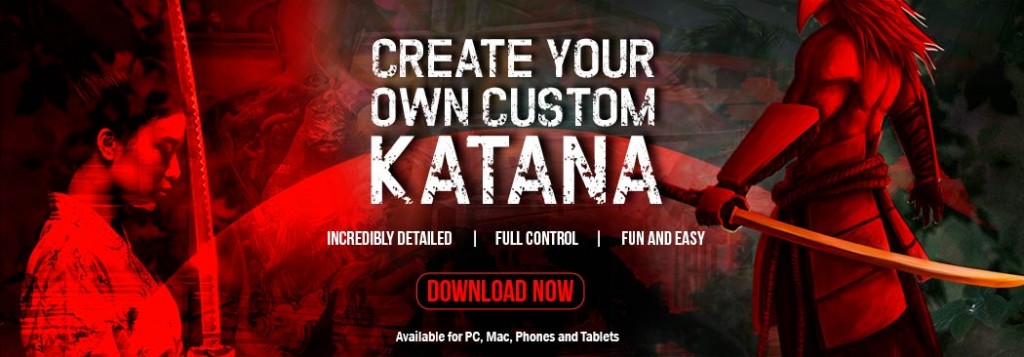Sword Engraving
Blade Coloring
Custom Size
Full Tang Katana
Clay Tempered Katana
Folded Steel
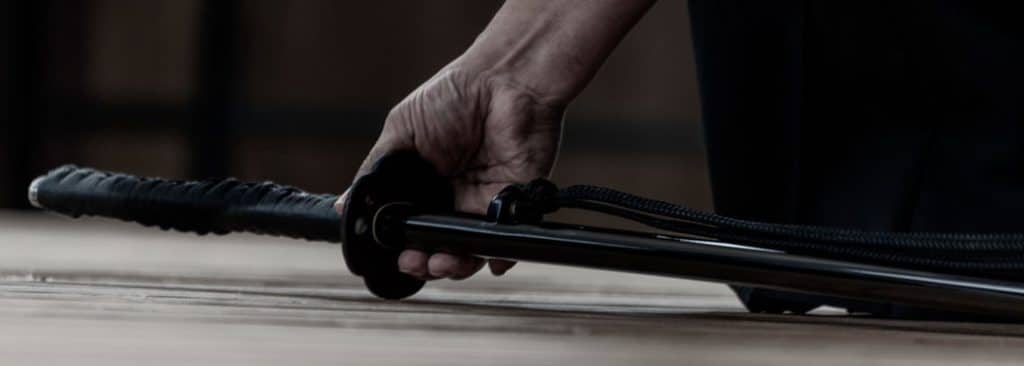
SAMURAI SWORDS GUIDE
Samurai swords are known as swords originated from Japan and used by the Samurai warriors, in this guide you can expect to find a deep overview of the different Japanese and Samurai swords, we will cover their uses, materials, historical accounts, functions, treatments and modern day manufacturers.
We recommend you to bookmark this page, as it contains a lot of information that will help you make the right decision when purchasing your sword. We tried to cover various topics to give you the most extensive guide for Japanese swords and will continue to update this guide with more information as time goes.
Searching for Samurai Swords
If you are thinking of acquiring a Japanese sword and have searched on the internet, you have probably come across several options, different prices and many strange concepts.
Surely you realized by now how difficult it is to choose your Samurai swords in a place where everyone claims to have the best sword with very different prices.
But what makes a good Japanese sword? What factors should you consider before buying one? Which are the most important features?
What are the best places to buy Samurai swords that won’t break as soon as you wield them?
In this article you’ll find the answers to those and many other questions.
By the time you finish it, you’ll know exactly what you need and where to get it.
Ready? Let’s get started.
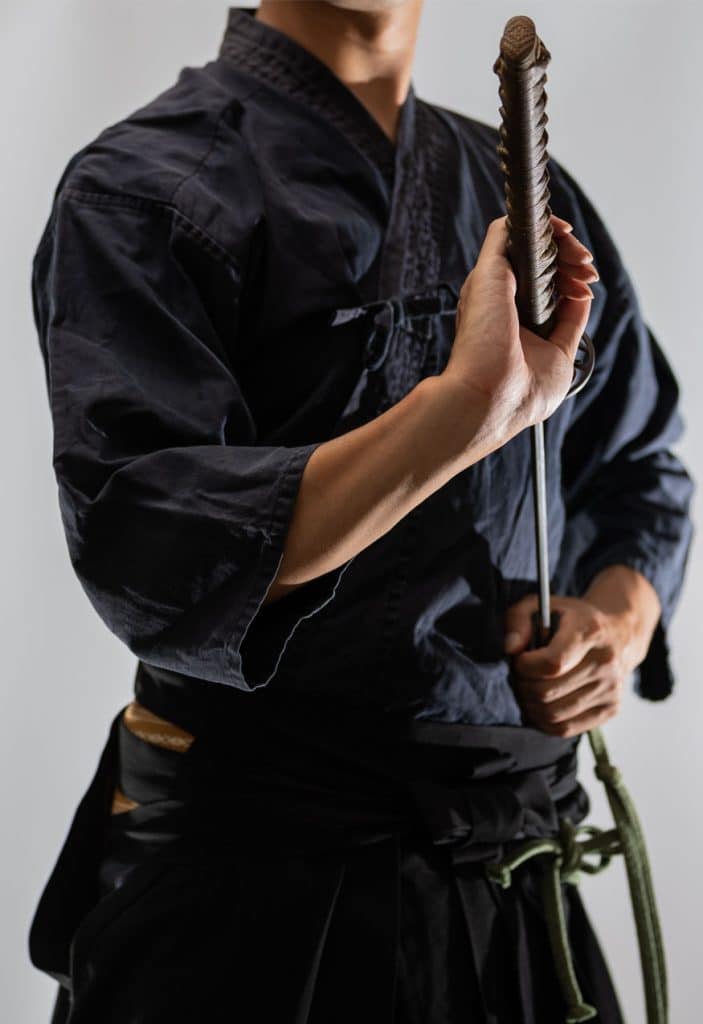
About Us
Katanasforsale.com
At Katanas for Sale, we aim for the perfect molding of balance, precision, and beauty that is worthy of embodying one’s spirit.
Like people, each blade is unique and therefore, suits its wielder differently.
Here, we’ll help you find the perfect fit, offering custom-made blades that will match whatever personality you have.
Hand forged with attention to details, you can be battle-ready while still being in style.
For your convenience, you can click on any of the topics in the menu below to navigate through the Samurai swords guide.
Japanese Swords
The Steel
The Options
Types of Japanese Swords
If you are new to buying Japanese swords, you will usually come across a variety of technicalities and hard words for quite similar swords. And of course, you’ll probably think “they’re all the same” at first.
Reading below you can find the characteristics of each Japanese sword, how they differ from each other and what their uses were during history.
While all these technicalities and names may seem threatening at first, once you learn them, it’ll be easier for you to decide what you want. And that will make the whole experience worth the while.
Why just having the classic Katana sword? There are several types of Japanese Samurai swords that may be better for you, or in addition
Here they go:
Katana is the most precise and lethal hand forged sword ever created over the centuries. Their use was exclusive to Samurai; hence they became known as Samurai swords as well. Although, in reality, they fall into the category of a saber.
It is a complex piece; the result of a deep armament baggage. And it is a symbol of beauty, effort, and delicacy, while being terrifyingly effective on the battlefield.
Unsurprisingly, it is considered one of the best weapons in medieval history —and also one of the most beloved and respected.
They say that the human being is in constant movement. And there is nothing that moves him more than war.
To reach the degree of precision required for the construction of the Katana, it took years of evolution and innovation in hand weapons designs of Asia.
History of the Katana
Katana is the most precise and lethal hand forged sword ever created over the centuries. Their use was exclusive to Samurai; hence they became known as Samurai swords as well. Although, in reality, they fall into the category of a saber.
It is a complex piece; the result of a deep armament baggage. And it is a symbol of beauty, effort, and delicacy, while being terrifyingly effective on the battlefield.
Unsurprisingly, it is considered one of the best weapons in medieval history —and also one of the most beloved and respected.
They say that the human being is in constant movement. And there is nothing that moves him more than war.
To reach the degree of precision required for the construction of the Katana, it took years of evolution and innovation in hand weapons designs of Asia.
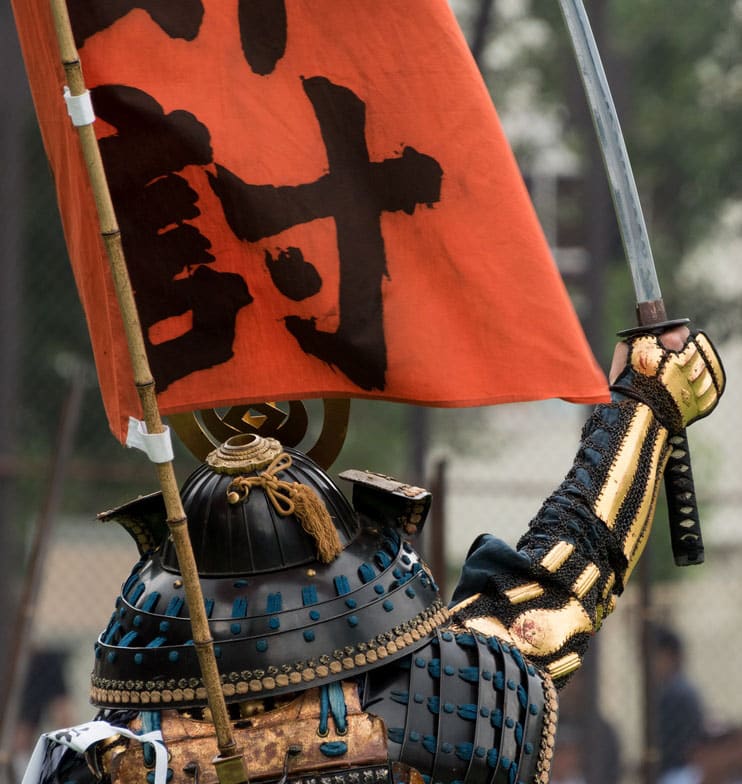
Katana Characteristics
It is estimated that a Katana weighs between 1.1 and 1.3kg, and the length of its blade varies from 60 to 73cm, with a total length of about 100-110cm —not for nothing is considered a two-handed weapon, even though some Samurai used it in only with one hand.
It has a complex handle made up of different materials, among which can be usually found ray skin, silk, copper, metal, wood, and more.
Everything in its design is done to maximize its power and absorb as much as possible the impact of strong blows.
With the birth of the new Katana sword a new type of combat was also born. Before, the most common was to carry the Tachi with the edge down, like a conventional sword.
However, the Katana began to be carried with the edge up, which allowed a skilled warrior to draw and attack in one move. This is one of the qualities that make the Katana a unique weapon of its kind.
Due to the curved shape of its blade and its single edge, the Katana is fundamentally oriented to the cut rather than the stab.
Its unique curvature is due to changes in the steel as it is cooled in a water with special salts.
A good handmade Katana will have an excellent balance between the blade and the handle, which will allow its carrier to maneuver with it without problems. One thing that can help this is the bohi, which reduces the weight on the blade and gives the carrier more control.
Symbol of Honor
The Katana, besides being a lethal weapon, is also a symbol of honor. The warrior who carried it not only had to be skillful, but also had to protect his honor at all costs. Even if that meant his death.
Thus, Samurai did not fear the steel of the rival. Their greatest fear was to disappoint those they protected, and thus be dishonored. Only a true Samurai, who did not fear death, was in a position to carry a Katana proudly.
So much so, that it is assumed that Samurai and Katana maintain a deep bond on a spiritual level. The Katana is his very soul. The warrior takes it with him wherever he goes and keeps it close to him all the time, treating it with respect and care.
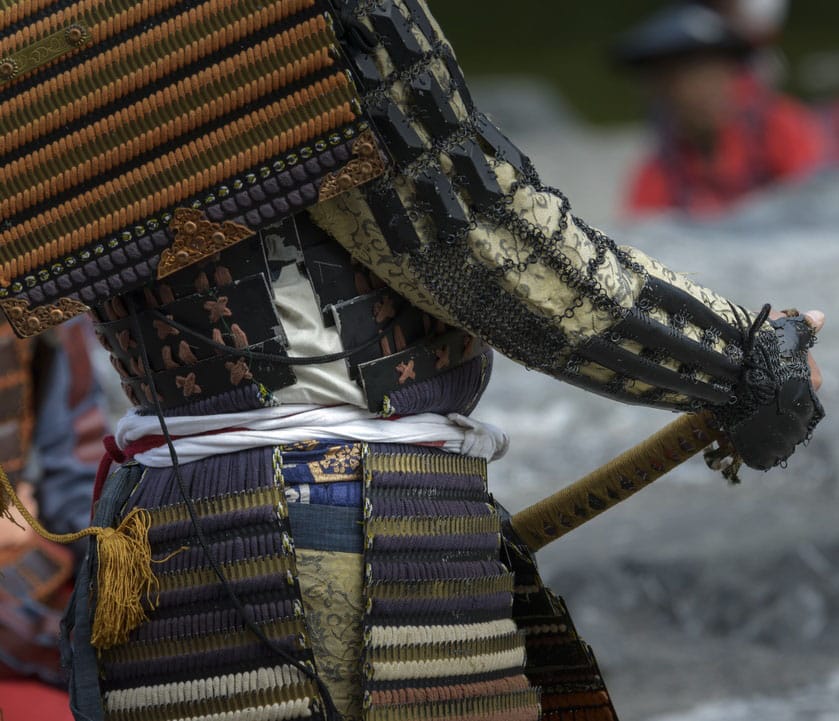
Throughout history, the Katana has always been the Samurai’s most precious and valued good. Wearing a Katana sword meant belonging to an elite made up only of the best warriors.
Each Samurai sword represented its owner; it was his seal of distinction. And for this reason, the style and symbolism of the sword was very important: from the design of the tsuba to the engravings that ran through the handle.
To have a Katana was to carry in one’s hands a part of oneself, and therefore everything in it should speak of its warrior.
After all, it is a lifelong companion, it is the difference between life and death.
Katana Swordsmith
Formerly, the blacksmiths chosen for the creation of the Samurai Katana sword began their creation process by praying. In order to reach this position, they had to spend at least ten years as apprentices before they could finally become masters of Katana forging.
A perfect Katana is believed to be the result of the blacksmith’s spiritual work. Only a true metal alchemist would be able to transmute his own spirit into the steel of the sword, achieving an unprecedented sword.
Customize Your Own Katana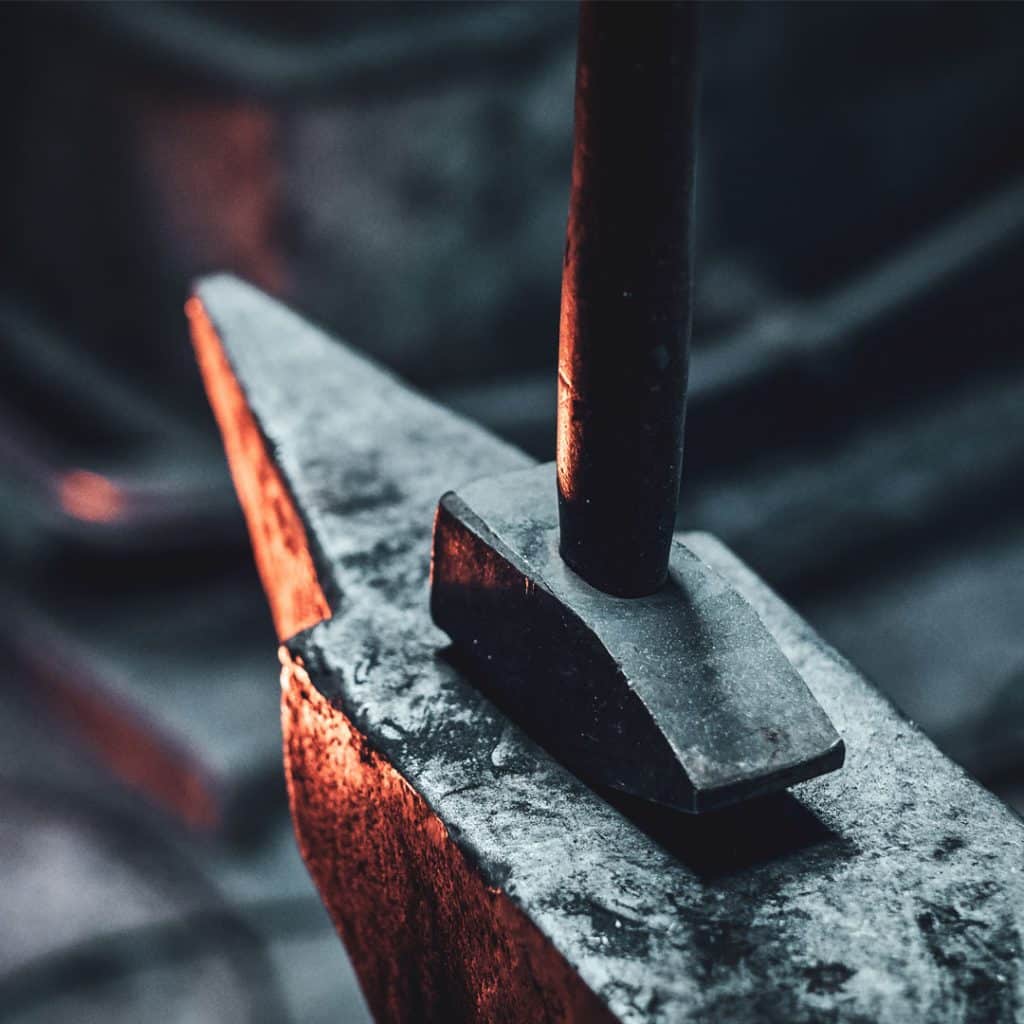
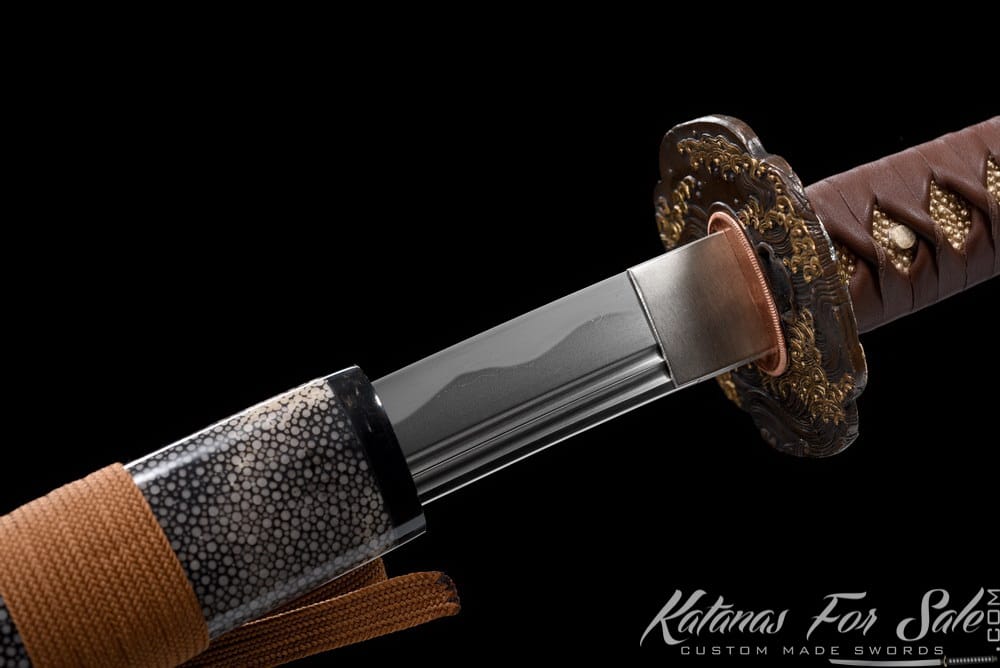
Enforcing the Law in Feudal Japan
The Katana swords were often used to unload the full weight of the law on the necks of those who broke it.
Assailants, murderers, and all kinds of offenders found their destiny on the edge of these Samurai swords. Due to its precision and effectiveness in punishing criminals, the Katana also received the nickname of hand guillotine.
The Japanese Katana – A Work of Art
In addition to its unquestionable effectiveness in combat, the Katana blade is also longed for by many as a work of art. Its elegant curved shape, as well as the different treatments that can be done on steel such as folding or clay tempering, make it an attractive and beautiful weapon.

The structure of the Samurai Katana allows it to concentrate the force of the blow on the curved surface that comes into contact with the object. Also, the design of its handle also makes it possible to be drawn fluently, much faster than a conventional sword.
Because it is not as curved as other sabers such as the scimitar, it is still perfectly capable of being used to deliver damaging stabs against the opponent.
Its design is the perfect combination between a common saber and a sword; not much of one or the other.
For this very reason to give an accurate blow with a Katana often also implies that the blade slips over the target, so that not only does it damage thanks to the impact, but also cuts —the western swords, on the other hand, usually depend much more on the force of the impact, since they were not so much intended to cut.
Ko Katana
The Ko Katana usually refers to a smaller blade Katana, often with a similar blade size as the Wakizashi sword, yet with a full handle length of a Japanese Katana.
The Ko Katana can be referred to as Chisa Katana. some say it was used by merchants who were allowed to carry the Wakizashi but not the Katana, yet still wanted to have the ability for two handed grip.
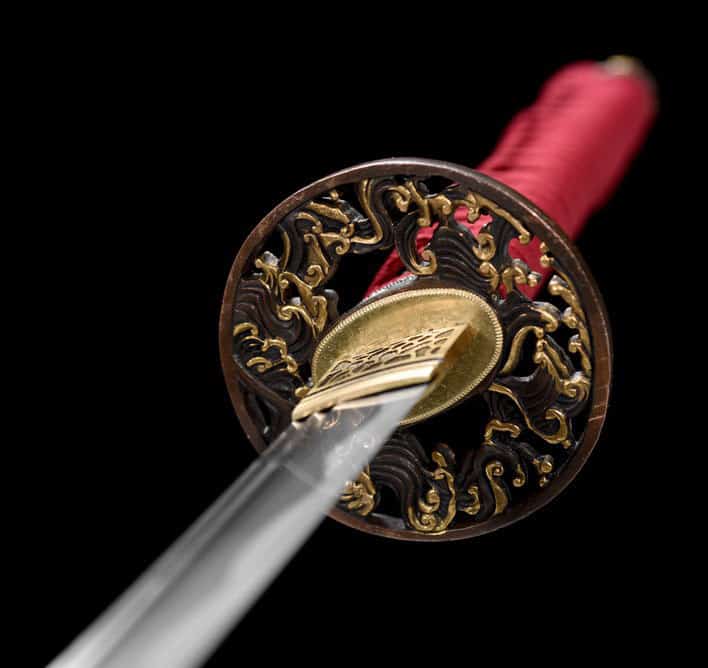
O Katana
The name O Katana translates to a large or long Katana, Often the O Katana blade length is between 76-90 centimeters.
The O Katana is a bit longer with comparison to the standard size katana, it allows the wielder for extended reach while having adequate mass and still being able to maneuver.
The Wakizashi is the companion and Auxiliary sword for the Katana. It has a blade with the same design as the Katana but considerably smaller. It also tends to have a thinner edge, so it is capable of hurting more severely a target without armor.
Samurai often carried both weapons together; Katana and Wakizashi, naming their combination daisho (long and short). A good warrior would be able to use both at once if the situation warranted it.
From the beginning, the Wakizashi was conceived as a defense weapon for Samurai in situations where they did not have their Katana. For this very reason it was widely used in interiors, such as houses and castles. A warrior could be asked to deliver his Katana in a formal place, but often he could keep his trusted Wakizashi.
Precisely, the custom of carrying it with a thinner edge comes from this indoor use. It is ideal in situations where the Samurai’s opponents do not have armor, but mere clothing.
Wakizashi were so important to Samurai that even they slept with them near the pillow, ready for any irruption, be it ninja or from other opponents.
Having a shorter, more manageable blade, these swords were also able to move more freely in places where any attack of a normal Katana would be hindered by the structures, ceiling, or furniture of the place, which greatly restricted its movement.
Also, because of its small size, it was used by many Ninja instead of the mystical Ninjato.
Customize Your Wakizashi!O Wakizashi and Ko Wakizashi
For a sword to be a Wakizashi and not a Katana it should have a blade length of between 30 and 60 cm. Within this range two categories are distinguished depending on the size of the blade.
The term o-Wakizashi is used for when the blade is almost the length of a Katana sword. while the term of ko-Wakizashi, is used for a Tanto size blade sometimes with the same handle size as a standard Wakizashi.

Daisho
The use of a Katana and a Wakizashi together is known as daisho, although the same term is also used for the earlier combinations consisting of Tachi and Tanto.
When used like this, the Wakizashi used to play the role of replacing the Katana in case it was damaged or lost in combat. However, great Samurai were trained to use both at the same time, using the short sword for defense and the long sword for attack.
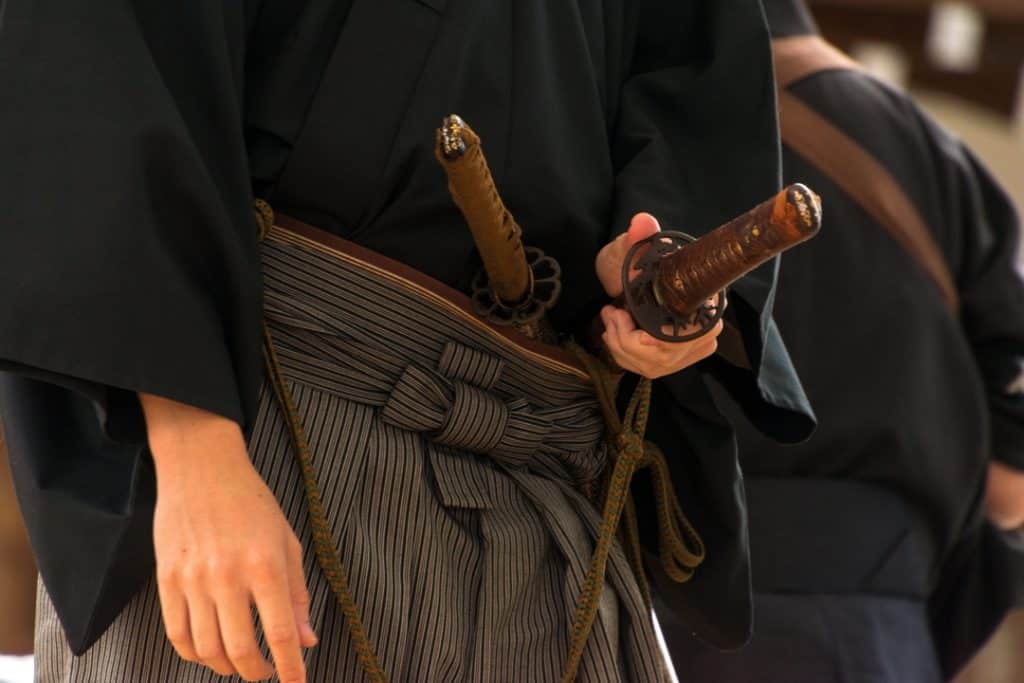
Wakizashi and Seppuku
Wakizashi also has an enormous symbolic and spiritual weight in Japanese history, as it was the weapon of choice for carrying out the Seppuku ceremony. This consisted in the suicide of the Samurai disemboweling himself with his own sword, enduring extreme pain while cutting his stomach open.
It was often accompanied by the writing of a poem before the act was carried out. This is because the first to perform the ceremony was a poet.

The Tanto started as a straight dagger that used to be worn by Samurai along with their Tachi. At first it was an attack weapon, during the Nara period, but over time it evolved to become more ornamental.
At that time, Japan was in a period of rebellions and conspiracies that threatened the health of the Fujiwara family.
The solution was to create a new class of warriors who would dedicate their lives to protecting them, as well as other noble families. At the end of this period these men would become known as those who serve: Samurai.
Initially the Tanto blade was created to work along with Tachi sword and functioned as a weapon intended to be used indoors, where the long sword had no function. In these situations, thanks to its short-range strength, it became an ideal weapon.
The Tanto Blade
The Tanto, with its straight form, was designed to be used primarily as a stabbing weapon, but is also perfect for cutting or even as a survival weapon.
Thanks to its more robust structure and the fact that it concentrates all the force of the blows on its tip, it is also capable of penetrating even hard objects such as armor.
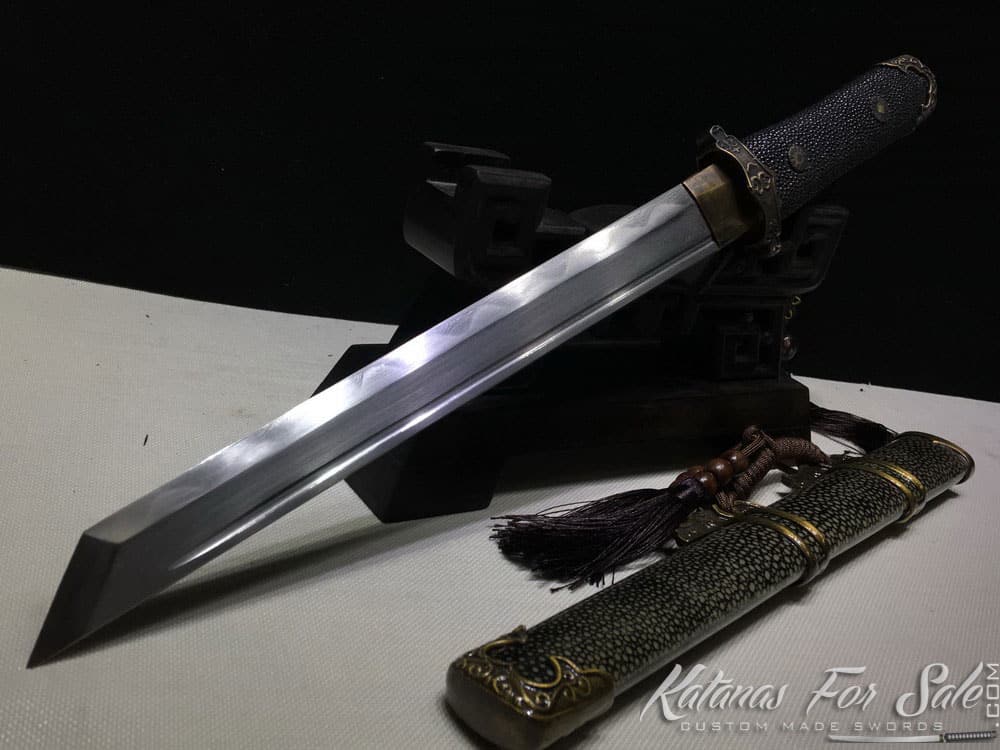
There is an enormous variety in designs of Japanese Tanto; from modifications in the curvature to a double edge. For this reason, they have also acquired enormous value as pieces of admiration.
Today, however, the Tanto that predominates is the one that resembles to a miniature Ninjato.
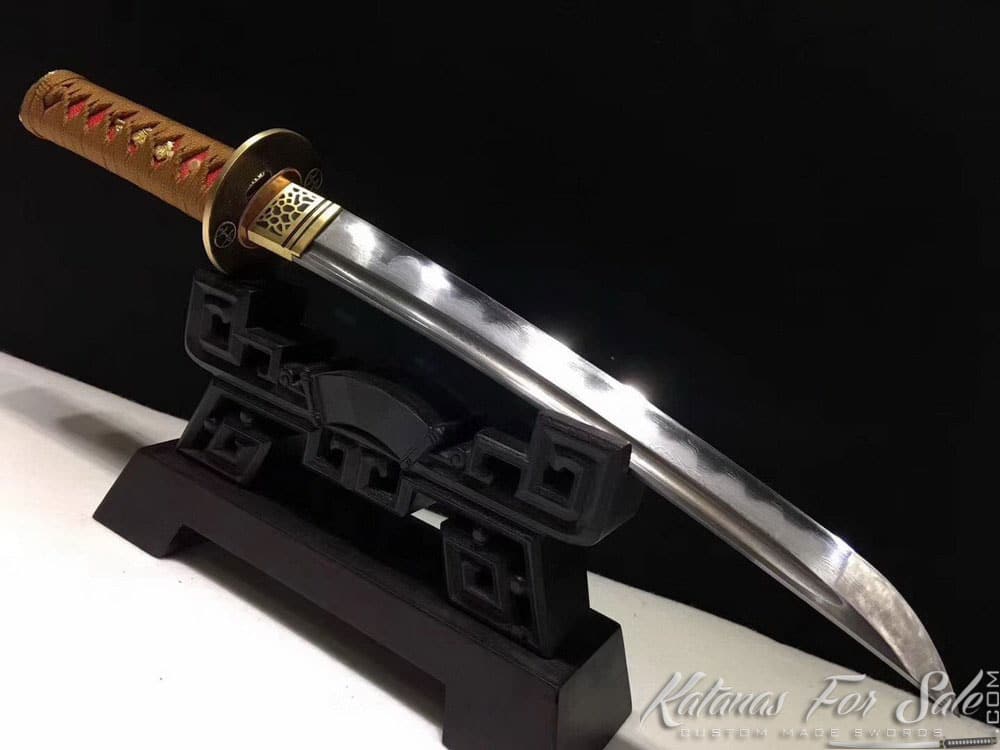
Tanto Size
The blade of a Tanto usually varies between 15 and 30cm, although there are cases of some Tantos that have exceeded this rule, such as the nanboku-cho, which had up to 40 cm.
The craftsmen experimented with a variety of possibilities and forms for the Tanto, but these would never know the action, because with the arrival of the new swords these weapons would acquire a more symbolic value.
Nowadays the Tanto are demanded as functional knives and, many times, they are acquired together with a Katana and a Wakizashi as a full Samurai sword set.
Unlike the Katana sword, the Ninjato is a completely straight weapon. Not only does it have no curvature, but it is also considerably smaller than the Samurai sword.
For this very reason, it was not intended as an open combat weapon, but for closed environments, where swords and quick blows were far more effective than the large displays of a two-handed sword such as the Katana.
Another advantage of its design is that it can be used in reverse grip —that is, holding it upside down—. It is speculated that ninjas would have used two Ninjatos at the same time; that of one hand to attack, and that of the other to defend themselves or for extremely close combat.
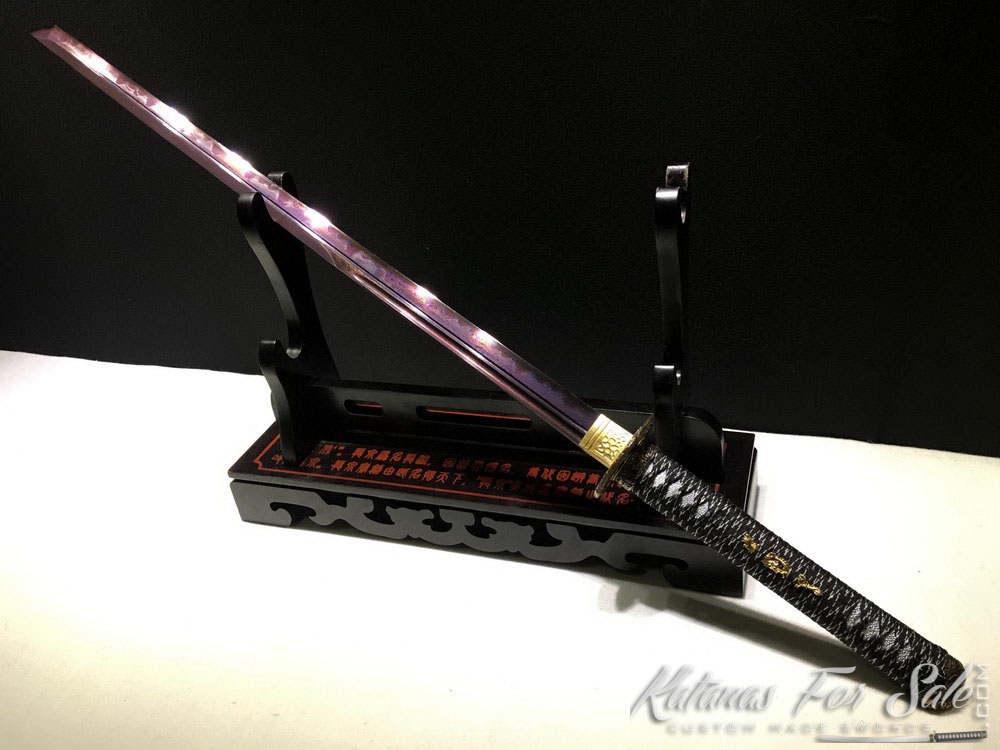
Ninjato Characteristics
Usually, a Ninjato should weigh less than one kilogram, and its blade should be between 48 and 60 centimeters. (although due to high demand we have set our standard size Ninjato to be similar to a Katana size)
Ninjato usually have square tsubas, rather than the round tsubas commonly used in Katana swords. While there is much speculation about this, it is believed that this form could have been useful for shinobis when climbing walls in a technique that consisted of using them as a kind of step to extend their range and, once up, recover the weapon by pulling a rope.
Ninja Swords Fighting Techniques
The ninja would have had a variety of combat techniques to use the Ninjato with maximum efficiency. Although these have been lost in time, today there are schools of ninjutsu that aim to recover this old style of fighting.
The ninjutsu composes all the strategies and tactics of non-conventional war, guerrilla, and espionage supposedly practiced by the ninjas, also known as shinobi.
These were assassins, scouts, and spies who were hired by daimyos. Despite being cold-blooded assassins, their main objective was espionage (something of vital importance in an age plagued with betrayals and conspiracies), and secondly scouting.

The Japanese Ninja
Despite being well trained and equipped for the fight, they avoided confrontation at all costs through stealth and deception, which even allowed them to escape from situations in which long opposition groups chased them.
Ninjutsu also involves techniques of information gathering, interrogation, camouflage, and misdirection.
Those who practiced it had to be able to move with agility in all kinds of terrain, so they also learned their own version of parkour. And they combined this with excellent techniques of disguise, escape, archery and medicine. Everything necessary to minimize the close fight, where they could be exposed.
In addition to owning a Ninjato, it is speculated that the shinobi also carried a variety of sophisticated gadgets for the time. Some better known and accepted, such as shuriken or ninja stars, nunchaku, grab hooks, and kunai. Others were a little more debated, such as the use of special sheaths in their Ninjatos that allowed them to breathe underwater, hear distant conversations, or carry various chemical compounds to blind their rivals.
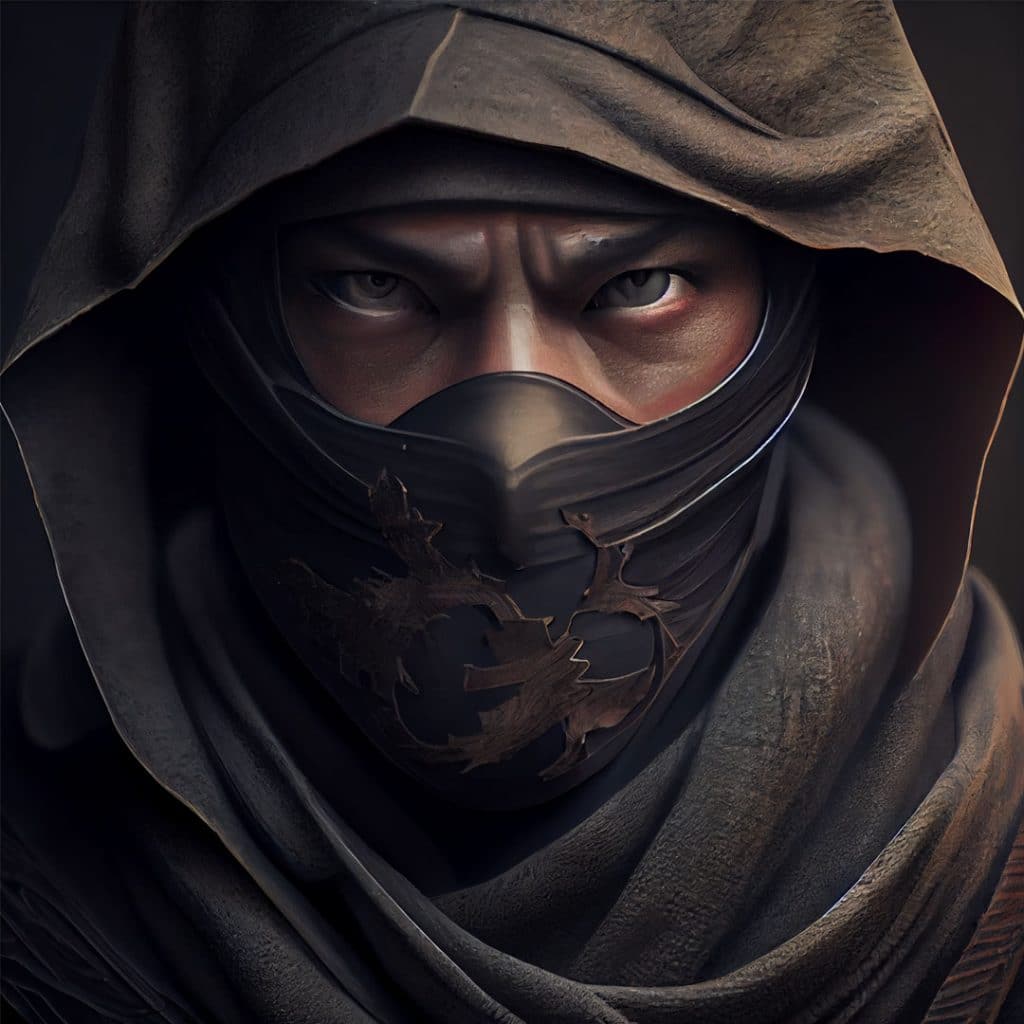
The Tachi is one of the main precursors of the Katana, being more curved than this and with a slightly longer blade. This made it a very good weapon on the battlefield, but terrible in confined spaces.
At first, Tachi was born as a cavalry weapon to cut off foot soldiers. The length of its blade gave a greater reach to warriors on horseback, while its curved shape led to a more powerful attack, taking advantage of the animal’s wild impulse.
On the ground, however, it also remained a terribly effective weapon, although its use was more complicated than when used on horseback.
The blade of a Tachi measures about 73cm, the same as a long Katana.
Precisely because of the latter, what distinguishes the Tachi from the Katana is not its length, but its curvature.
Being initially thought as a saber for cavalry, it possesses a greater curvature along the whole blade than the Katana.
This same form makes it not as easy to draw as the Katana, so it’s a sword designed to be drawn before combat and not in combat itself.
The Tachi, instead of being carried with the blade up, like the Katana, is carried with the blade down.
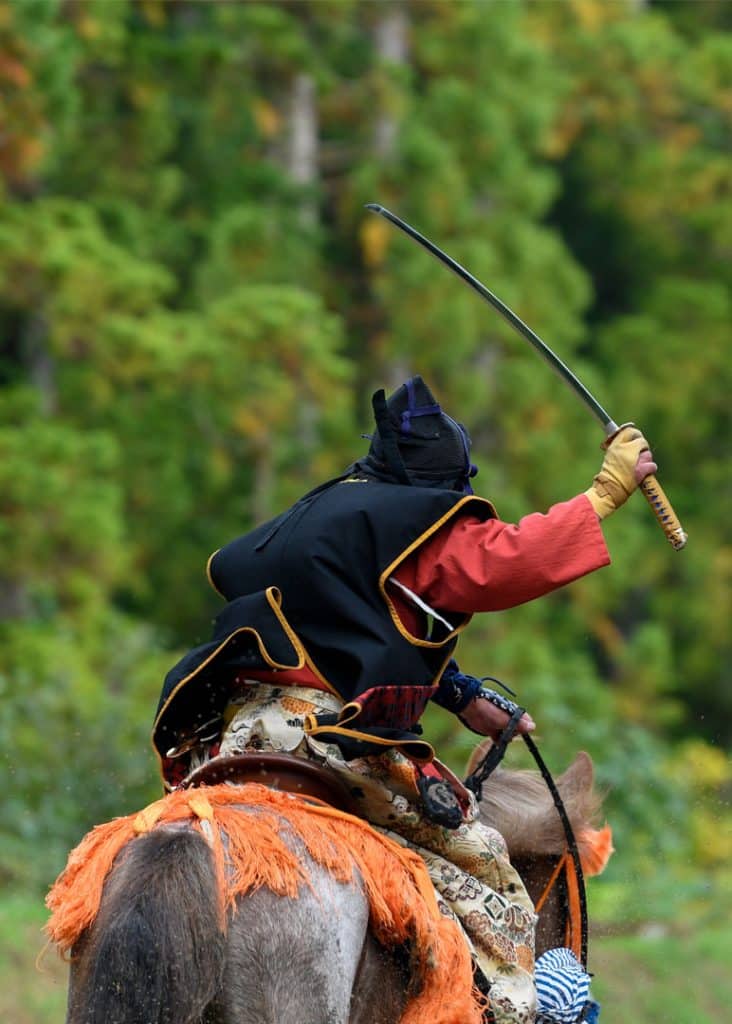
Not only for reasons of etiquette, but also for the comfort of the warrior at the time of combat.
Unlike Katana, Tachi is not very suitable for stabbing. Quite the opposite.
It focuses much more on sharp and loaded blows, so it requires wider movements, and so the result of these is even more devastating.
It will be slower than the Katana, but if used well it can give stronger blows.
For this very reason it is a weapon that works best in very open spaces, where nothing can hinder it and its bearer should not worry about harming any ally.
Japanese Tachi Sword
Having been born before the Katana, Tachi is a weapon reminiscent of an earlier era in Japanese history. It is believed that this Samurai sword was in use during the Koto period (900 to 1596).
Swords are not always signed, but at one time it was easy to distinguish a Katana from a Tachi by its signature (Mei).
If the sword had to be carried with the edge down so that its signature could be read, it was a Tachi, whereas otherwise it was a Katana.
Unlike Tachi, which had been conceived as a weapon for cavalry soldiers, Nodachi was conceived as a weapon for infantry soldiers against cavalry, so it could be considered the opponent by nature of Tachi.
The name Nodachi is often translated as “field sword”, which some may call as Odachi, which translated as “great sword”, it was said that the Nodachi was able to cut a man and his horse in one stroke.
The Nodachi is a very large sword which the measurements can differ greatly, for a sword to be called a Nodachi, it must have minimum 90cm blade length, but some Nodachi sword throughout history have reached over 2 meter in blade length.
The Nodachi Sword
The Nodachi has a considerably larger blade than the Tachi, as the warrior needed a greater range if he wanted to reach a rider on horseback and knock him down.
Although this would not always be necessary, since it could also be used to cut directly the legs of the animal while this gallop, putting his rider in a very disadvantageous situation, if not die of the impact.
The Nodachi is a main weapon. That is why, while whoever carried a Katana also could carry a Wakizashi, whoever carried a Nodachi had only this one.
Due to the enormous size of its blade and its subsequent weight, the Nodachi was reserved for specifically strong men, capable of wielding it without problem.
For this reason, it was also a rarer weapon to see on the battlefield. Weapons such as the Nagamaki were more common for the same purpose as they did not require as much effort.
Nodachi as a Symbol
During peacetime, the Nodachi was worn on the back as a status symbol, unlike most Japanese swords, that were worn on the belt.
While the Nodachi was more difficult to wield because of its weight, the colossal size of its blade could make it a truly devastating weapon in the hands of a warrior who could swing it proficiently.
The blade of a Nodachi sword can measure no less than 90 cm (3 shaku), while its handle usually measures between 32-45 cm.
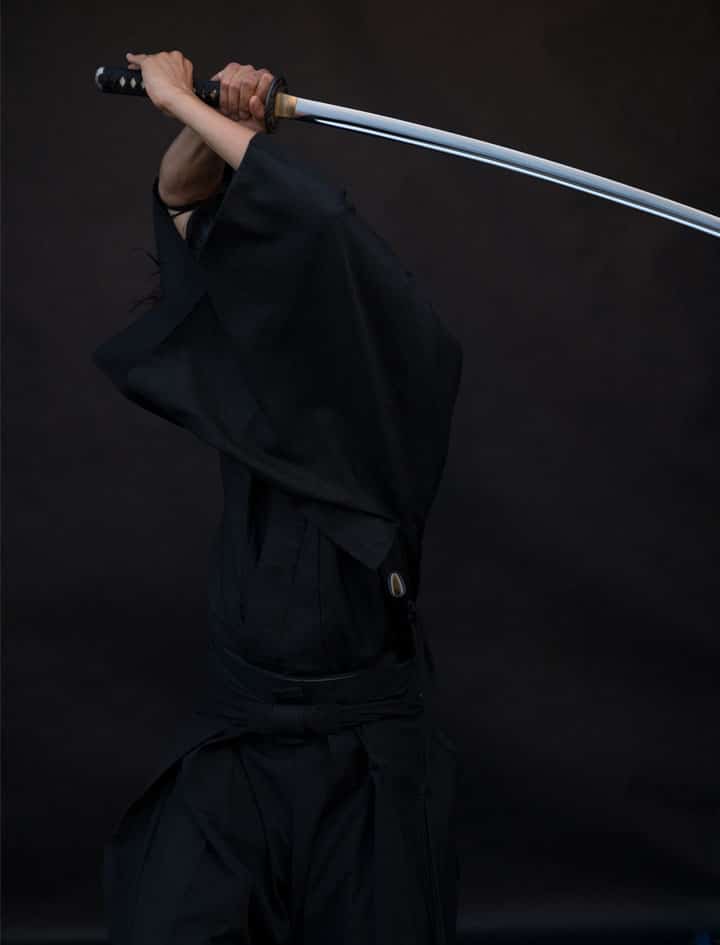
Due to the enormous weight of its blade, it is not surprising that it was said that this sword was capable of splitting a warrior and his horse in one stroke.
The main advantage of the Nodachi against conventional swords is that its blows are much more powerful, so that someone who possesses another sword cannot simply block one of its blows, has to dodge it or otherwise deflect it.
A failed strike with a Nodachi can put a serious predicament on its bearer if he is not skillful enough to recover from it instantly. Here the strength of the wearer and his ability to wield it becomes important.
If we could compare it to something, we could say that Nodachi is the war hammer of Japanese swords, in the way that using it implies a great risk of exposure, but that a successful strike is really destructive.
Nodachi could also be used to train warriors. So, having learned to efficiently handle such a huge weapon, once they had a more conventional weapon in their hands, they would feel it simply like a long feather.
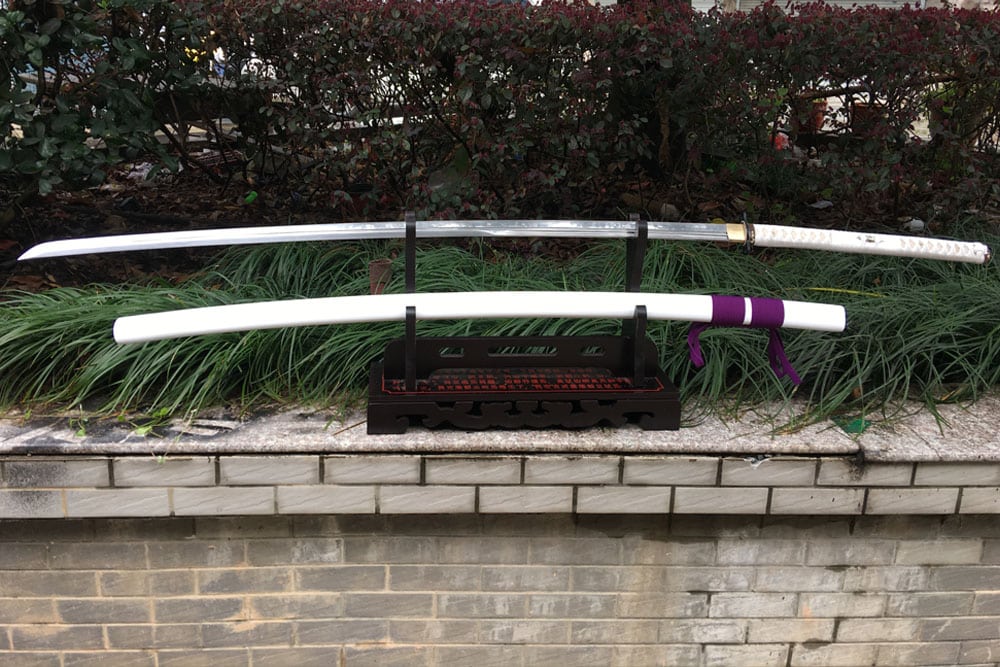
Sasaki Kojiro
However, there would be some warriors who would never let go of their Nodachi. Such is the example of swordsman Sasaki Kojiro, who, refusing to use smaller weapons, was known for his exploits with the long Nodachi sword. Eventually he would open a martial arts school and end up calling his Nodachi “the stick to wash and dry”.
Thanks to good training, he was able to use this weapon just as a normal Samurai would use a Katana, dealing quick and precise blows with it. He had even developed a special strike for his Nodachi called “the swallow technique”.
The Nagamaki is a Japanese weapon that could be considered a hybrid between a Katana and a spear.
It is a blade usually the size of a Katana but with a handle a length of 2/3 to the blade. Its name can be translated literally as long wrapping.
Throughout history, Nagamaki didn’t have a consensus on its design.
There are cases, for example, where the handle was even longer, or that could be coupled with another stick to create something like a naginata.
The same applies to the blade, which sometimes was more curved and sometimes straighter.
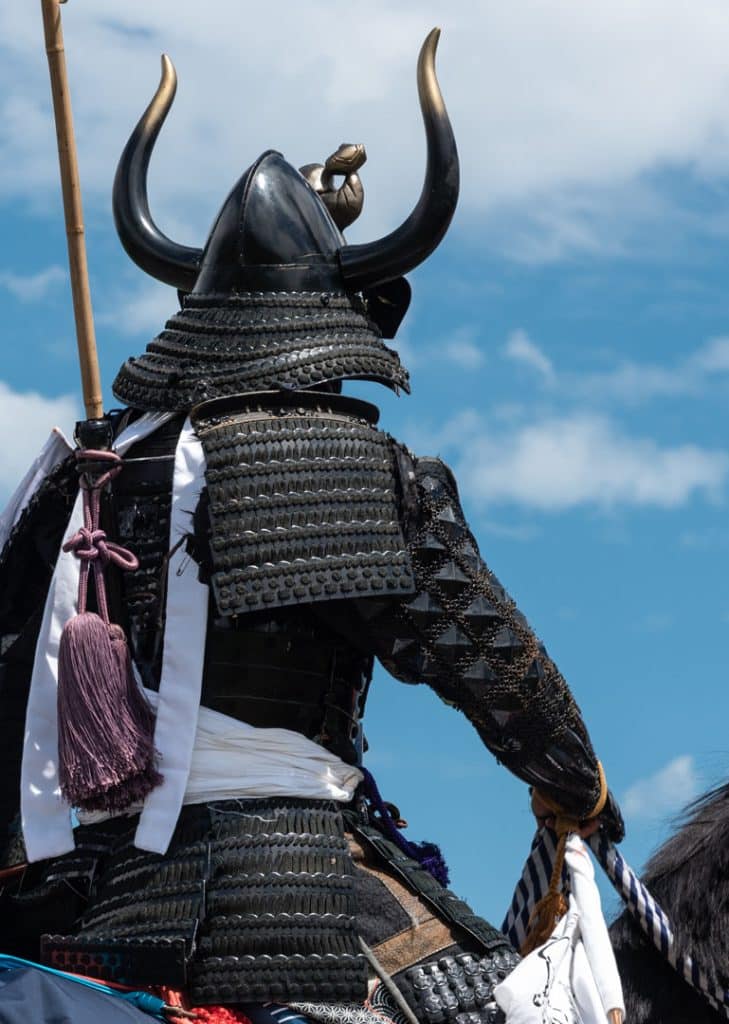
Nagamaki VS Cavalry
Like the Nodachi, the Nagamaki was born as an anti-cavalry weapon. However, unlike the Nodachi, this weapon has the balance point closer to the hands of its holder, making it much easier to wield.
That also makes it unable to hit as hard as the Nodachi, which has most of its weight on the blade.
Another advantage of the Nagamaki is that, having a longer handle, it can also be used for defense, to deflect attacks or protect against a rival too close.
Even to fight two opponents at the same time. And if the warrior saw himself against a horse, he would be in a better position to go out of range and injure the extremities of the animal, or reach the very rider.
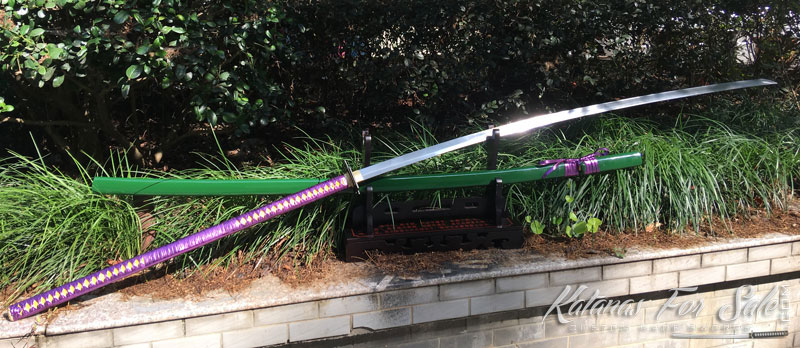
Custom Handmade Nagamaki 225cm in total length,
Nagamaki Sword Combat Techniques
The Nagamaki has a variety of combat techniques that take full advantage of having a longer handle. Some of these techniques include hits with the handle, spinning the Nagamaki, or holding it in different ways to adapt to situations.
The most common way to use a Nagamaki is for the warrior to hold the weapon in front of him in a fixed position, just as he would hold a Katana.
His right hand is as close to the blade as possible, while his left hand is much closer to the base, to help him maneuver and recover from the blows.
If held in the center, however, it can be used to deflect an opponent’s attack with the blade while hitting with the handle in a single movement. Or to stop a blade attack while tripping the opponent with the other side of the weapon.

Nagamaki in Battle
Its versatile design allows it to adapt to a variety of situations, and its effectiveness in battle depends purely on the skill of its bearer rather than its strength.
Although in combat it can be used in a similar way to a Katana, the Samurai can also take advantage of long distances and wide places to use it as a spear.
In this way, its bearer is able to give strong blows while keeping a safe distance from the opponent’s blade, using Sojutsu techniques.
The efficiency of the Nagamaki on the battlefield and the possibility of being used without requiring exceptional strength led the well-known warlord Oda Nobunaga to arm his soldiers with this weapon. In his ranks, the Nagamaki proved to be truly effective.
More than a type of sword, the Shirasya is a type of mount that is usually used to store the blade when it is not planned to be used for long periods of time.
You can also buy custom made Shirasaya swords in order to exhibit them.
Its name can be translated as white sheath, and it is a pure wood structure designed to preserve the blades intact, as within a common saya they could transpire and the blade could be damaged after a while.
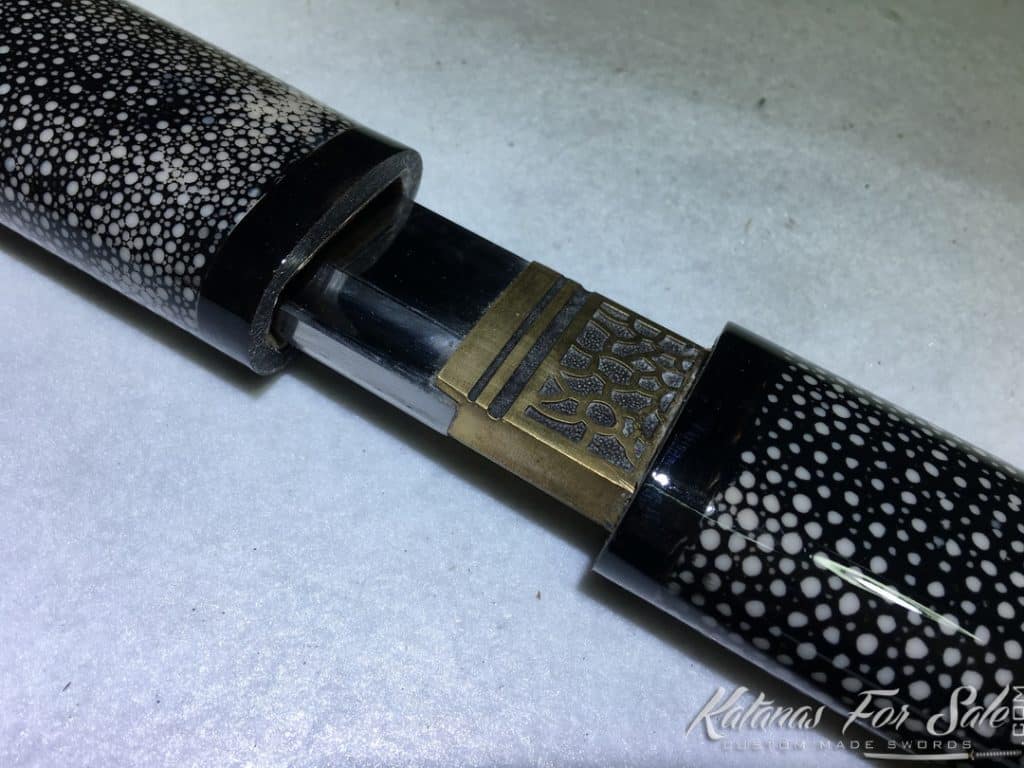
Shirasaya Construction
The Shirasaya has two central parts: the scabbard on one side and the handle on the other.
The Shirasayas can come in different sizes and measures, depending on the blade they are intended to hold. Thus, the most common thing for a Samurai is to have a kake with 3 pieces of Shirasaya on it; one with a Katana blade, the other with a Wakizashi blade, and the other with a Tanto blade.
Not for Combat
The Shirasaya is not designed to be used in combat, since its absence of tsuba, as well as Samegawa like a Koshirae handle made up of ray skin skin with ito wrap, presents serious difficulties compared to a real Katana.
If a Shirasaya were wielded, it could easily slip out of the hands of its wearer and fly away. In the same way the blade of the rival would not have inconvenient in meeting the hand of the Samurai, since it does not have hand guard.
No, the Shirasaya is not made for combat. The Shirasaya has two main functions.
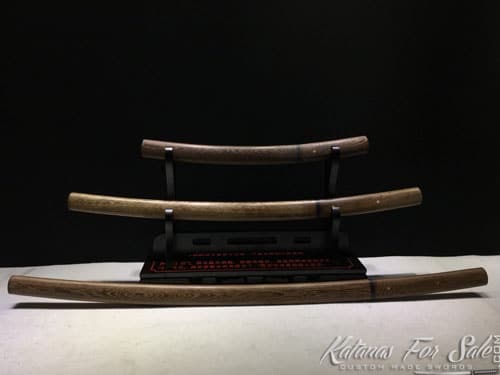
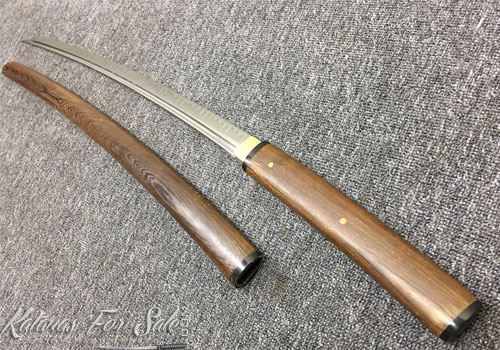
Preserving the Samurai Sword
On the one hand, it is excellent for preserving the blade of the Samurai’s weapon, because the pure wood of its saya does not perspire, and, being totally closed, it does not let the air come into contact with the sword.
On the other hand, due to its simplicity and elegance, it is a really beautiful exhibition piece. When it is sheathed, it looks like a single wooden staff. Although the most common thing is to show it half-drawn.
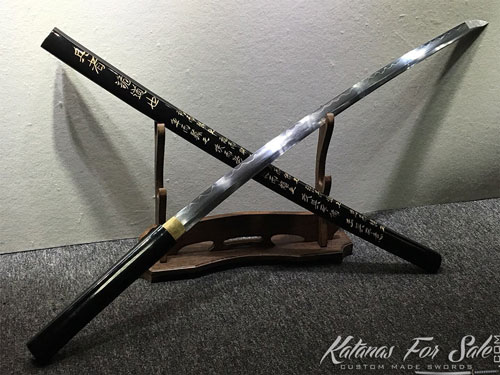
Shirasaya Katana
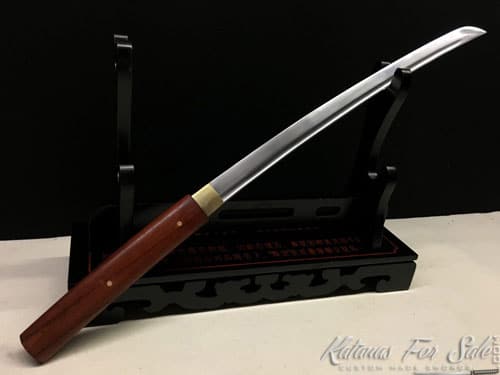
Shirasaya Wakizashi
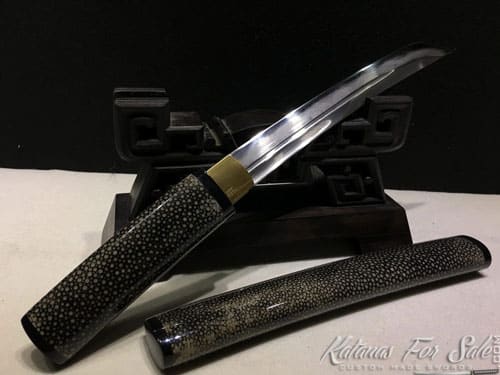
Shirasaya Tanto
Shirasaya for Modern Day Collectors
Shirasaya swords are especially popular among collectors, as they are the ideal complement for those who consider Katana to be works of art. They are usually exhibited in houses, as a symbol of power and elegance, or in dojos.
Another advantage of the Shirasaya is that the austerity of its design highlights the beauty of the blade.
Thus, it is not surprising that it is often used to show blades with hamon that have gone through a hadori polish, or those whose metal has been folded several times to display the hada.
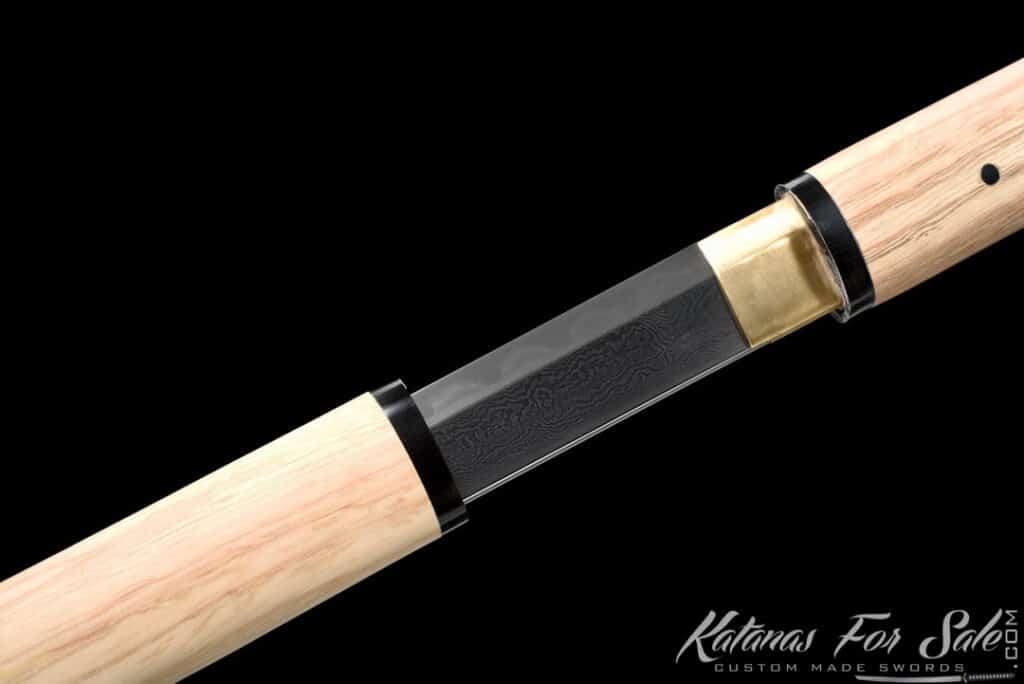
The Shirasaya is usually made with wood, traditionally honoki, but today they are also built with bamboo or other types of visually appealing woods. The exterior is polished and remains undecorated, although it is common practice to write famous phrases or quotes on it.
Once you’ve found the sword or weapon you like best, it’s time to think about the use you intend to give it, because depending on this you will need your sword to complete certain requirements.
What Use Do You Intend to Give Your Sword?
Now that we have covered the main Samurai swords throughout time, lets dive into their uses in modern day and the reasons you will want to have one.
There are many uses that can be given to a sword today: from cutting objects such as bamboo poles or Tatami mats to exhibit it or even everyday practice.
Depending on the use you will make to your Samurai sword, you will need it to meet certain requirements in the structure, the materials, and the forging process.
Sound complicated? Don’t worry. Below, we’ve wrote a list of possible uses that you may want to give your sword and we’ve detailed in them all the features you need for each one, so that you only have to look for the one that suits you best.
(Pss, do not be discouraged if you do not know any of the terms used, we will expand on them later. The important thing about this stage is that you know what do you need)
Are you ready? Here we go:
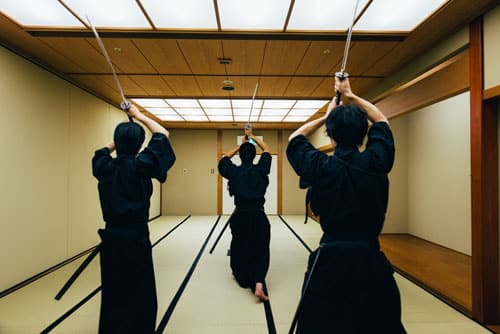
Iaito Swords
Practicing Iaido
Iaido is a martial art consisting of a person’s ability to draw a sword, among other similar things. Because of this, Iaido apprentices practice with real but blunt swords called Iaito.
If you are looking for a blunt edge Iaito, you still need to make sure that the sword has a Full Tang structure, otherwise it could fly out of the handle with recurrent use.
Some masters in Iaido prefer their student to use fully functional and sharp swords (Shinken swords).
Shinken Swords
Real use (Iaido, Iaijutsu, Tameshigiri):
Whether you want a real sword for practicing Tameshigiri or to cut things in the backyard of your house or simply because you practice a martial art that requires it, what you will need is a Shinken sword, which in English means “living sword”.
This is a fully functional sword, ready to be subjected to rigorous practices.
For that reason, you’ll need it to be Full Tang, with a sharp or Ultra sharp blade, and made of good steel (we’ll see more specifications on the steel below).
In the case of shinken swords, heat treatment and clay tempering is highly recommended to make the sword more resistant to blows.
You can also find these swords under the name “Battle ready sword”. It’s exactly the same, but with a cooler name.
It is expected that a clay tempered Shinken Katana will last for around 10,000 Tatami omote cuts if sharpened, and will require minor sharpening every 500 Tatami cuts.

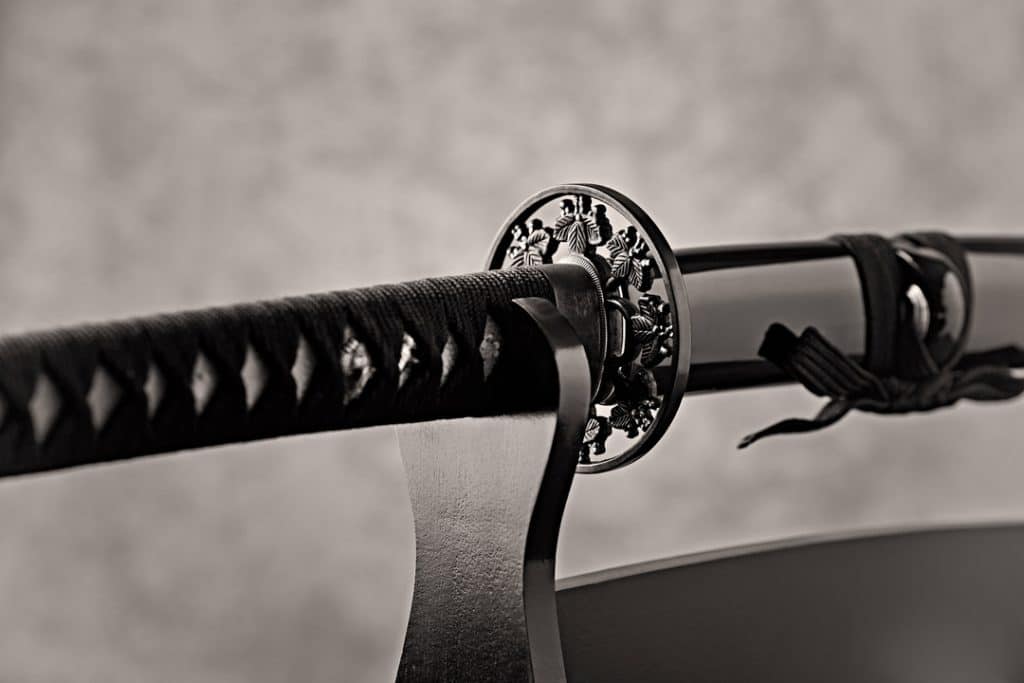
Decoration
Decorative Swords
If what you are looking for is a decorative sword to have on an altar in your dojo or hung on the wall of your house, then what matters to you is more the style of the sword than the materials it is made of.
In these cases, although it doesn’t have to be Full Tang, it is still highly recommended in case the sword would be ever swung if the Tang is not full it could suffer an accident.
As for steel, the only thing you should care about are the processes it goes through. A Katana with folded steel will not look the same as a non folded one.
Just as Hamon will be different if it is created from clay tempereing or if it was simply drawn. All these specifications can be found below.
Personal Gifts
Gifts for Men
Samurai swords are probably amongst the best gifts for men, receiving a sword and buying one as gift is quite a spiritual process, and the receiver most likely will be extremely happy with the gift as long as you know the quality of the sword he will be interested with.
If he is a serious sword collector or martial art practitioner, he might have some expectation from the sword and it is better to get a Shinken sword. some gifts can be symbolic and feature a blunt edge with some quote engraved on the blade which symbolize the relations between the giver and receiver.
Will you give it to him in a silk bag, or do you prefer a box? Will you give him the sword alone or will you include a Kake so that he can display it? Do you know exactly what design he will like?
For the latter, we do have a variety of already made Samurai swords designs that may fit the personality of the person you give the sword to. And in case you want to make it more personal, you can always customize different Japanese swords using our custom made swords section.
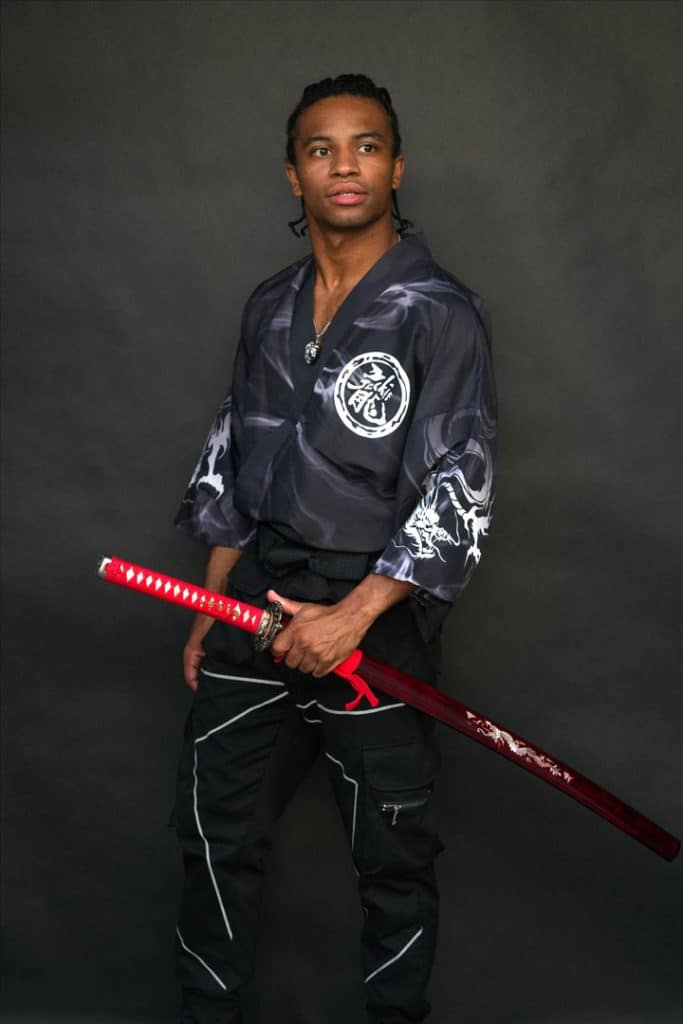
Samurai Swords Structure
You’re probably looking for a battle ready Katana. If so, the first thing you should know is that since this is not an official term, it can be used in many ways.
Maybe someone can call his Katana a “battle ready Katana” just because it doesn’t detach from the handle as soon as it’s wielded in the air.
Thus, someone might end up trying to sell you a stainless steel sword by calling it “battle ready”. And, as we’ll see in the next section, that’s very bad.
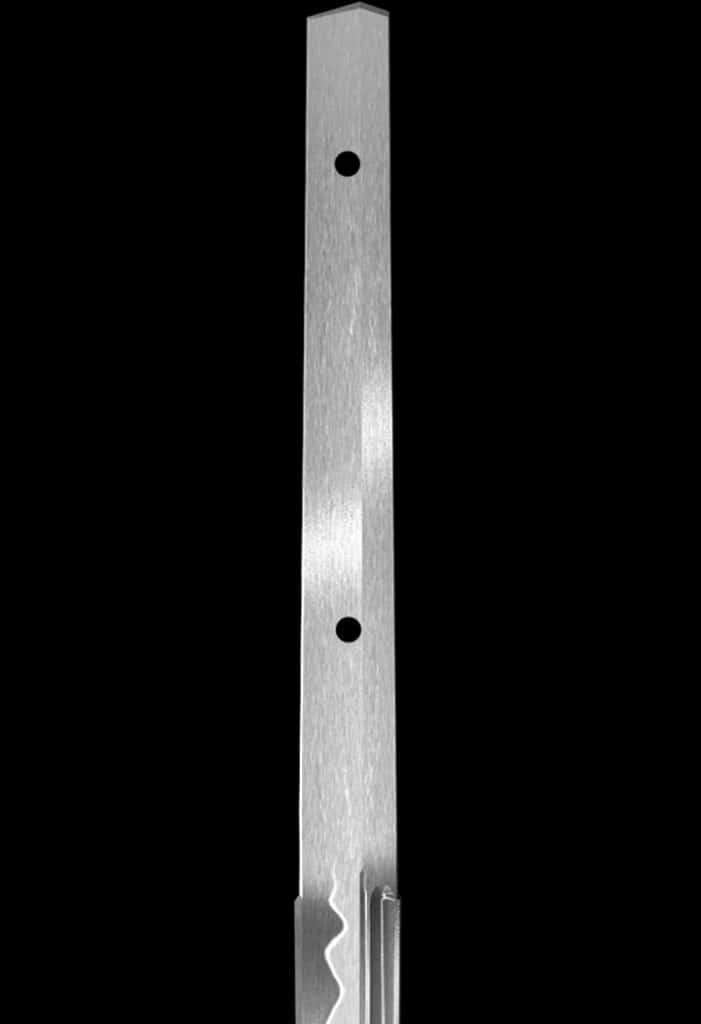
To be more specific, and for the sake of the article, we will simply agree that a Katana prepared for combat must be one that does not split in two when coming into contact with something else.
And for this to be so, the sword must have a resistant structure. A good structure will make your Katana resistant to strong blows, while a cheap one will split at the first moderately serious use.
In this area we can distinguish two types of structures: Full Tang (which you should aim for if you want a functional Samurai sword) and Rat Tail Tang (which you should avoid with regards to Japanese swords).
Full Tang Sword
When a sword is Full Tang both the blade and the handle are made of the same piece of steel.
This means that the inner part of the handle is an extension of the blade itself, and not another piece of metal welded to it.
This way, the sword is consistent and you can use it without fear.
All of the Samurai swords on our website are full tang held by two mekugi pegs, while some Tanto blades are held by just one mekugi.
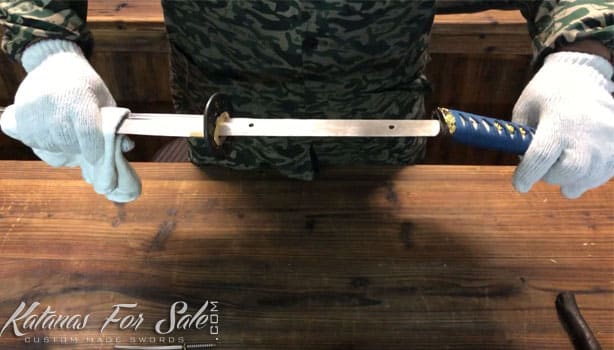
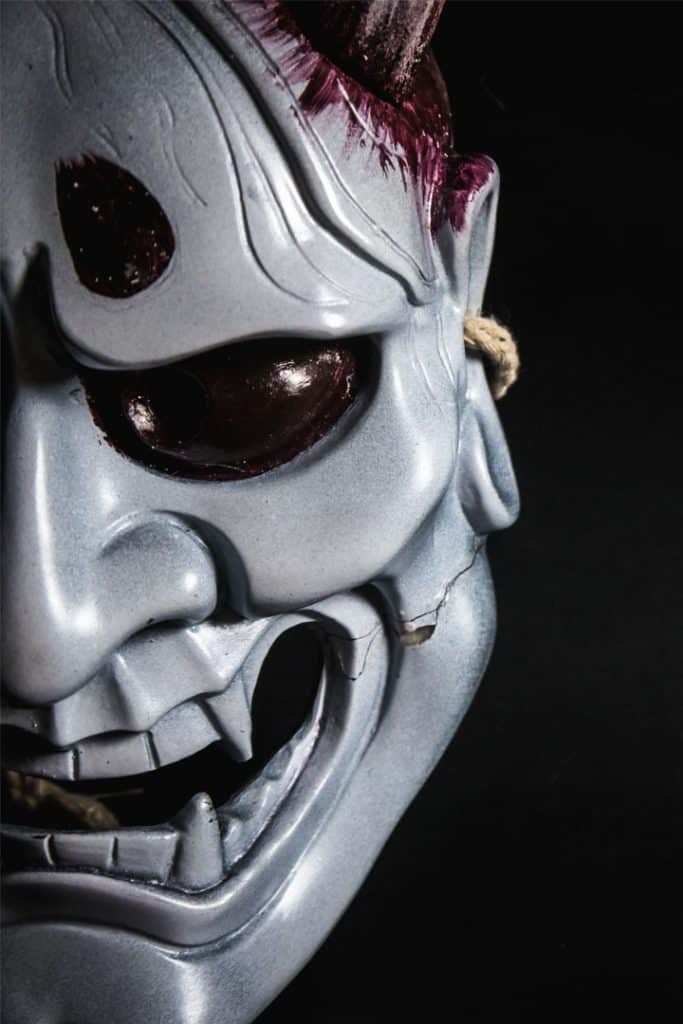
Rat Tail Tang
While some swords during history were made with a Rat tail tang, that is not the case for Japanese swords and should avoided at all cost.
Rat tail tang can mean two things,
One, that the blade of the sword and the handle is one piece of metal but the tang itself is a very thin metal rod.
Two, Sometimes they are two distinct pieces of metal. while the thin metal rod is welded to the blade.
A Samurai sword in these conditions is extremely fragile: it cannot be used, it cannot be wielded, and some even say that it cannot be looked at very fixedly because it also runs the risk of breaking.
Even if you hang it on the wall of your house you will live with the fear of it falling off. For this reason, it is best to avoid this type of structure.
How do you know if a sword is Full Tang or Rat Tail Tang?
Most of the Samurai swords you buy are going to have within the specified characteristics or description if they are Full Tang.
If a sword does not have this information, you may become suspicious. In case you are buying it in person, it is your seller’s obligation to give you this information.
Once you have it, however, if you still don’t trust it, you can check if it is Full Tang if you know how to properly disassemble and reassemble a Samurai sword, this is also useful for proper maintenance of the sword.
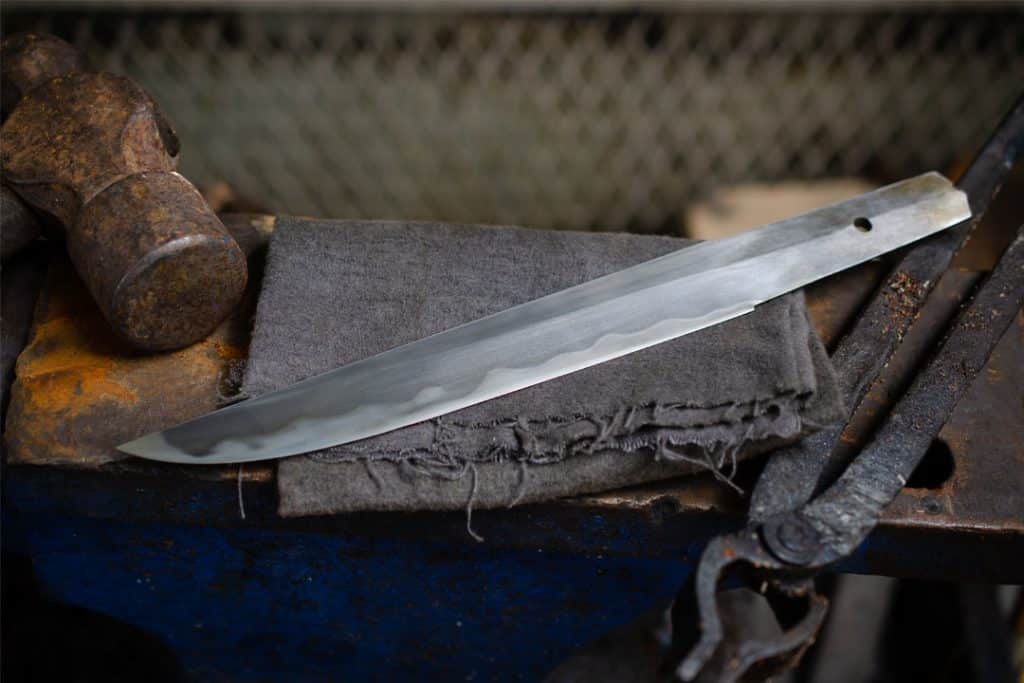
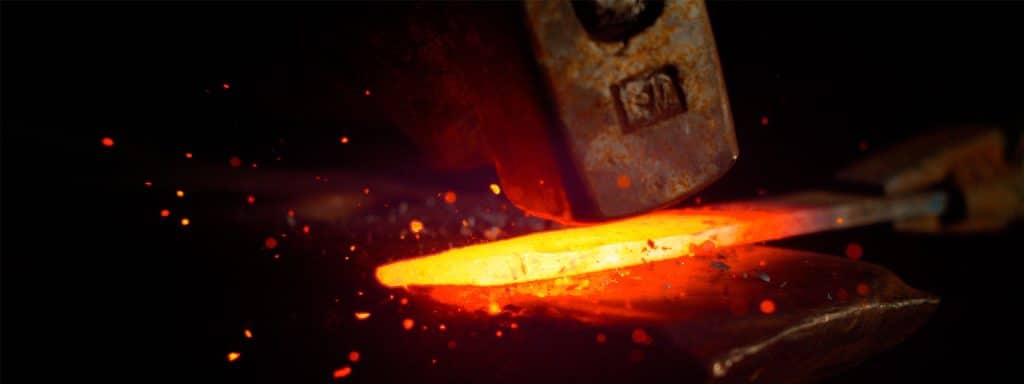
The first thing you have to know is that when it comes to swords, steel can be a bit capricious. At first you might think that the harder the better, but that’s not always the case.
Here comes into play also the flexibility of the Samurai sword, the hardness of the edge, and the various treatments that have been used to create the perfect weapon.
But let’s go by parts. What types of Japanese sword steels exist and being used in modern days?
There are different types of steels, each with its pros and cons. Next, we will talk about the most common steels used when forging Samurai swords.
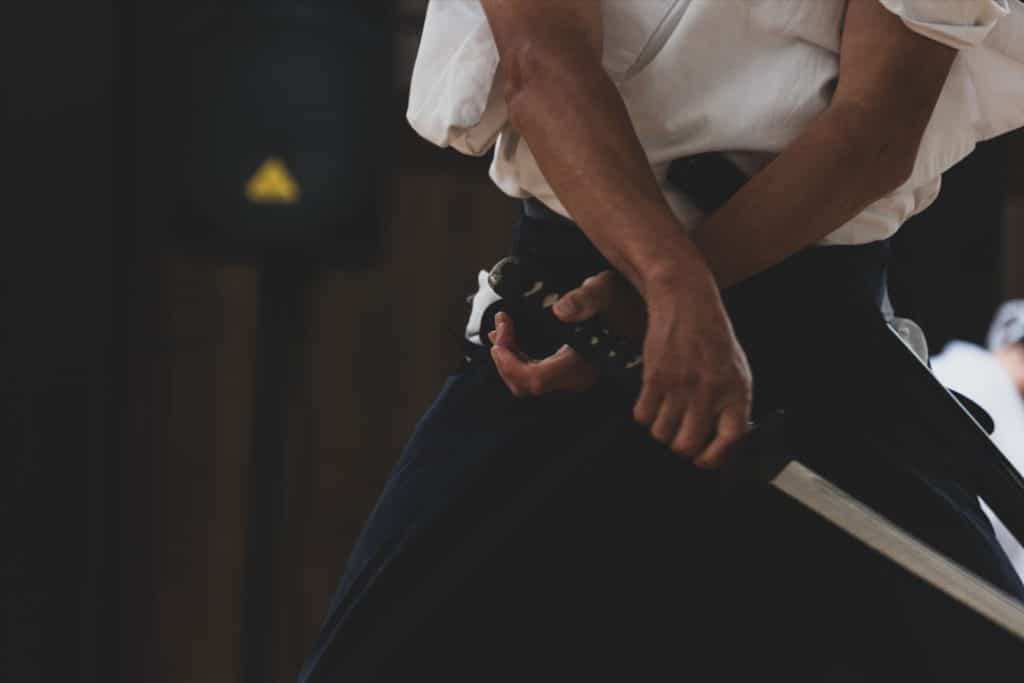
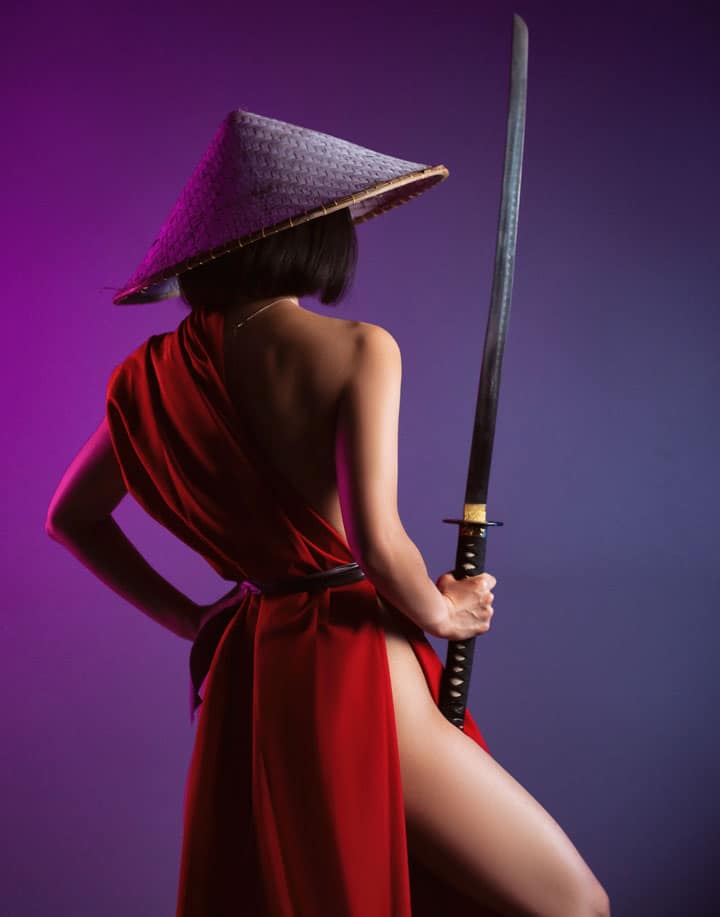
Stainless Steel Swords
While stainless steel finds many applications in today’s society, such as knife making, short blades, tools other types of accessories, under no circumstances stainless steel should be used to make Japanese swords.
Samurai swords created with this steel are extremely brittle and weak, and even their aesthetic value is questionable.
Stainless steel is great when it comes to relatively small blades, like tactical knives and daggers. However, when it comes to long swords it becomes brittle, and can cause the sword to break from a minor hit.
That’s why we say it’s not recommended even to display them!
Carbon Steel Swords
This is one of the most common types of steel found when looking for Japanese swords in today market.
When it comes to carbon steel, the number represents the amount of carbon in the blade.
The general rule is that the higher the carbon level, the more consistency the sword acquires. Thus, a high carbon 1095 (0.95% carbon) sword will be more hard than one made of 1060 steel (0.60%), and this in turn the 1060 carbon steel will be more hard than one of 1050 steel(0.50%).
Usually the lowest carbon content found on functional samurai swords is 0.45%. (1045 carbon steel).
This makes swords made of 1045 high carbon steel the cheapest and less durable, while the price and efficiency increases as the number increases.
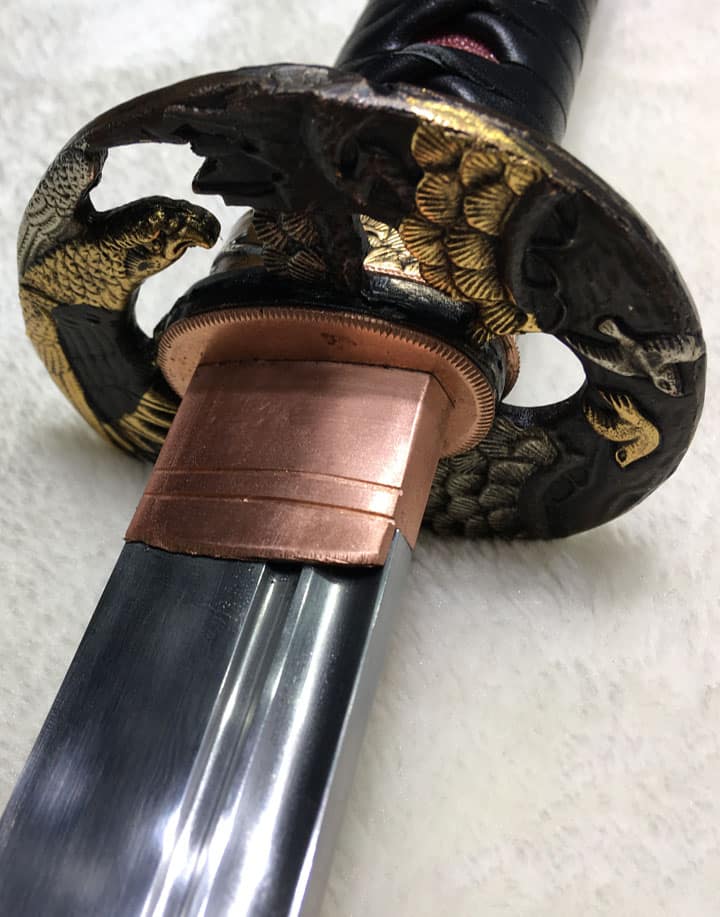
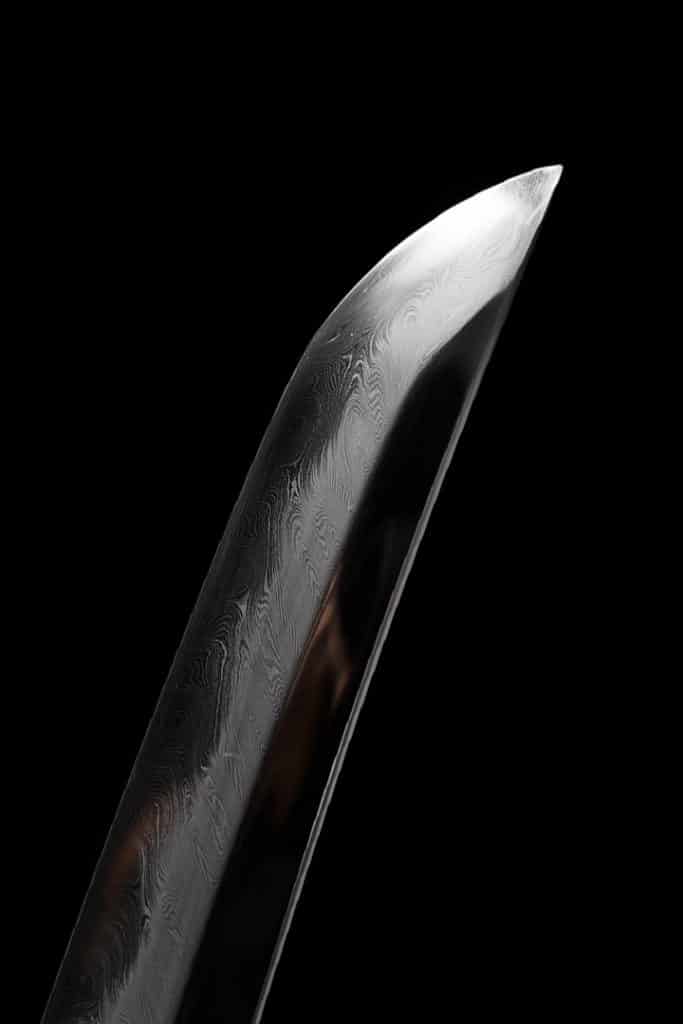
So, is a 1095 high carbon steel sword better than a 1060?
Well, that depends, as you may have seen, swords, like everything else in life, need a balance.
Consistency is not necessarily synonymous of a “better” sword. Yes, the more carbon the stronger and more resistant the sword will be, but in equal proportion it will be more brittle, sacrificing ductility and will also become more difficult to wield.
Under certain treatments like clay tempering the 1095 steel can become more efficient and durable than the 1060 steel, and will retain it’s sharp edge longer.
There is no clear answer to “which is the best sword” as it also depends on what you intend the sword for, Yet, Tamahagane steel is still considered as the best steel for Samurai sword making.
However, many experts agree that the ideal range for a strong, sharp sword is between 0.60% and 1.00% carbon content.
What do you prefer, hardness or flexibility?
T10 Steel Swords
Another type of steel that is superior to most other swords made of high carbon steel in terms of hardness and durability is T10 Steel.
T10 steel, also known as high speed steel, is an alloy of steel and tungsten. It has one of the highest carbon contents (1%) and a small fraction of silicone (0.35%).
The tungsten alloy makes this type of steel very resistant to scratches and abrasion, which makes the Samurai sword much more durable and requires less maintenance when not in use.
In addition, swords made of T10 steel keep their blades sharp for long periods of time.
Without a doubt, the T10 is an excellent steel if you are looking for a functional Katana that will be with you for a long period of time.
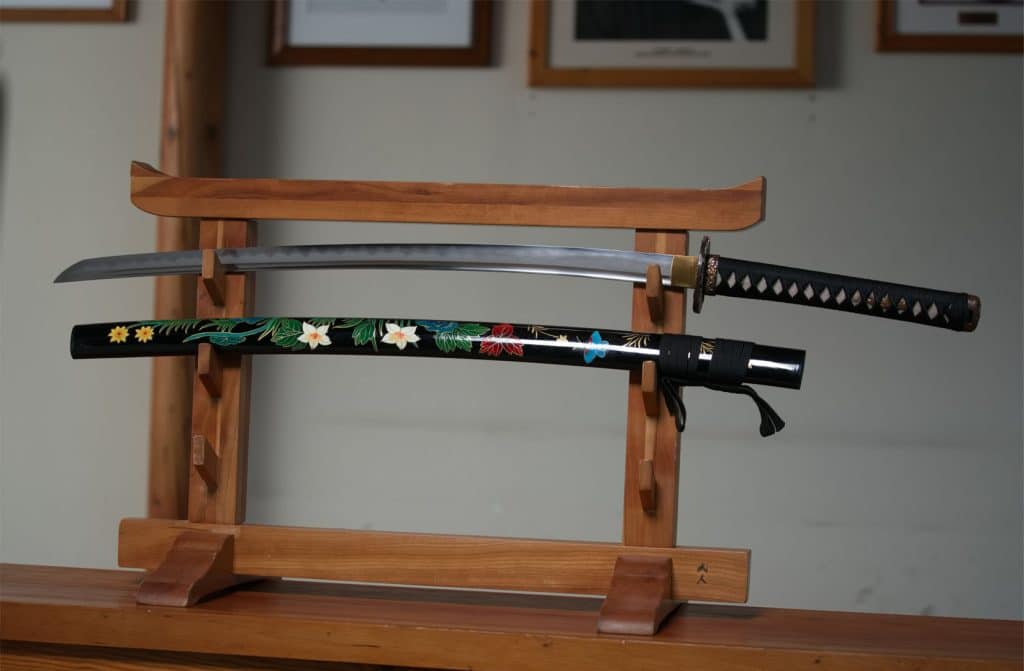
5160 and 9260, both with a carbon content of 0.60%, as the last two digits indicate.
Spring steel 5160, in addition to its carbon content, also has 0.7% chromium and 0.2% silicone.
This translates into an extremely hard and durable blade. This, plus a correct heating treatment when forging, can make a really powerful sword.
Spring steel 9260 contains a 2% silicone content, which gives it even greater flexibility than the previous one, making it more resistant to side impacts and allowing it to bend to an angle of almost 90 degrees without breaking.
If you are looking for a very flexible blade the 9260 spring steel is a great choice.
Tamahagane Steel Swords
The word Tamahagane can be translated as Jewel Steel, and is the type of steel that was traditionally used to make Nihonto Samurai swords.
It had to be found in the volcanic sand of the Pacific and it was necessary to make it go through a complex casting process to separate the pieces that were worthwhile from those that were not,
Due to the low quality iron found in Japan during feudal times, swordsmiths had to find a way to make their steel better, getting out the best from the worst. this resulted in the refined steel called Tamahagane.
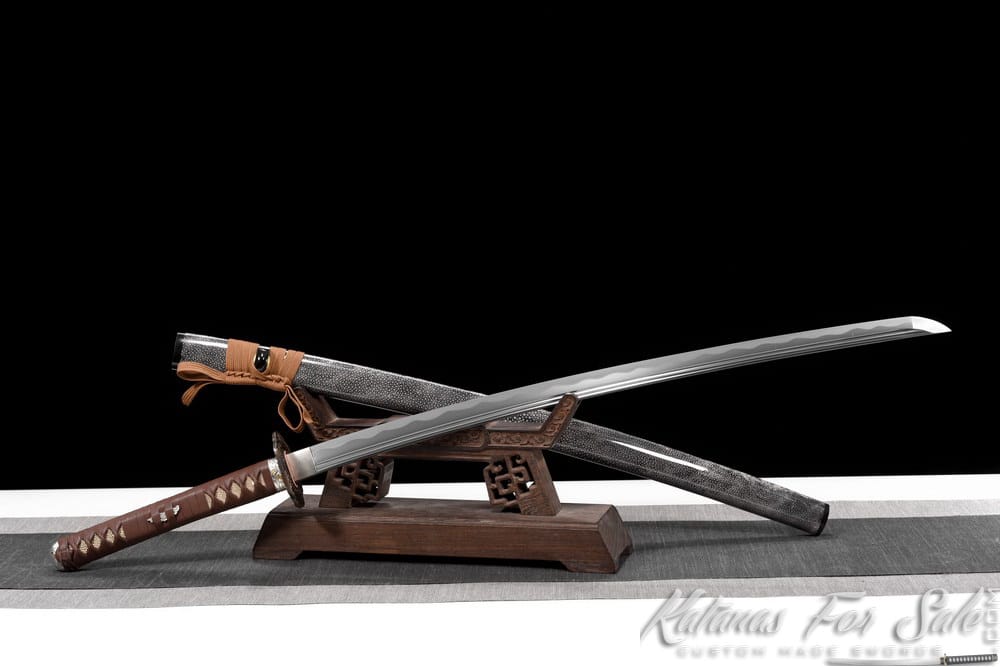
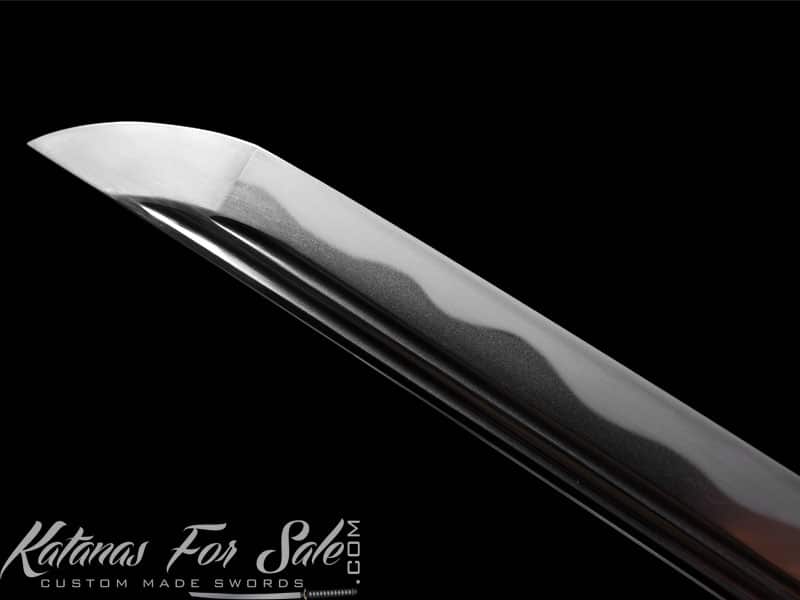
The high level of impurities found in the iron often pushed the blacksmiths to carry out different techniques to try to remove as much as possible of them.
Despite the complications involved in its making, the Tamahagane was capable of making extremely powerful swords, and could not be matched until long after the advent of the industrial revolution.
Due to the difficult process of making Tamahagane steel, the price is also very high with comparison to all other steel types, if you have the budget and want a Samurai sword made from traditional Japanese steel then Tamahagane is probably the best choice for your sword.
Damascus Steel Swords
There is Much mysticism surrounds Damascus Steel. This being the result of a technique that has been lost in history, like that of the famous Greek fire, it has been the target of a multiplicity of legends and myths.
It is important to note that there is a difference between Folded steel Samurai sword and actual Damascus steel.
What made Damascus steel special was the patterns that emerged along the blade. Today, however, we know that this is the result of a folding treatment of the metal, and that it does not endow the blade with any special attribute in modern times. Rather, it can even be harmful if done wrong.
Damascus steel pattern emerge on the sword when the steel is folded prior to forging, while Damascus steel was folded only several times, most of folded steel Japanese swords are folded multiple times (our standard is 13 folds) which creates thousands of layers of steel and results in a beautiful hada (grain pattern).
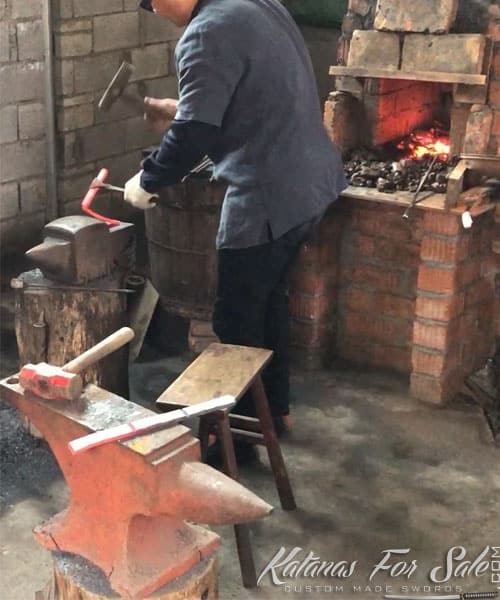
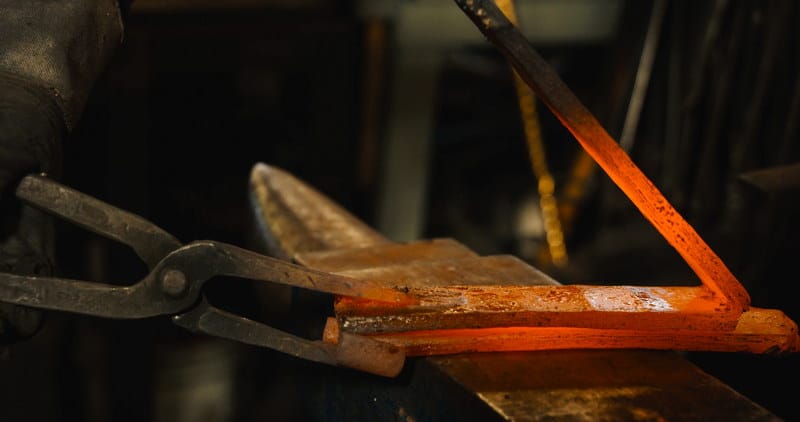
Folding the steel
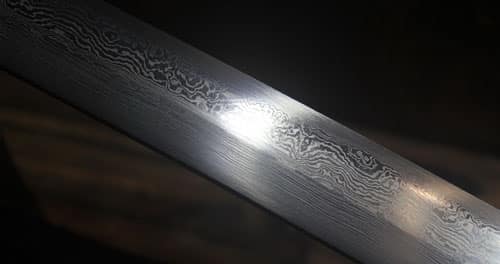
Folded steel pattern
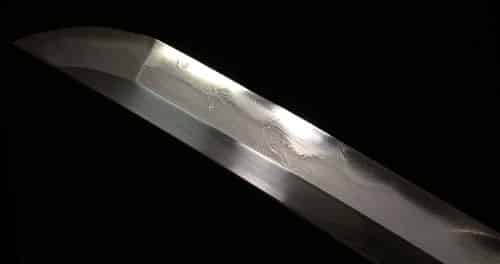
Folded Clay Tempered Steel with Polish
Today mostly the term “Damascus steel” is used as a marketing strategy to sell swords to enthusiasts as if they were fine pieces of engineering built with the remains of a meteorite fallen from the sky.
The truth is that, although today many claim to have found the recipe for Damascus steel, the swords made with it vary greatly depending on the blacksmith who forged it.
and if talking about folded steel for Samurai swords, it is important to note that the folding process on modern steel which is already pure, does not add any efficiency for the sword, moreover it is important that the folding is being done properly to prevent air sockets which can cause damage to the blade when it come in contact with a target while cutting.
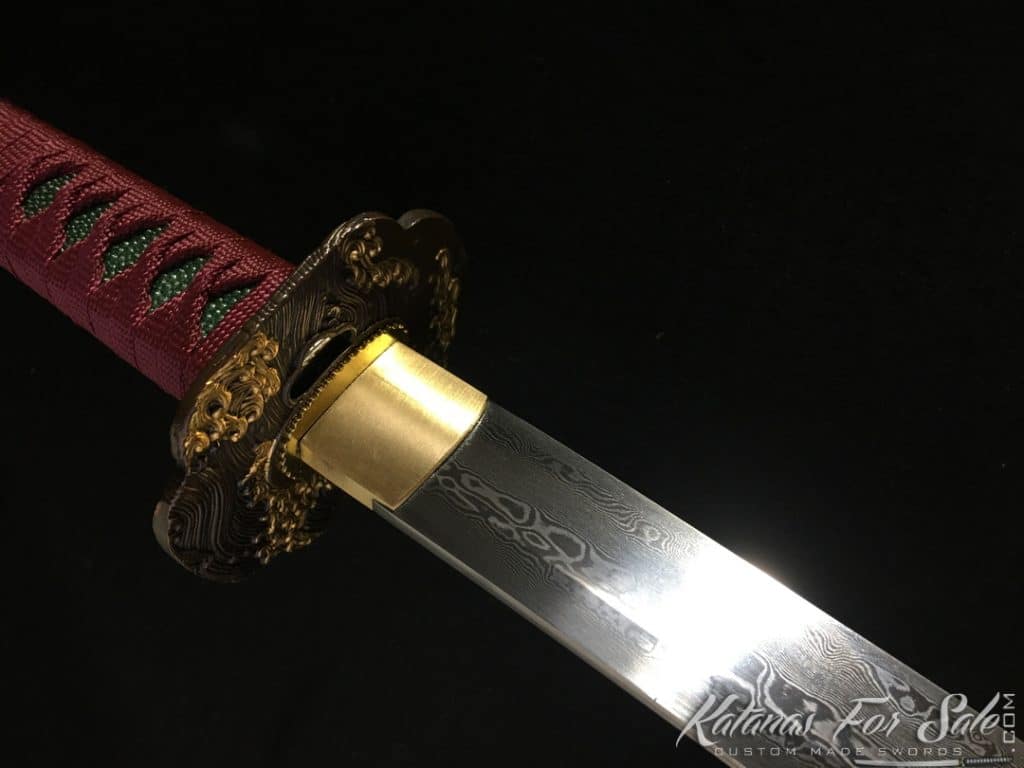
Samurai Swords Steel Treatments
When we speak of treatment in steel, we refer to the different processes to which the blade of a sword is submitted in order to provide different qualities.
Some treatments are practically obligatory when it comes to forging a sword, such as heat treating and quenching, which consists of cooling the steel by submerging it in water (or oil). Others are optional.
In order not to extend the post too much and focus on what you came for, let’s skip the mandatory procedures -those that any store with minimum standards meets- and focus on those that you can choose during the purchase process.
Get ready.

Clay Tempering (Aka. Differential Hardening)
Clay tempering is also called Differential Hardening, if you’re into technical jargon.
This is a process in which, during forging, the body and back of the blade is covered with clay while removing the clay from the edge before reheating. In this way, the part covered by the clay will cool slower, becoming more soft and flexible , while the blade edge will cool much faster resulting in harder steel.
This process greatly increases the strength of a sword. On one hand, by making the body flexible, it is better able to resist blows.
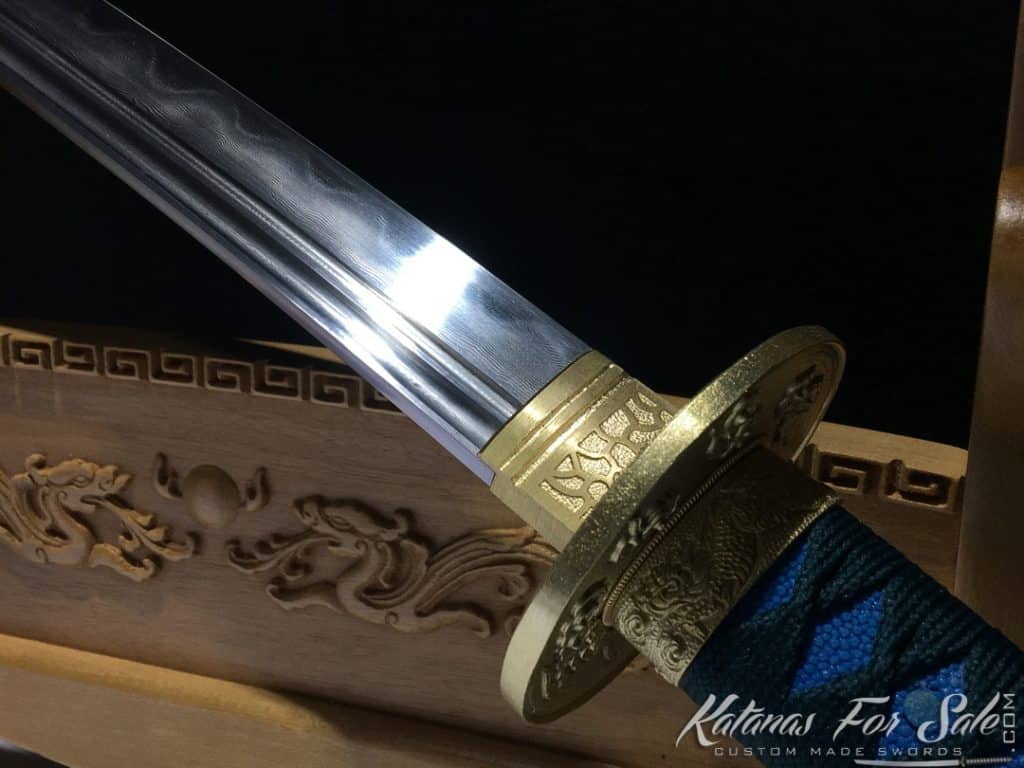
On the other hand, its hardened blade allows it to split the hard objects and retain it’s sharpness for longer period of time before requires resharpening. The best of two worlds, one could say.
It is estimated that a sword that has undergone this procedure can resist at least 10,000 cuts of tatami omote (10 years of heavy use), and that it only needs a minor sharpening every 500 cuts (six months of heavy use).
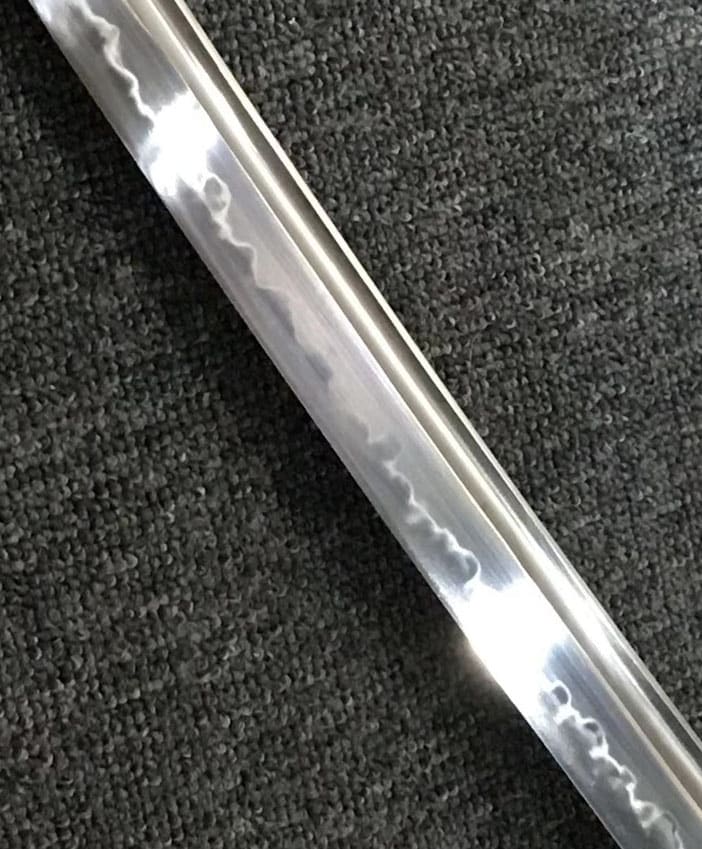
For many, clay tempering is both an artistic and a scientific procedure, and with good reason. Not only does it endow the sword with the qualities mentioned above, but it also causes undulations known as Hamon to arise along the blade.
These undulations are so longed for that in the case of cheap swords it is sometimes painted. However, a true Hamon is indistinguishable, completely unique to each sword, and will depend greatly of the artistic qualities of the one who carries out the process. This results in a wide variety of Hamon to choose from.
The Hamon
When choosing a sword, you will find a wide variety of Hamon patterns to choose from; sometimes specified, sometimes not. Here are some of the most common Hamon you can choose from when buying a sword.
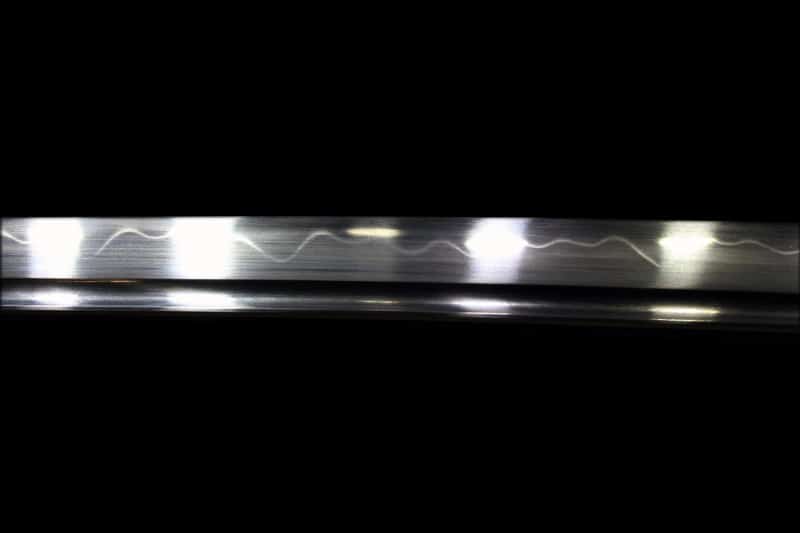
Notare (Wave Hamon)
Everyone’s favorite. It is a pattern of very harmonious undulations, similar to the waves of the sea.
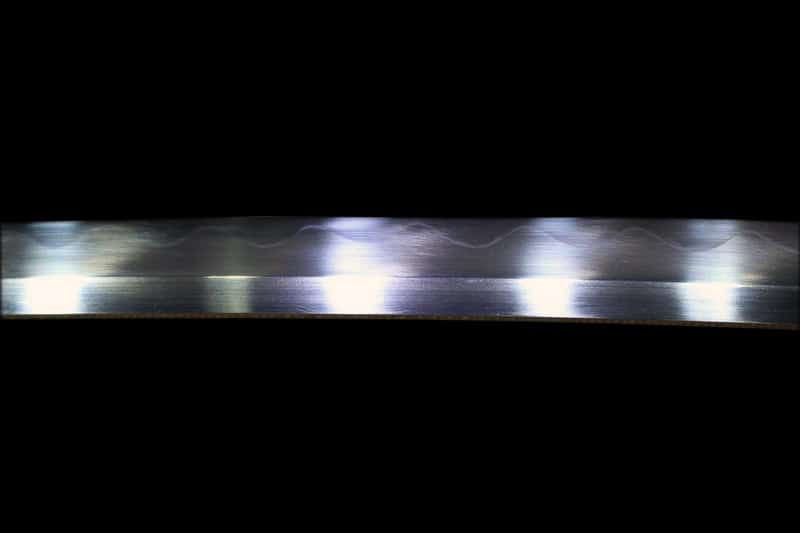
Gunome (Hamon in semicircles)
This type of Hamon is also one of the most famous. Unlike the Notare, here the pattern is more pronounced in the form of small semicircular mountains.
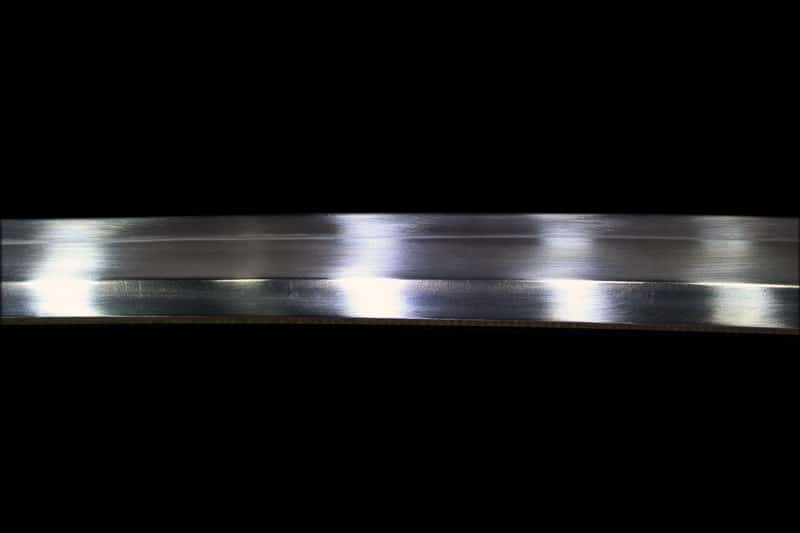
Sugu (Straight Hamon
This type of Hamon can hardly be called “pattern”. It is rather, as its name indicates, a straight line. Austere, simple, and elegant.
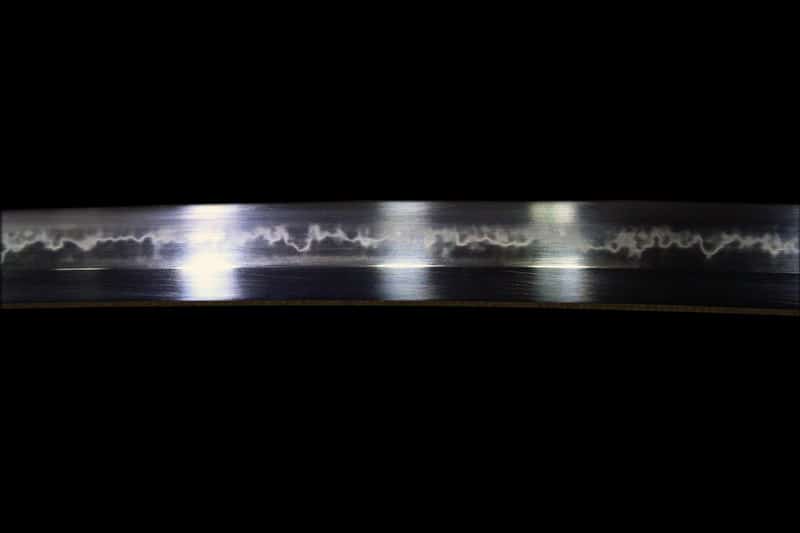
Choji (Irregular Hamon)
This is a type of Hamon that is characterized by its small, irregular and pronounced waves.
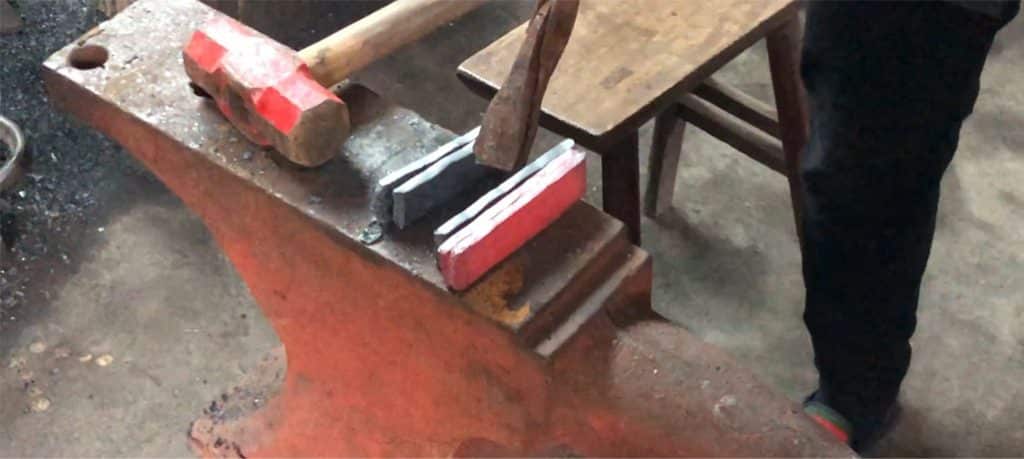
Folded Steel VS Non Folded Steel
While many of the myths that once abounded about folded steel are now disproved, it is never too late to clear up the doubts: that a sword has this treatment does not make it any better.
But this was not always the case.
In the past, when the steel that was obtained had too many impurities, this was an almost obligatory process for a good blacksmith.
By folding the steel and hammering it multiple times, the steel was able to detach many of its impurities, resulting in a more consistent sword.
As a consequence of this process, a series of patterns known as Hada appear along the body of the blade, similar to those of wood grain -not to be confused with those of Hamon.
The number of lines that form these patterns will depend on the number of times the steel has been folded.
With an exponential growth, if you fold it once you will get 2 layers (the top and bottom), but if you fold it twice then you will get twice as many layers (4), and if you fold it three times you will get twice that (8).

Thus, it is normal for the steel of a sword to be folded, for example, 13 times, creating 8192 layers. A steel folded twenty times would get a million layers, but usually it is not folded as many times.
The most common is to find swords whose steel has been folded between 8 and, at most, 16 times. Less of that the result is poor, and more of that is practically indistinguishable.
As we mentioned before, although this process used to be necessary to eliminate impurities, today it is a purely aesthetic procedure.
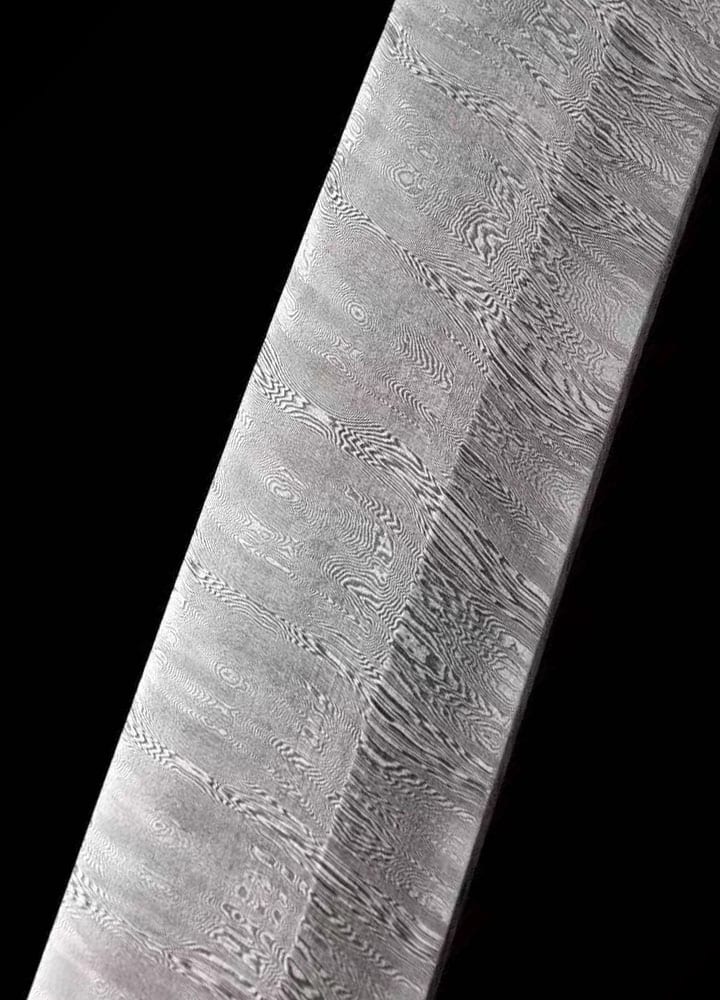
For some it is worth it, because having a folded steel Katana is closer to the good Katana swords of feudal Japan.
At the end of the day, deciding whether or not to have a folded steel Katana is a matter of art. And it’s up to you to decide if it’s worth it or not.
If you’re not sure what a folded steel Katana would look like, you can check out many of the folded steel Katanas we’ve designed here.
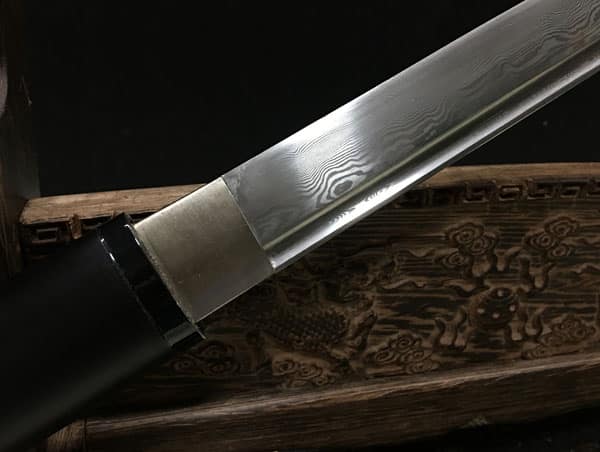
1095 Folded Carbon Steel
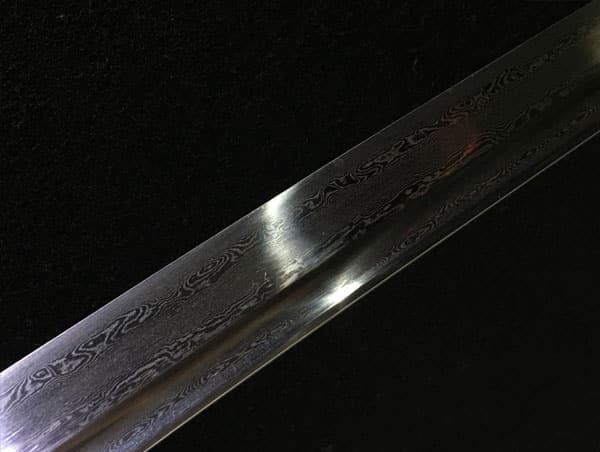
9260 Folded Spring Steel
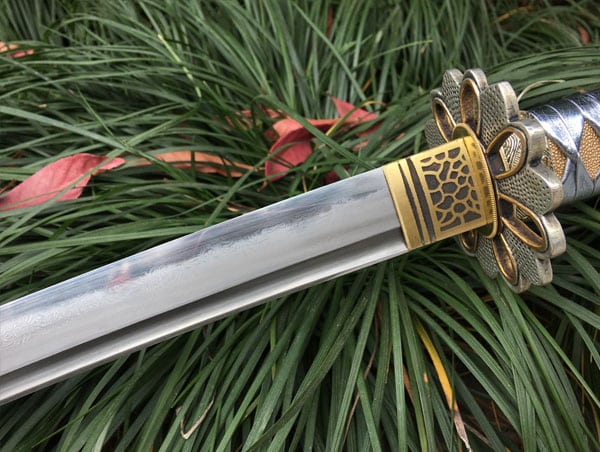
Folded Clay Tempered Steel with Polish
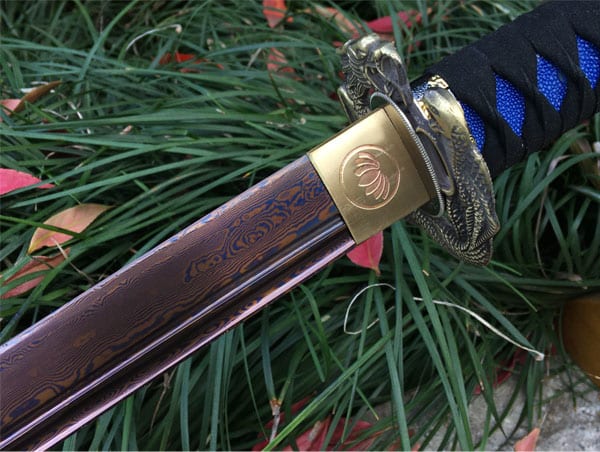
Folded Steel with Purple Acid Dye
Hadori polish
Some shops selling Samurai swords like on our shop at Katanasforsale.com there are extra options and services to enhance your sword beauty, one of the most saught after technique is the Hadori Polish.
The Hadori polish owes its name to the Hadori stone, the tool used for this task.
It is a water stone used due to its coarse surface, which helps highlight the hamon of the differentially hardened Samurai sword during polishing,
Giving a more striking finish to the blade. However, the quality of the result of the process will be strongly determined by the skill of the polisher.
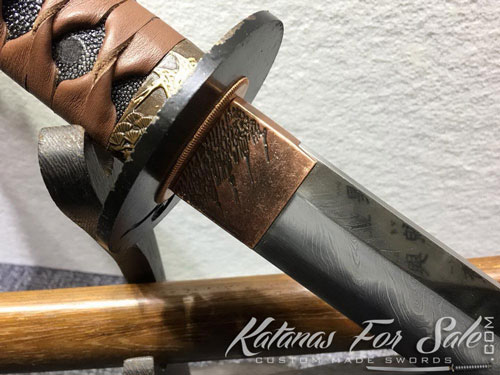
Samurai Swords Mounts
The mount is the structure in which the sword will be found. It should not be confused with the Kake, which is where it is displayed. When we speak of mounts, we speak of the structure in which a Samurai would carry his Katana in his daily guard.
In this respect, we can find two types of mounts.
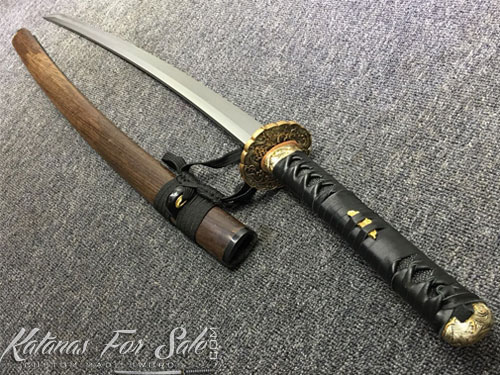
Koshirae Mount
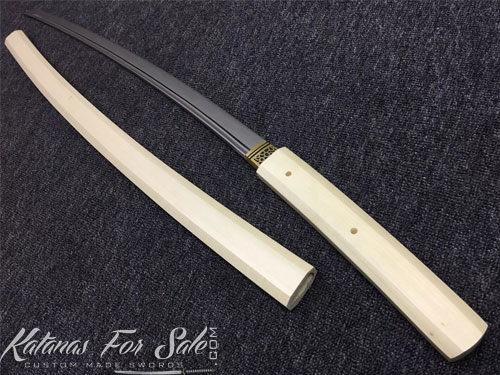
Shirasaya Mount
Koshirae Mount
The first mount, Koshirae, is the one intended for daily use and is the one most Samurai swords bring by default.
It usually consists of a lacquered wooden scabbard (Saya), sometimes reinforced with horn inlays, and a piece of metal (Shitodome).
Through the Saya passes a silk or leather cord known as Sageo, which is tied to the Hime of the Samurai (part of the obi belt).
The Koshirae features important fittings such as the Tsuba (handguard) which help protect the hand from the opponent sword, Fuchi and Kashira (handle collar and pommel), ornamental menuki which help keep the handle intact and works together with the other fittings to provide better grip.
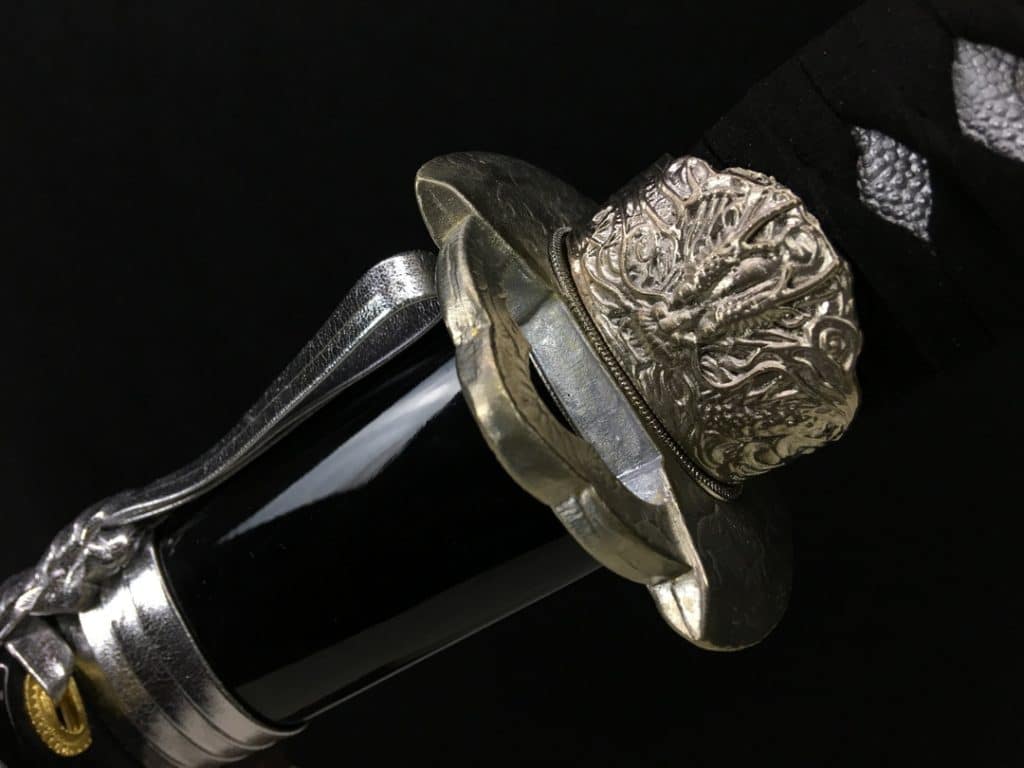
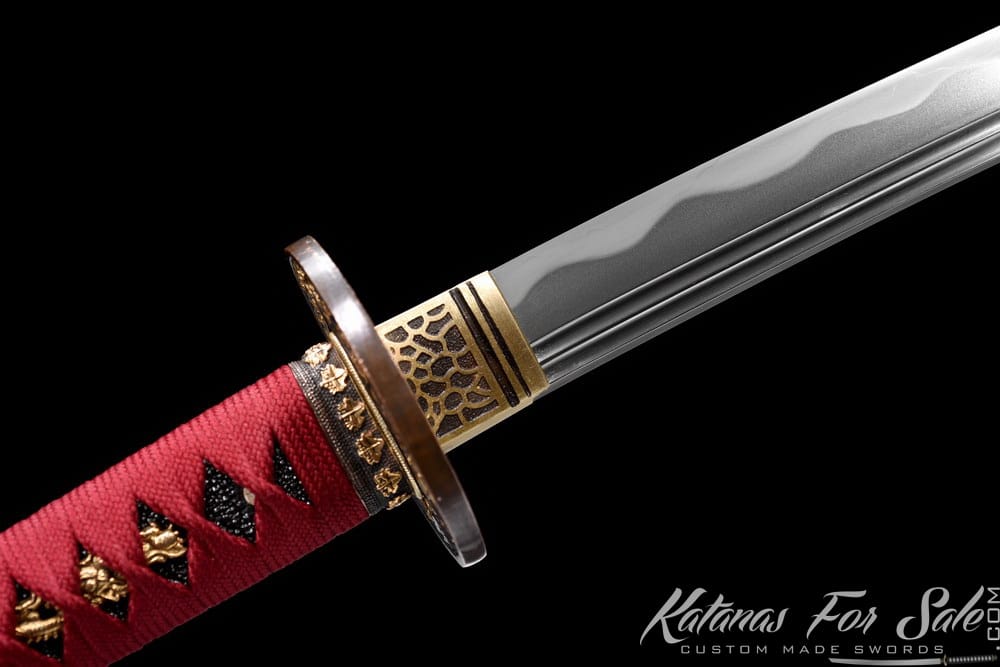
Another important aspects in the differences between Koshirae and Shirasaya is that the Koshirae Tsuka uses a wooden core handle wrapped with ray skin samegawa,
The Samegawa provides non slip grip even if the hands were sweaty or soaked with blood. (imagine Samurai in the battlefield, the Samegawa is extremely important to allow the wielder stable grip on the sword).
The ito wrap covers the Samegawa and helps keep the handle and fittings in place while the sword comes in contact with the target.
Shirasaya Mount
In the other hand is the Shirasaya.
This type of mount is completely opposite to the previous one, in the way that while the Koshirae is intended for regular use of the sword.
The Shirasaya is used to hold the sword for long periods of inactivity.
This mount consists of a simple wooden structure involving both the handle and the Saya, so that when the Katana is sheathed it looks like a single piece.

Not having the accessories required for a functional sword, such as the ray skin for the grip of the handle and the Sageo for tying the saya to the belt, this type of pieces are relegated only to the exhibition.
At first, what you will surely be looking for is a conventional sword with a Koshirae mount.
However, having a Shirasaya, especially if it’s your favorite sword and you want to keep it intact for many years, is always a good option.
Not to mention, of course, how elegant it is to display a Shirasaya in your home or Dojo.
Samurai Sword Handle
What we might call the Katana handle is somewhat more complex than that of normal swords, and is divided into several parts which works together in perfect harmony.
Let’s go by part by part.

Why is it important to know the pieces of the handle of the Katana?
Well, as you enter this world you will discover that Samurai swords are enormously complex.
As you’ll see in this section, the handle itself is made up of a variety of accessories, each with a purpose. Best of all, it can be assembled and disassembled at will.
This means that if one day you want to change some part of your Katana, either because you want to design it to your liking or because you want to replace some damaged part, you can do it without any major inconvenience.
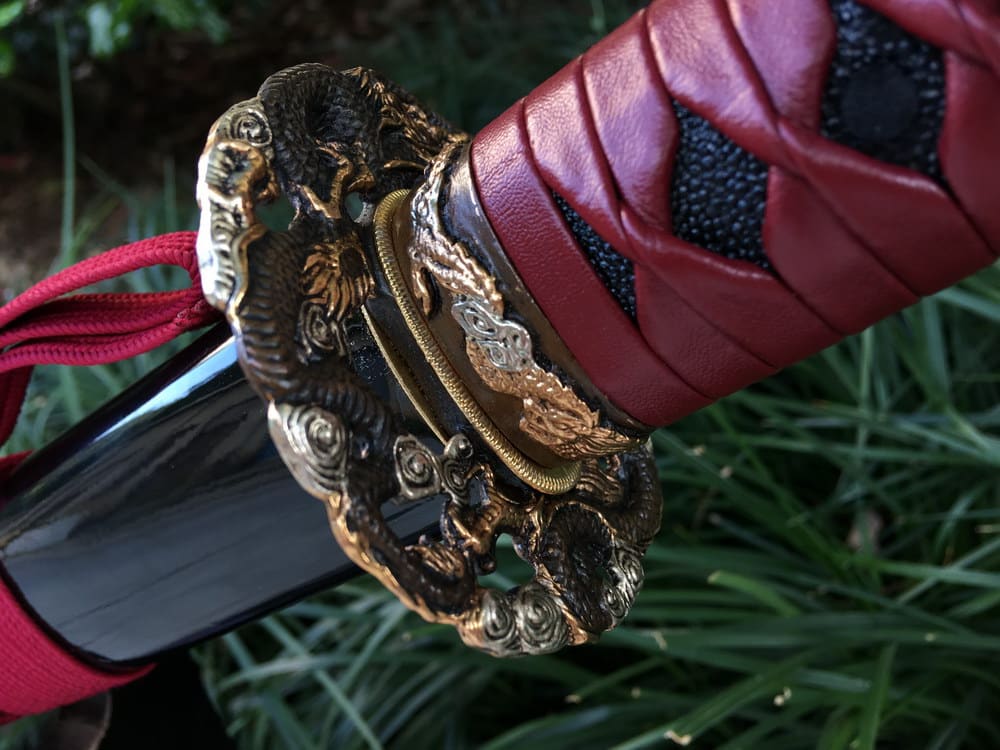
What is the handle of a Katana composed of?
Tsuka, is the handle itself.
The handle of a Katana is a complex piece, the result of years of perfecting the creation of swords.
While in other parts of the world the handles were limited to being a piece from which to grab the weapon, in Japan were a whole system in which each small part played a role.
The handle of a Katana consists of a wooden core. This is secured to the blade by one or two pegs, usually made of bamboo, known as Mekugi.
The wood core is wrapped in ray skin, known as Samegawa, which gives the wearer an excellent grip.
Then the entire handle is wrapped in a cotton, silk or leather ribbon known as Ito. This wrapping makes the handle more comfortable and in turn allows it to attenuate shocks greatly, there are several types of wrapping styles.
Samurai Sword Fittings
Below you can find some photos and descriptions of each samurai sword fittings parts.
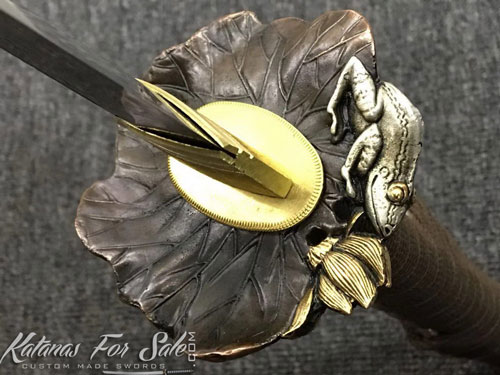
Seppa
Seppa are the spacers that can be found on top and below the Tsuba, together with the Fuchi, it serves to absorb the vibration of the blade at the moment of impact and for the Tsuba to adjust better.
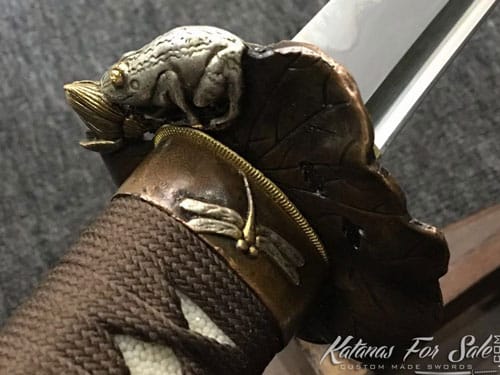
Fuchi
Fuchi is the hilt collar that can be found between the Tsuka and Tsuba. The fuchi covers the opening of the Japanese sword handle. The tang of a sword goes into the tsuka through the opening in the fuchi.
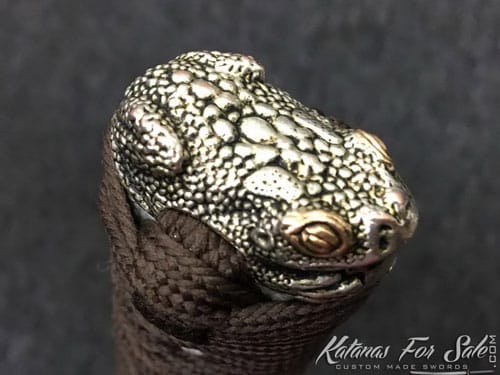
Kashira
At the base of the grip is a piece known as Kashira, which is the pommel, not only it helps to hold the Ito intact but also can be used to give non-lethal blows to the opponent from short range.
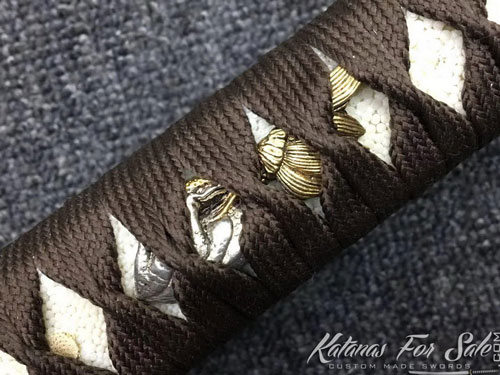
Menuki
Underneath the Ito are metal ornaments known as Menuki, which can have different shapes. The Menuki also helps securing the ito and Kashira in place when the sword is being used.
Tsuba – Handguard
Tsuba, is the handguard that protects the Samurai’s fingers from both the rival’s sword and his own -for, in case the sword slips, the blade of the sword could come into contact with his hand, cutting it.
The Tsuba is basically a disc that can be made with different artistically worked materials. Some special specimens can be worth as much as a sword.
The Tsuba consists of a main hole to fix it to the handle, but it also usually has two lateral spaces.
These were traditionally used to hold a small knife (Kozuka) and a stiletto (Kogai).
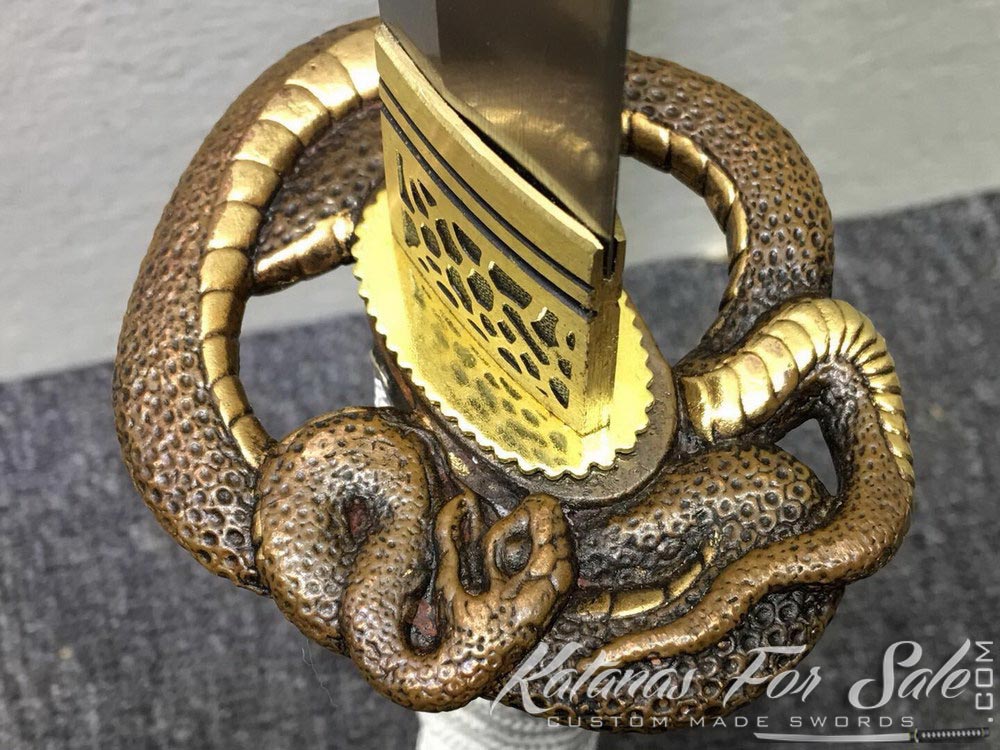
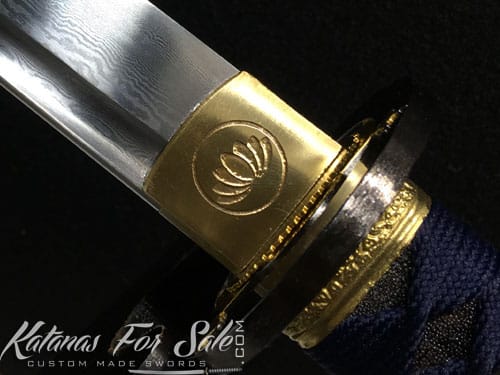
Habaki – Blade Colar
Above the Tsuba itself is the Habaki. This is the blade collar that secures the Tsuba to the handle and helps secure the sword in the saya.
Habaki, is a copper or brass band that wraps around the blade and serves to protect the Samurai when drawing the sword.
The Samurai used it with the same function with which a cowboy would cock a revolver: to prepare for the attack.
This involved pressing the Saya with the thumb until the Habaki, which held the sword secured to it, emerged. Once the blade was released, it could be drawn in less than a fraction of a second to deliver a deadly blow to its opponent. This is known as koiguchi-o-kiru.
In koiguchi-o-kiru, the Samurai pulls the sword with his finger, leaving the Habaki free. Like cocking a revolver, this is a threatening gesture.
Samurai Sword Saya
“Saya” is the name given to Japanese sword scabbard.
They are made of lightweight materials; usually some type of wood with a lacquered finish.
In addition, unlike a normal scabbard, it has several characteristics that make it more efficient and transform it into a unique object in its class.
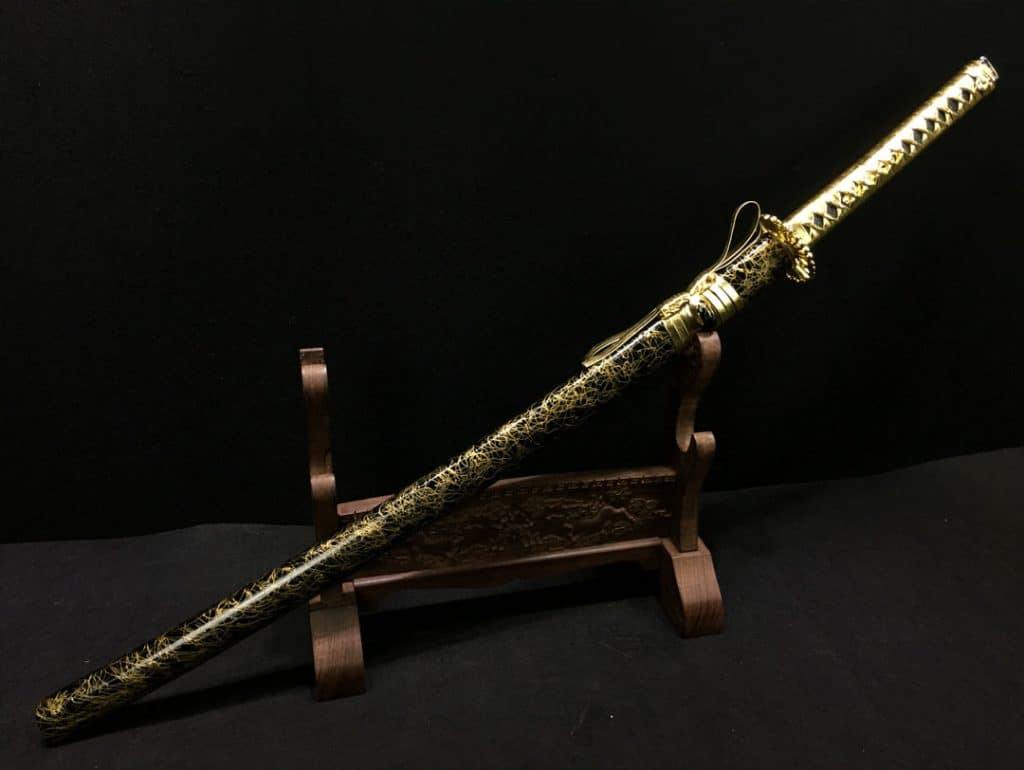
Everything in the design of the saya is made to provide optimal protection for the sword while facilitating the drawing. So effective is this one that the samurai had developed a unique fighting style that consisted of drawing and attacking at the same time, delivering deadly blows in fractions of a second, with a speed impossible to match for conventional swords.
The saya is made up of different parts and pieces:
Kurikata: This is a wooden knob in which the sageo is adjusted.
Shitodome: Metal inlay that goes inside the kurikata. This prevents the sageo from wearing away with friction, as it would if it were in direct contact with the kurikata.
Sageo: The cotton, silk, or leather cord that connects the sheath to the samurai’s belt. It serves so that he can comfortably carry the sword when walking and always have it at hand.
Koiguchi: This is the hole in which the blade of the sword is inserted into the saya. (Usually made of buffalo horn)
Kojiri: It is the end part of the saya. (Usually made of buffalo horn)
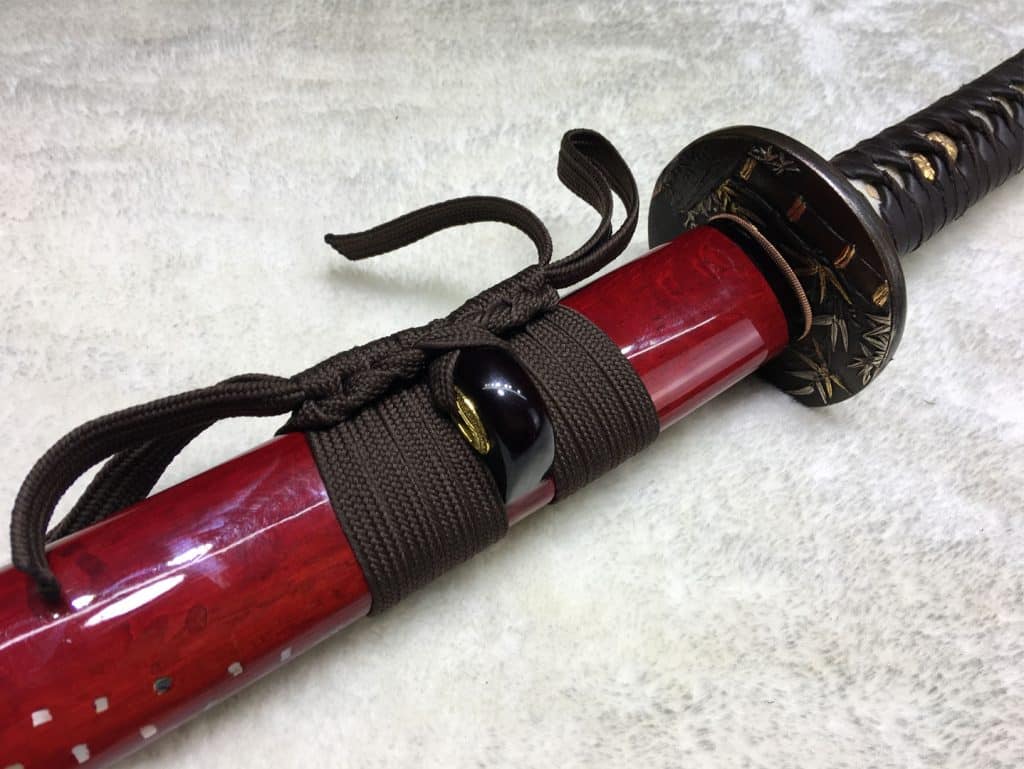
Where to Buy Samurai Swords?
Well, you know what you can expect from a sword depending on its materials, the different uses of these, and the parts of which they are composed. Now comes the hour of truth; to seek them out.
The first thing you should know is that 90% of the swords distributed around the world come from Asia. Whether from Japan, China, the Philippines, or India. And in these countries, you can find both good and bad practices.
In this section we have separated the different types of places where you can buy Katana blades and other Samurai swords, analyzing the pros and cons of each, and what you can expect from them.
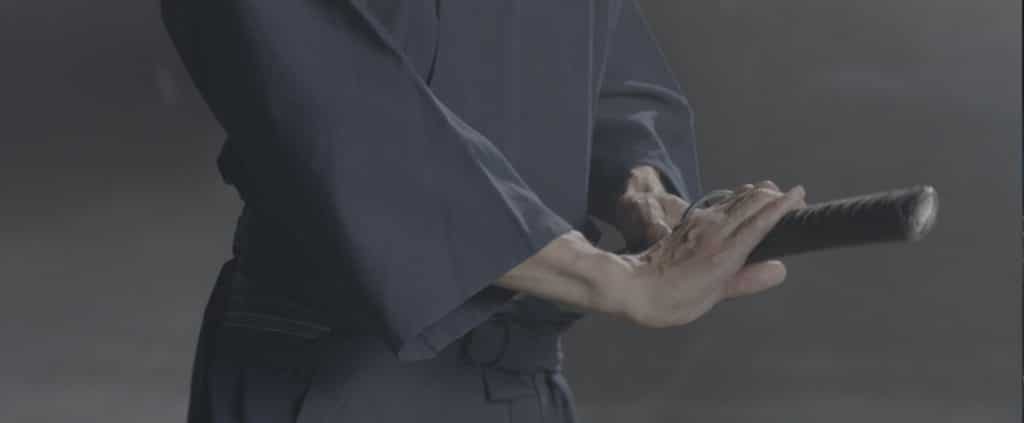
Mass Produced swords
If you have searched the internet you probably came around different types of massive marketplaces, you will have noticed that many swords can be found in them from different sellers.
Everyone who sells there say that their swords are made of the best steel and all that stuff. However, searching for swords in this type of stores is the equivalent of buying a computer in a hypermarket.
Do you have options? Lots. Do they claim to be the best? Sure. Do they really work? Well…
Most of the time, no.
So, where to buy Samurai swords? Well, while not all swords sold in these stores are bad, and there are honest sellers, it is very difficult to discern which is the real deal and which is not.
And if you fail, sometimes what you can expect from one of these swords is that it breaks at first use. This is fine if you don’t intend to use it and if it was sold to you at a cheap price.
However, the problem is if they sold you that sword for functional and aesthetic purposes and they are not as claimed.
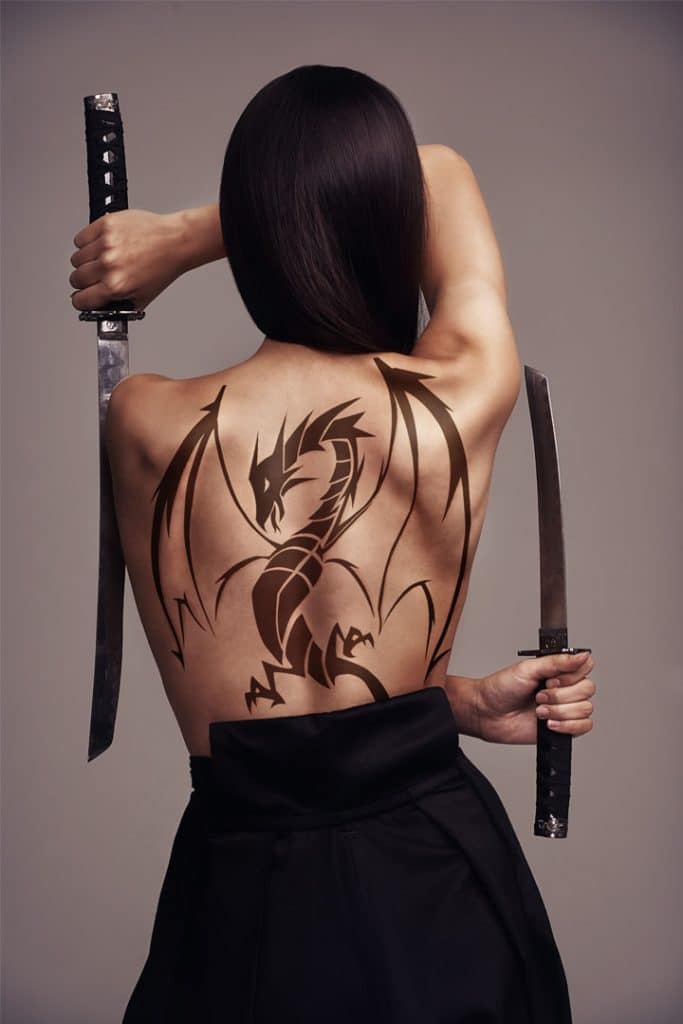
If you are going to buy in these hyper markets, the best thing is to limit yourself to buying cheap products, which can’t disappoint you. And in case they do, at least have a clear conscience for not having spent too much on them.
The vast majority of the vendors in these stores claim to have forged the swords themselves. This is, if not false, at least doubtful.
Some sellers buy their swords from Chinese factories that produce them in mass.
In them there are no master blacksmiths, only workers.
These, though experienced, lack the skills necessary to make real Samurai swords or the time to devote to each one the required attention.
In these places one comes to work. And thanks to this, they are able to produce up to 100 swords per day.
All of them, as you would expect, made of cheap materials such as stainless steel. And even, to top it all, with Rat Tail Tang!
At the end of the day, when you are looking for Samurai sword with a minimum standard of quality, you move away from hypermarkets, because you know everything is dispensing there to be sold in mass, reducing costs as much as possible.
Similarly, if you are looking for a functional sword the best thing would be to find someone you can trust and that will provide you with great customer service and care.
Hand Forged Swords
This is where the goods starts.
When it comes to hand-forged swords, instead of mass production factories we find the most varied organizations.
From sheds with blacksmiths, small private workshops to families forging swords in their backyard. They are all moved by the same thing: the love for Japanese swords and the desire to create the next valuable piece.
When it comes to hand-forged Samurai swords, each blacksmith devotes the time needed to the swords. They forge them, usually by hammering them by hand, with authentic materials and subject them to the necessary treatments to make functional swords.
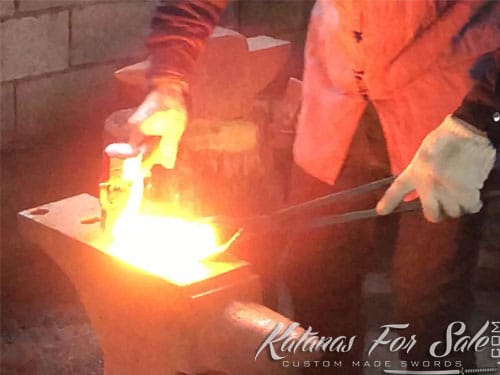
And even, depending on the buyer’s needs, they submit them to optional treatments in order to enhance the power of the sword or it’s appearance as well as you are able to customize the size and shape of the sword among other treats.
Sometimes the process may not be as “fashionable” as we might have expected from an ancestral culture in the forging of swords.
The truth is that nowadays few are the places that comply with all these characteristics.
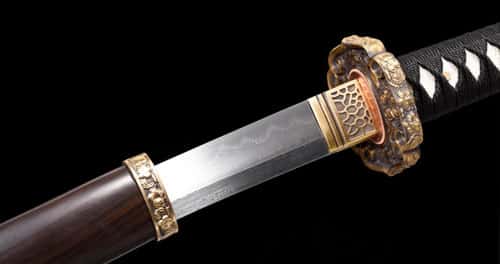
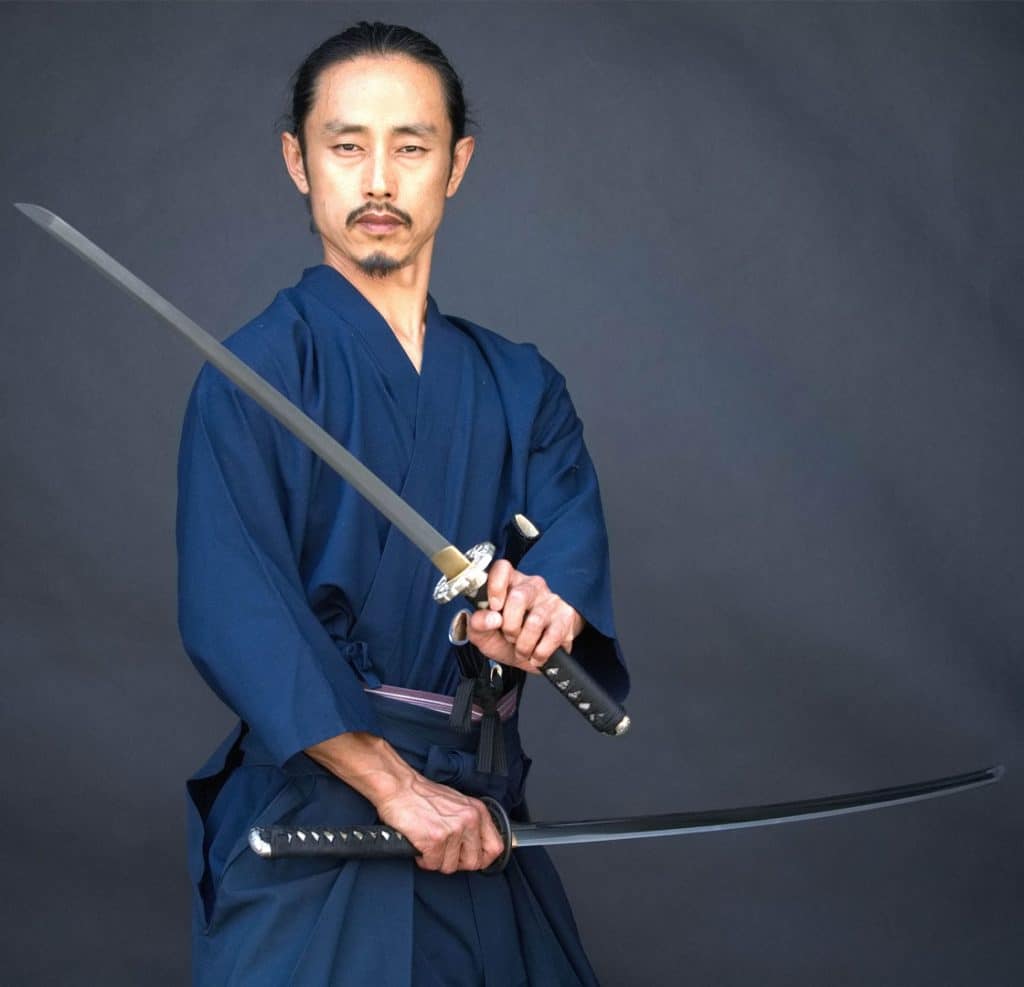
Eventually it is all depends on the swordmaker, his experience and expertise. When putting those into the craft the result is unquestionably strong sword.
There is a reason why most buyers looking for functional swords choose these handmade Samurai swords.
they are strong and affordable.
And many of them are as good for practice and cutting as Katana swords made in Japan. Which, just because they were made there, can cost between $12,000 and $50,000.
When to buy handmade swords?
Well, if what you are looking for is a functional and resistant sword, have limited budget and you don’t care about the nationality of the blacksmith but about the result he offers, then these are the swords for you.
Newly Made Samurai Swords of Japanese Craftsmen
First of all, you should know that Japan is not allowed by law to produce mass functional swords.
The only thing they can do is to make aluminium zinc swords that cannot have a sharp edge and are only used for training. (Iaito)
Real swords are sparingly produced by experienced masters who use Tamahagane steel.
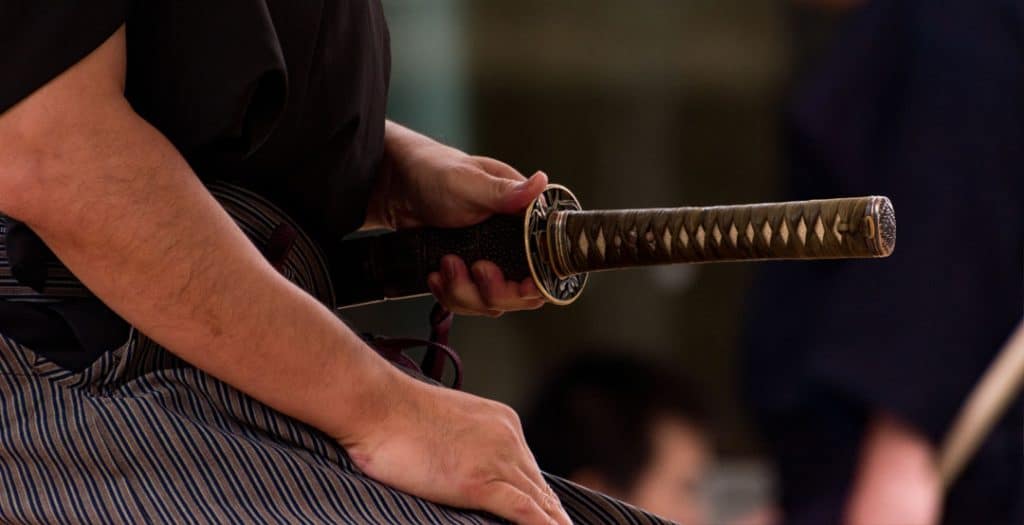
These are created mostly with traditional tools, but some modern machinery such as power hammers are also used to shape the metal at first.
In addition, the entire process is highly mystified, and the swords go through a serious spiritual ritual that seeks to endow them with a special power.
Due to the limitation on sword forging in Japan and the care that goes into each of these, prices can become really high.
We are talking about prices ranging from $5000 to $13,000, just for a bare blade.
When it comes to whole swords, they range from $12,000 to $50,000. Some can be even more.
When to buy swords made by Japanese craftsmen?
When what you are looking for is a sword made in Japan, pampered to the utmost detail, and you have no problem paying for it.
If you are with the budget, you can contact us for arranging for you a sword made in Japan, please note that waiting time can be 1-2 years for a custom made blade.
Antique Samurai swords
In the online markets you can also find antique Samurai swords.
If you search on different websites you will find a variety of antique (or so called antiques) swords to buy.
Most of them are from the Second World War. However, there are also several that are from earlier times.
Antique Samurai swords are pieces of history rather than just swords, and are therefore not intended for use but for exhibition.
This does not mean that they are not able to cut as well as a functional Katana. However, you must keep in mind that the years take their toll on the metal. And you don’t want to spoil an expensive old sword.
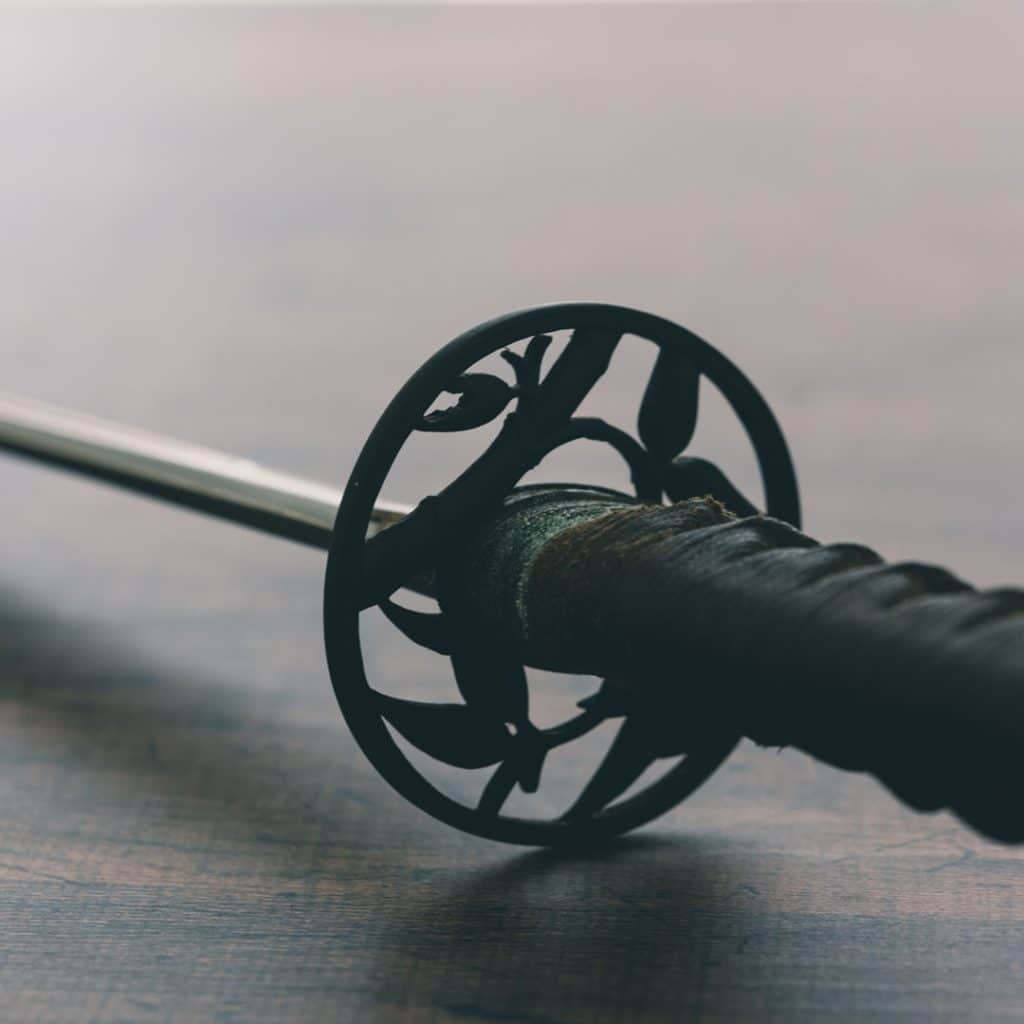
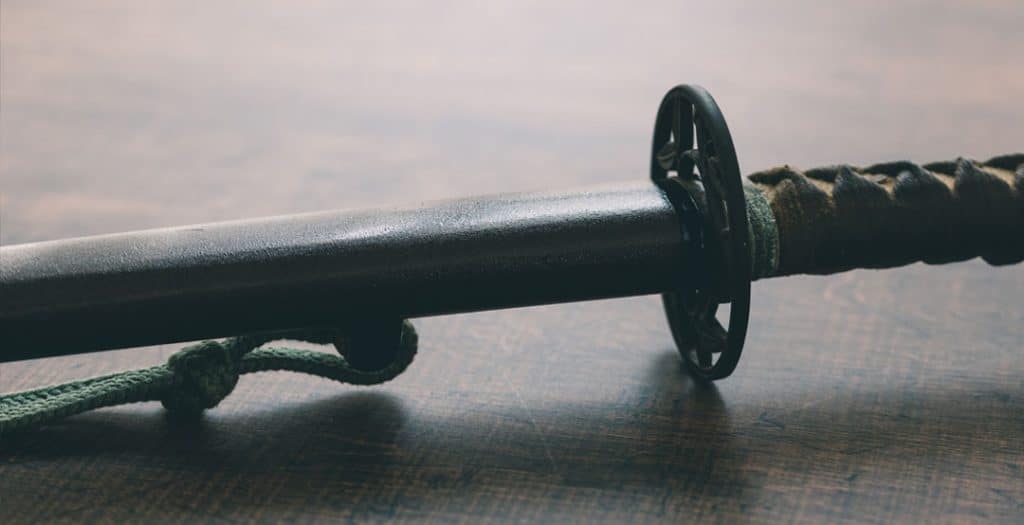
When to buy antique Japanese swords?
When you don’t plan to use the sword but to exhibit it, either in your home or Dojo, and you also recognize the historical value in it.
Also beware of counterfeits as, those are numerous and it is better to consult with an antique expert before purchasing any antique Samurai sword.
Custom Made Swords
The Advantages of Customizing Your Own Sword
We have seen the different markets that exist to which one can turn when looking for a sword. Each with its advantages and disadvantages.
What we are about to see is a variant of the market of hand forged swords, and that is that of customization.
All custom swords are hand forged, so you can expect them to be fully functional and affordable, depending on their components.
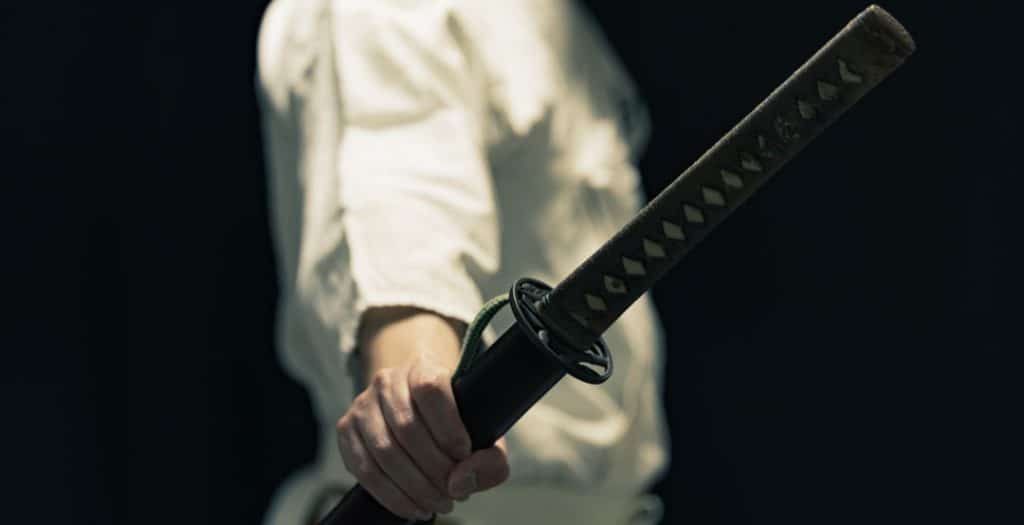
Here, from the quality of the steel to the design of the sword, it’s up to you to decide what you want.
You can bring out your creative side and create a unique sword that reflects your ideals -with your colours, your animals, and even engraving the phrase you want on it.
Or, if you’re a practical person, you’ll be happy to know that you have total control over the blade and the procedures it goes through.
Sword Customization Options
Using our designated forms that can be found on each sword below, you can start creating your custom sword as per your specs, requirements and needs. or scroll down to get a sneak peek on the future of Samurai swords customization.
Samurai Swords Store App
If you have a little time, you can create an exclusive sword for yourself like the one you’ve always wanted.
You can start customizing your own Samurai sword right now
It’s easy and fun.
Try it now!

